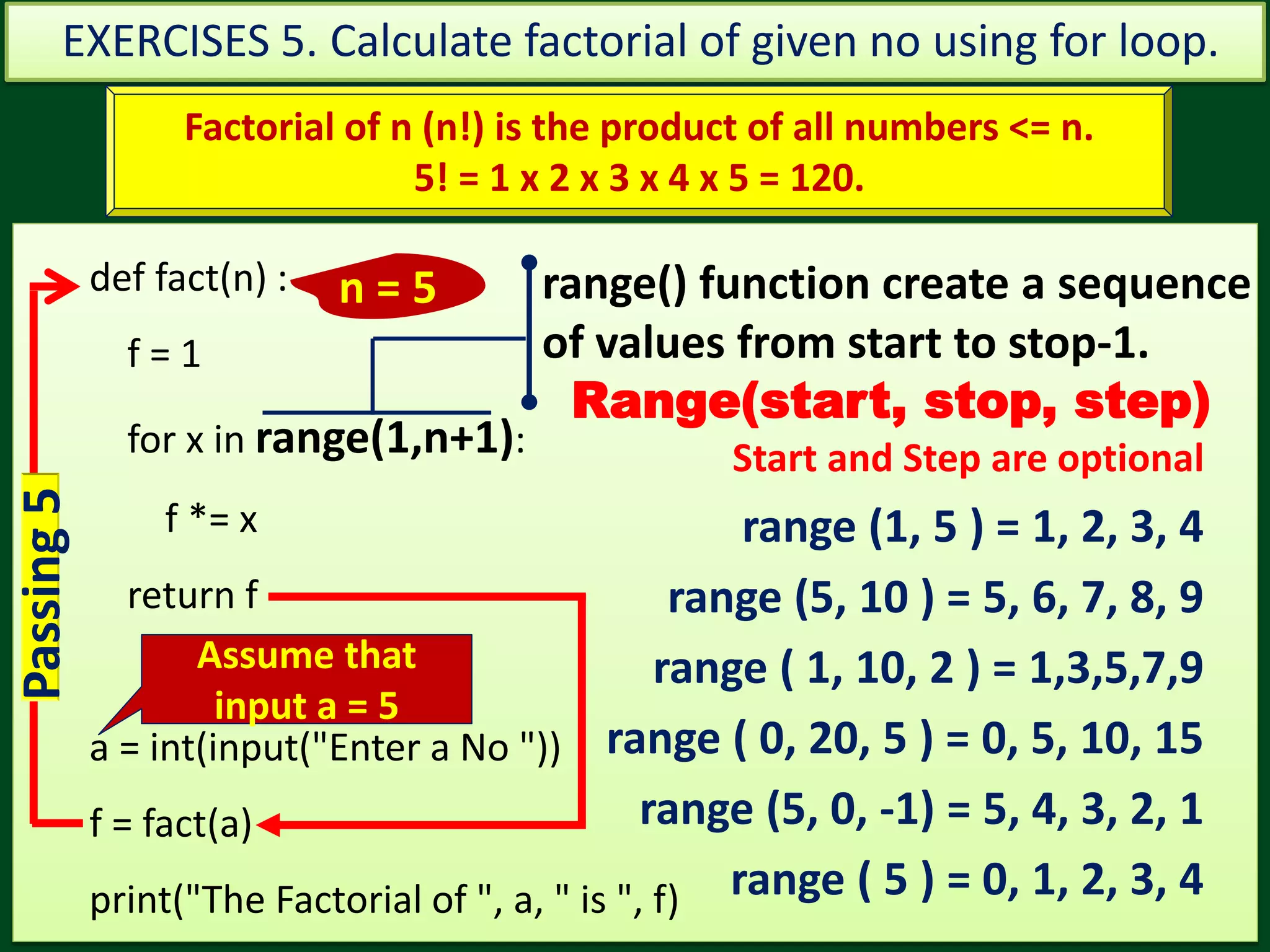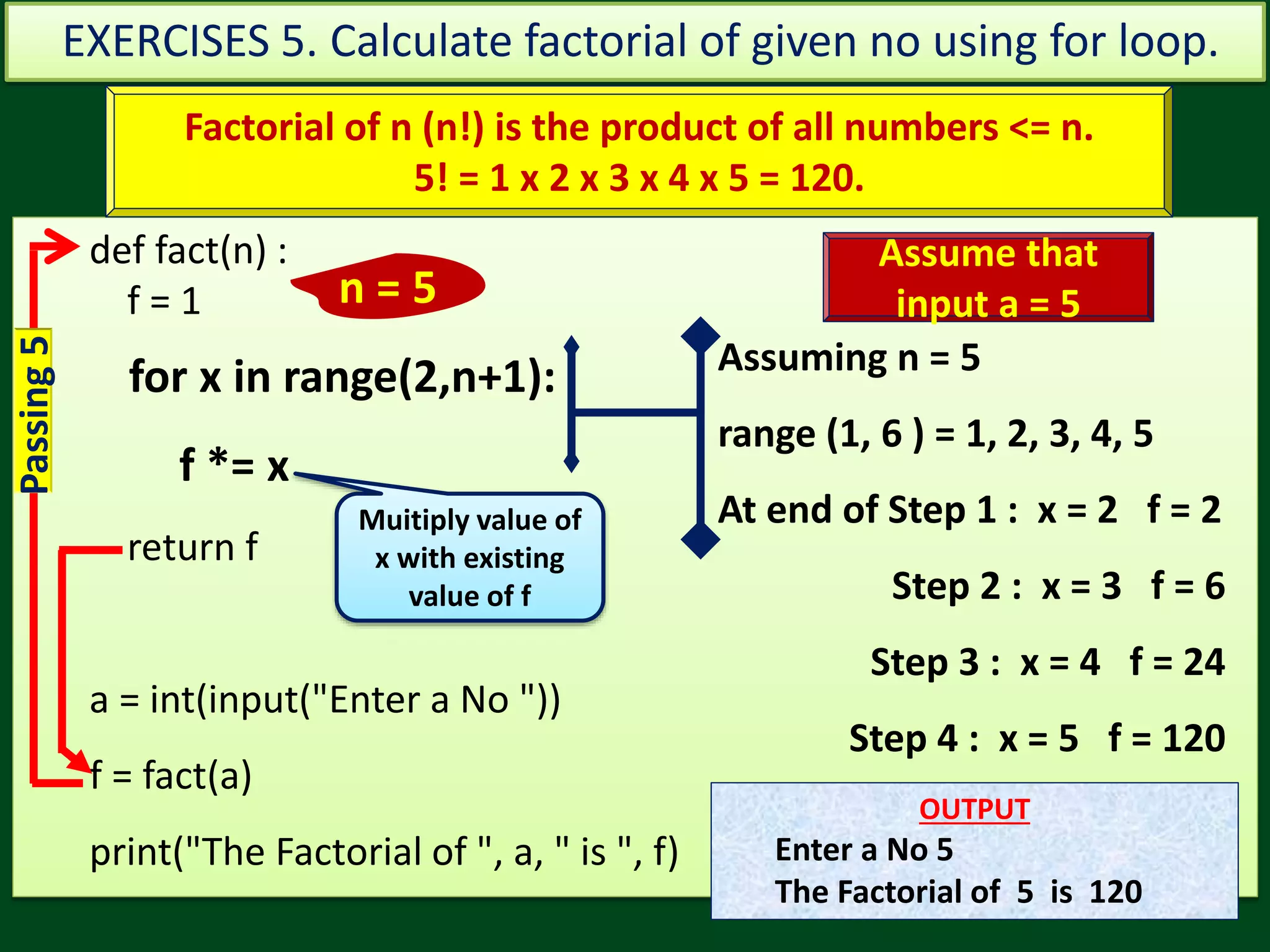The document discusses different types of functions in programming. It explains that built-in functions are predefined, modular functions are contained in imported modules, and user-defined functions are created using the def keyword. It also discusses function definitions, calling functions, arguments, parameters, and the return statement. Functions can accept inputs, perform tasks, and produce outputs.


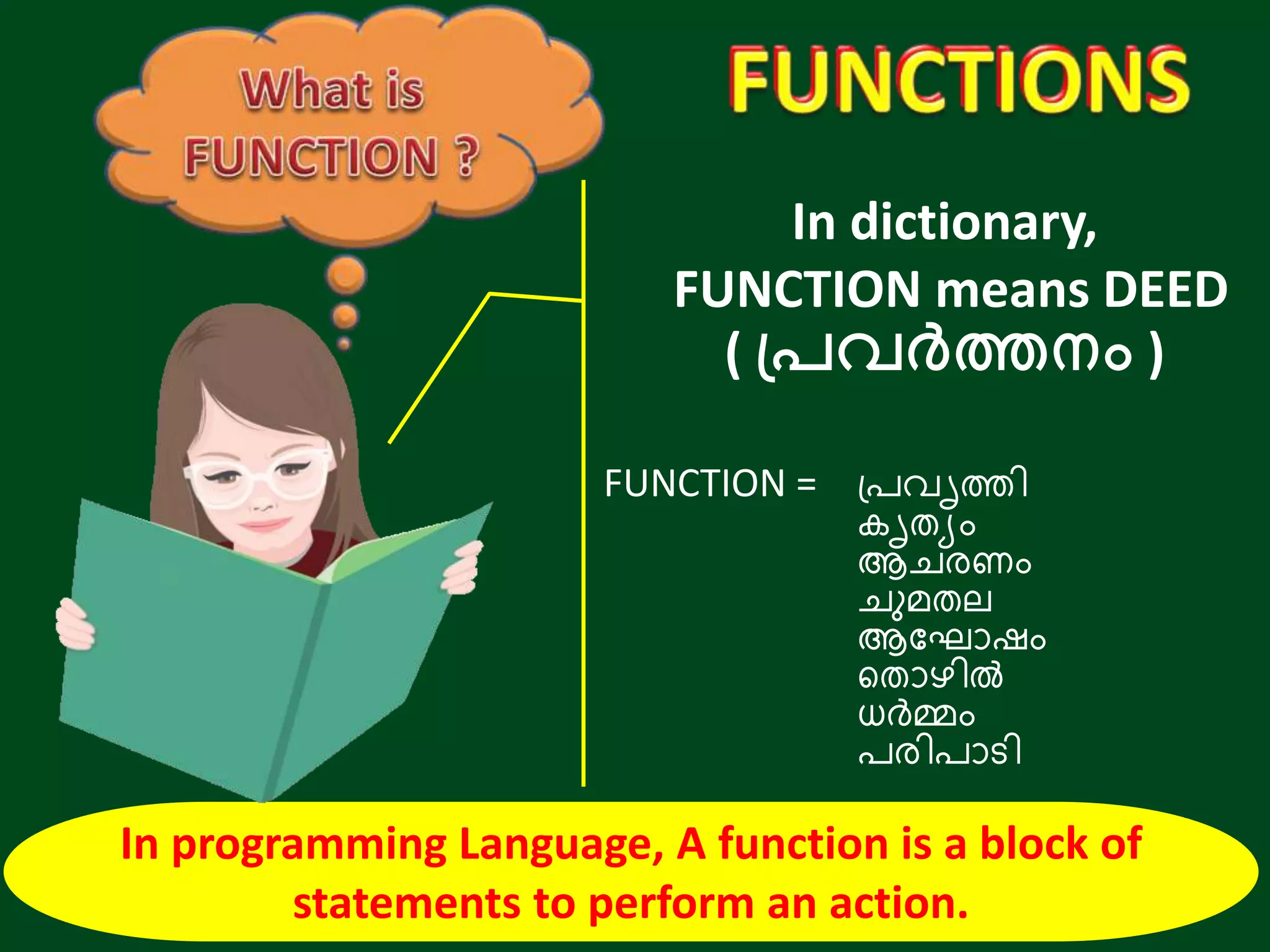




![def greatest ( List ) : max = List[0] for val in List[1:] : if val > max : max = val return max eval(input("Ent greatest(a)](https://image.slidesharecdn.com/july25-200710150850/75/FUNCTIONS-IN-PYTHON-CBSE-2-COMPUTER-SCIENCE-8-2048.jpg)


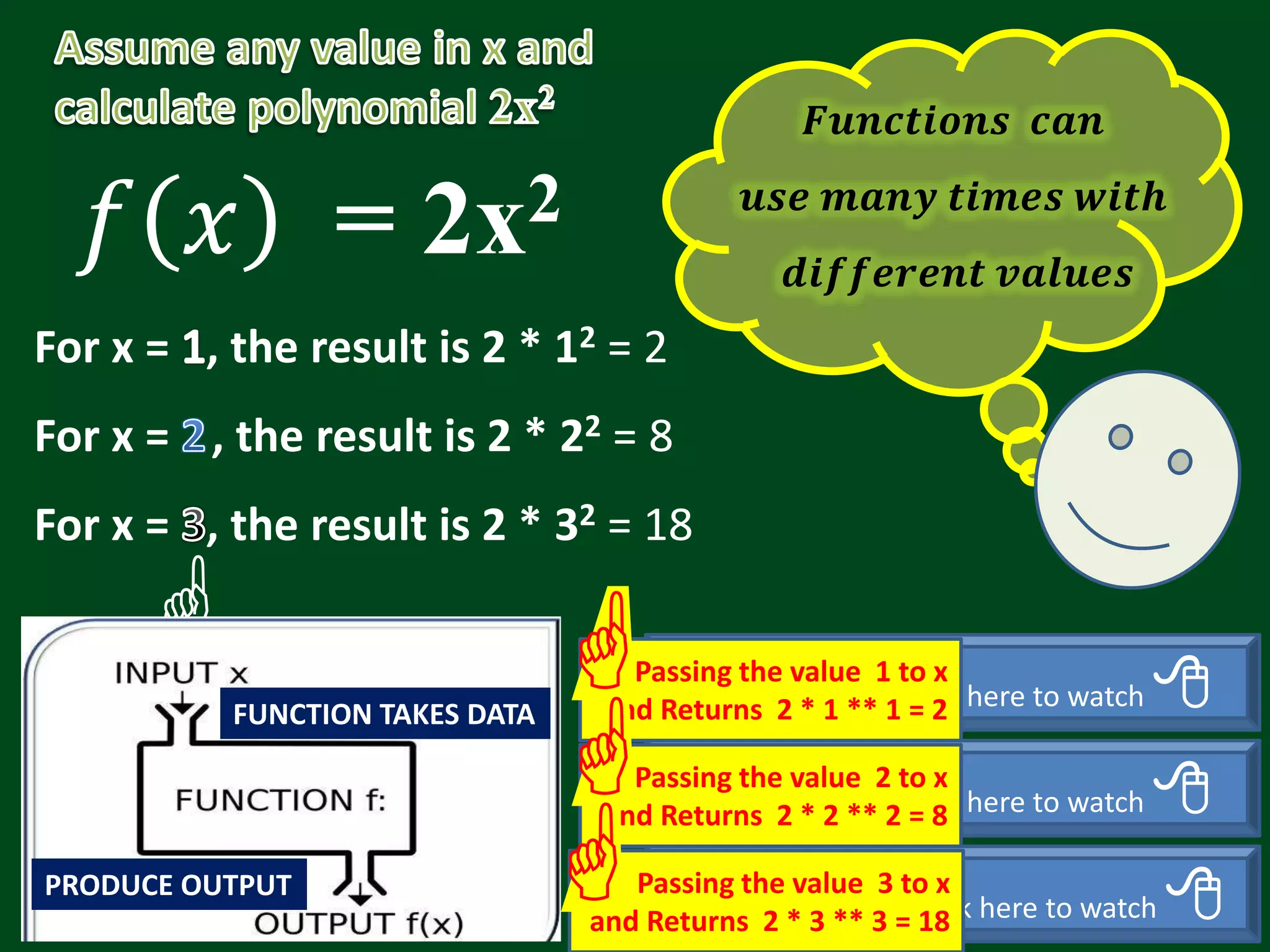

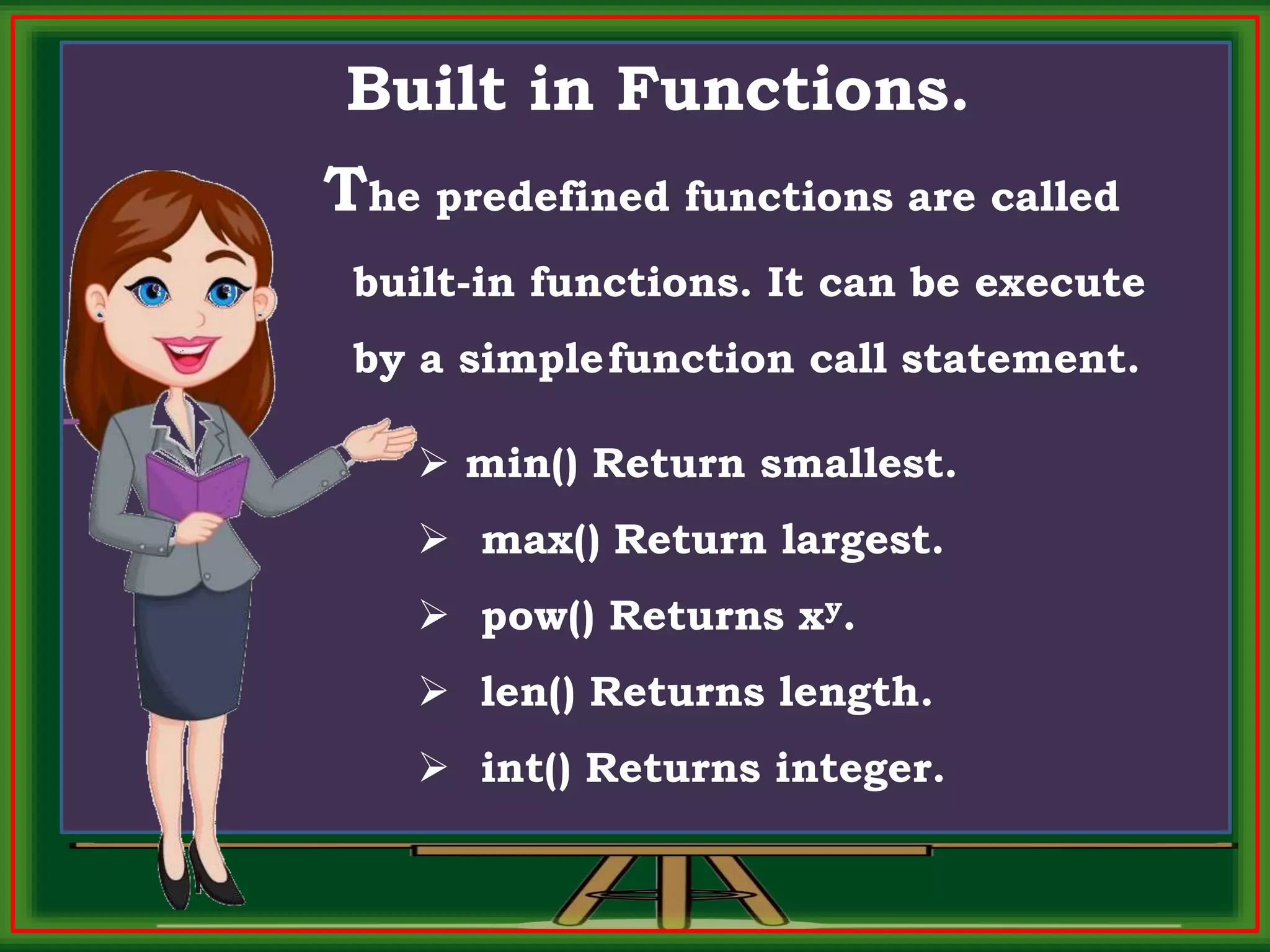
![Python 3.7.4 (tags/v3.7.4:e09359112e, Jul 8 2019, 19:29:22) [MSC v.1916 32 bit (Intel)] on win32 Type "help", "copyright", "credits" or "license()" for more information. >>> min(10,-20) -20 >>> max(-25,80) 80 >>> pow(2,3) 8 >>> len("ANIL") 4 >>> int(3.14) 3](https://image.slidesharecdn.com/july25-200710150850/75/FUNCTIONS-IN-PYTHON-CBSE-2-COMPUTER-SCIENCE-14-2048.jpg)
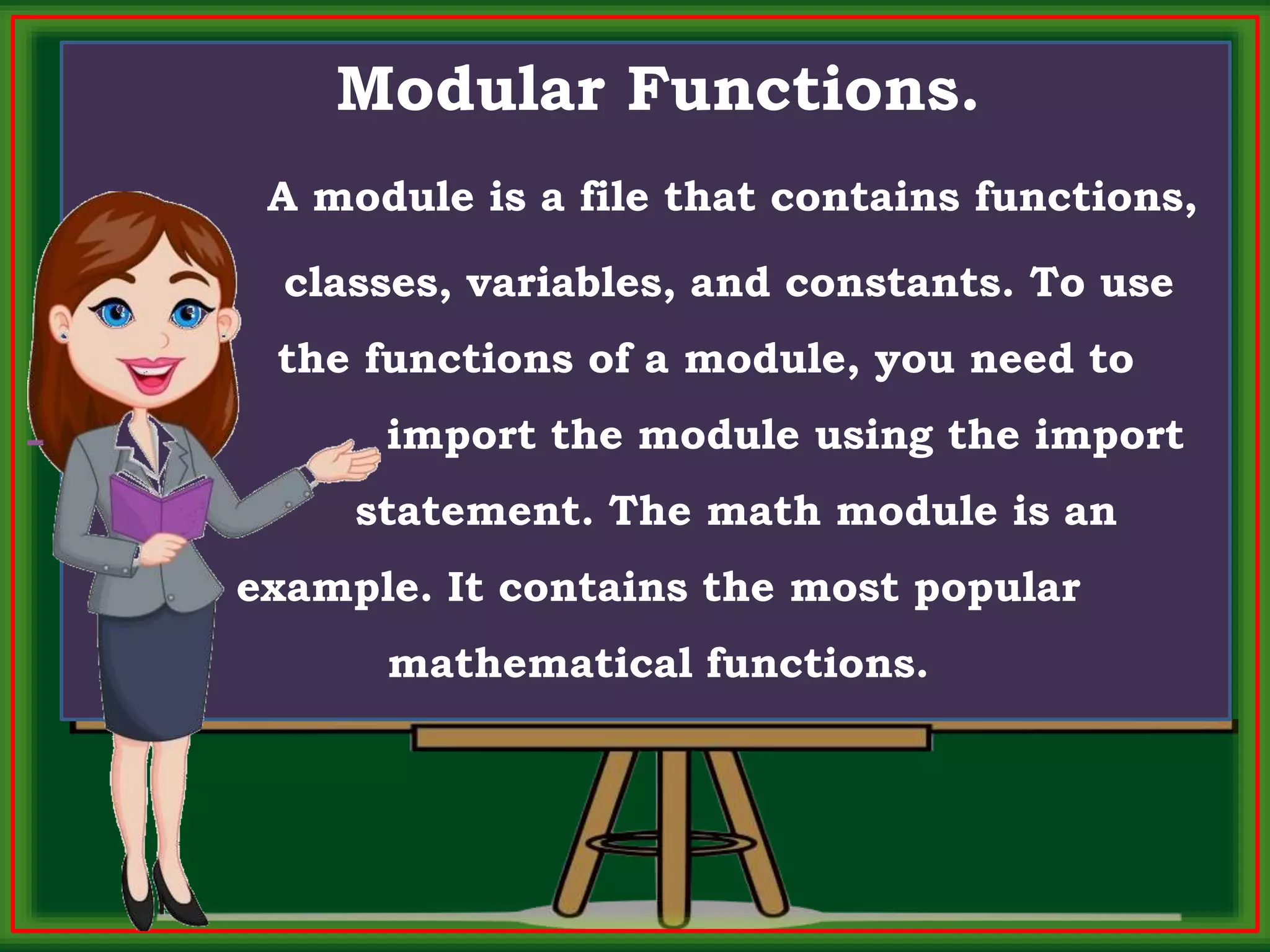
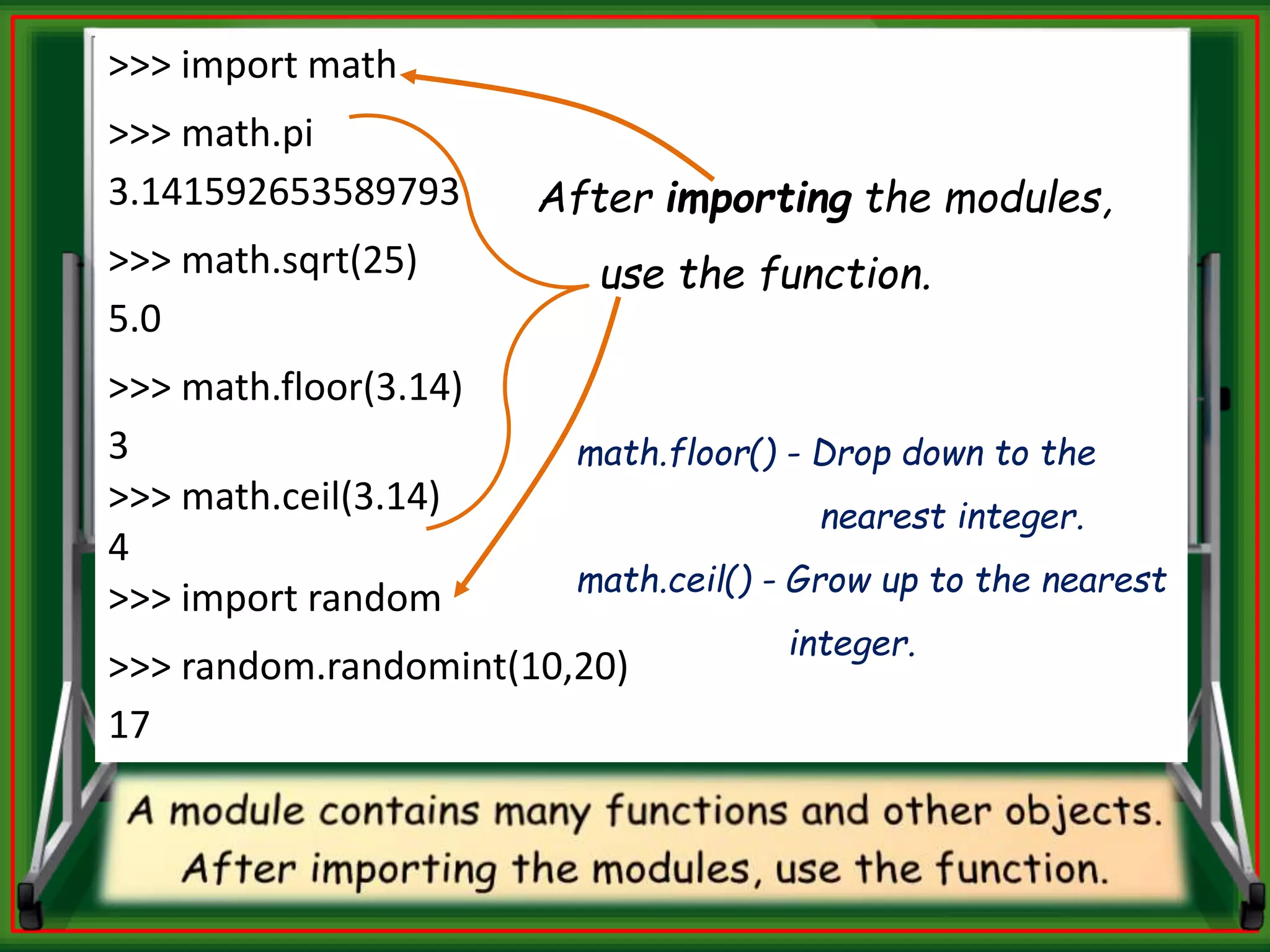

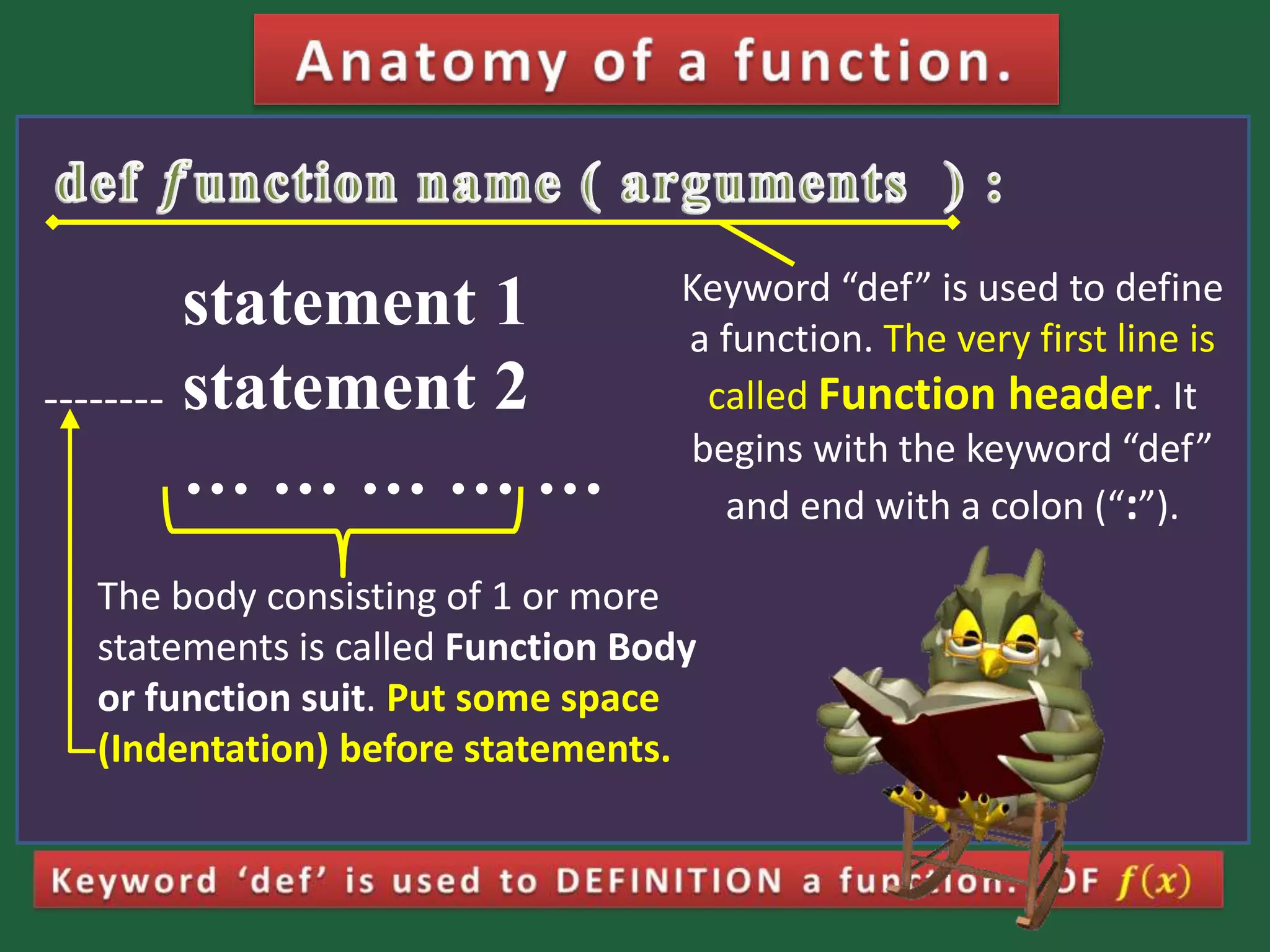
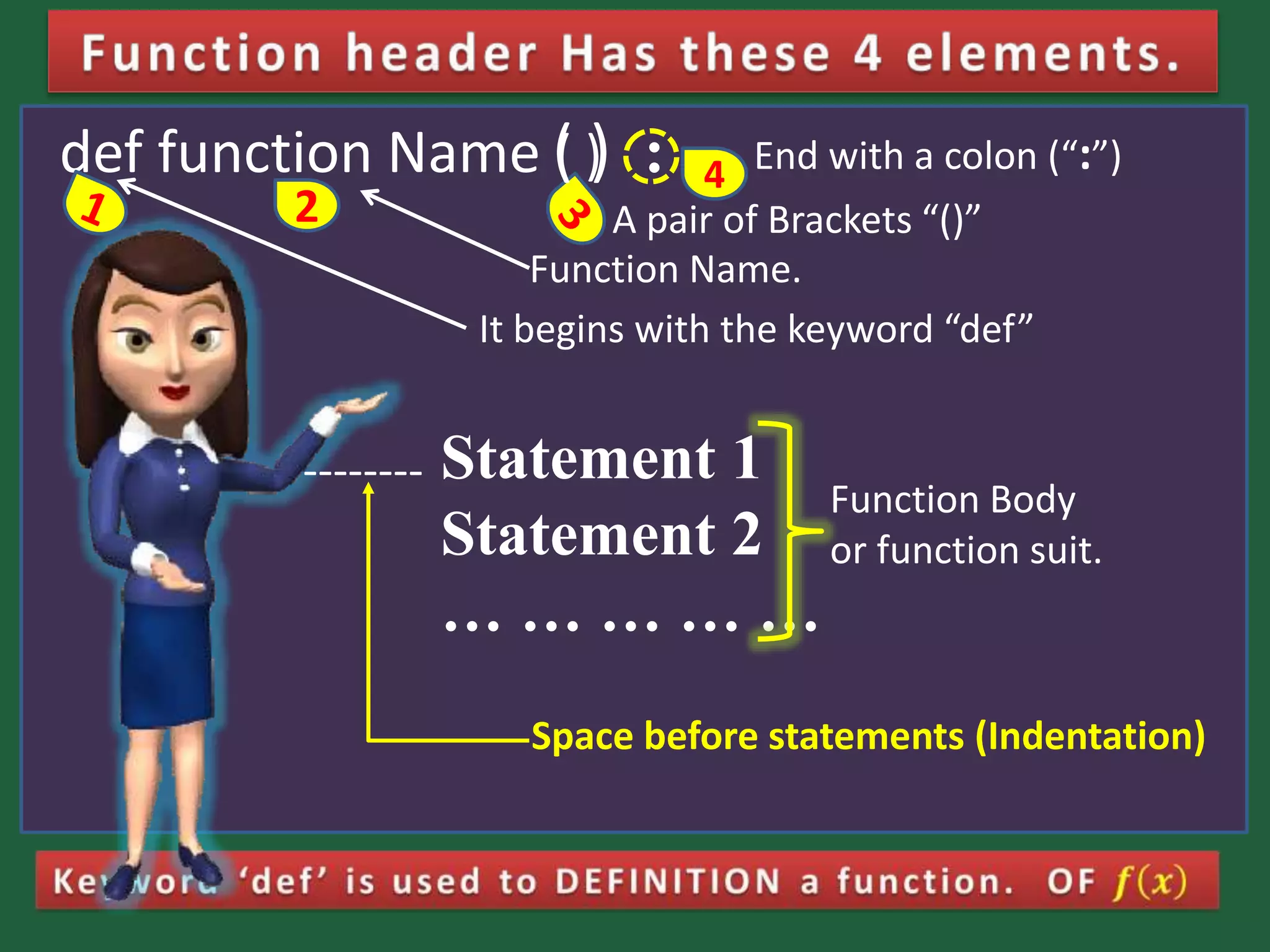




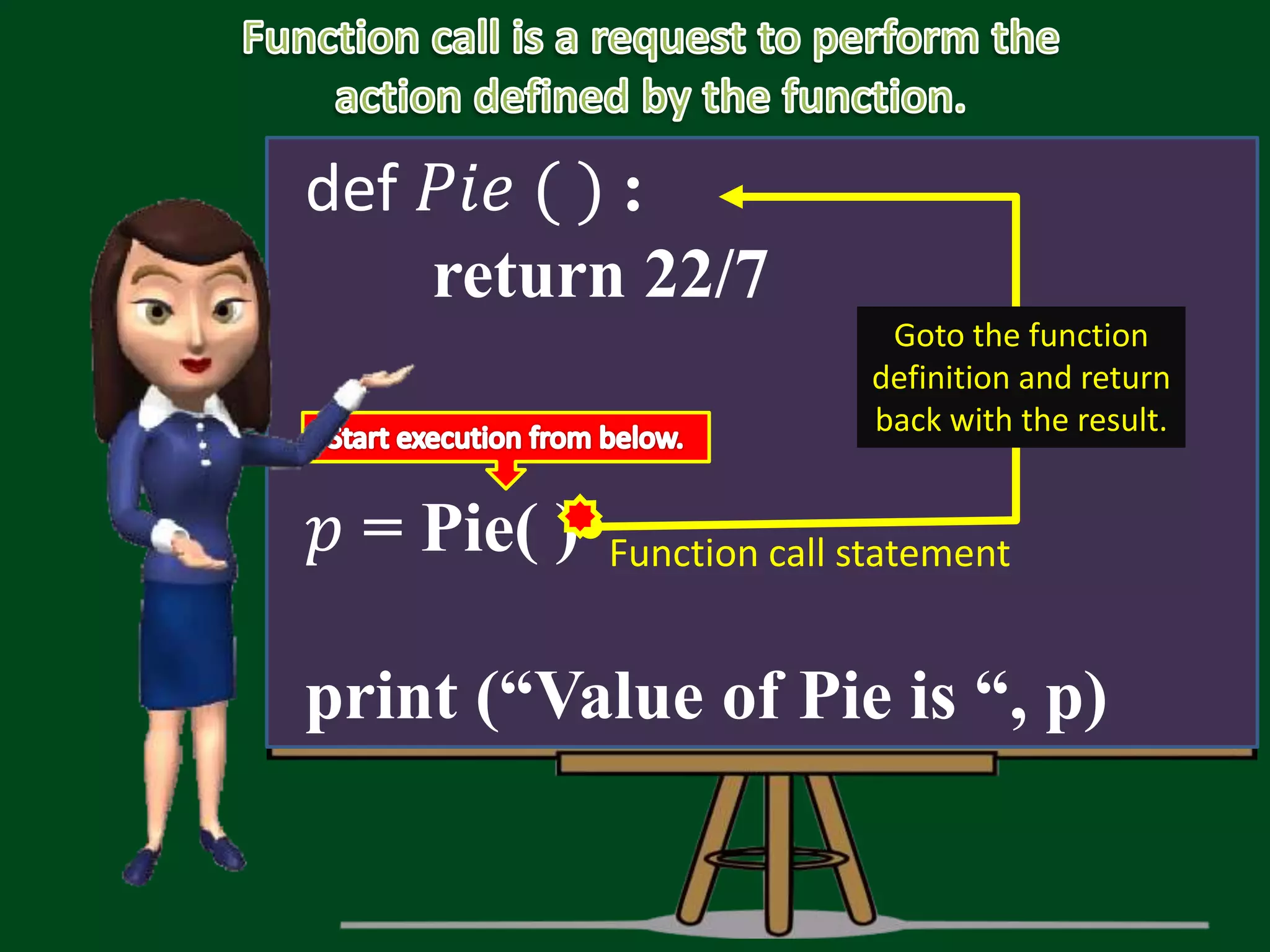
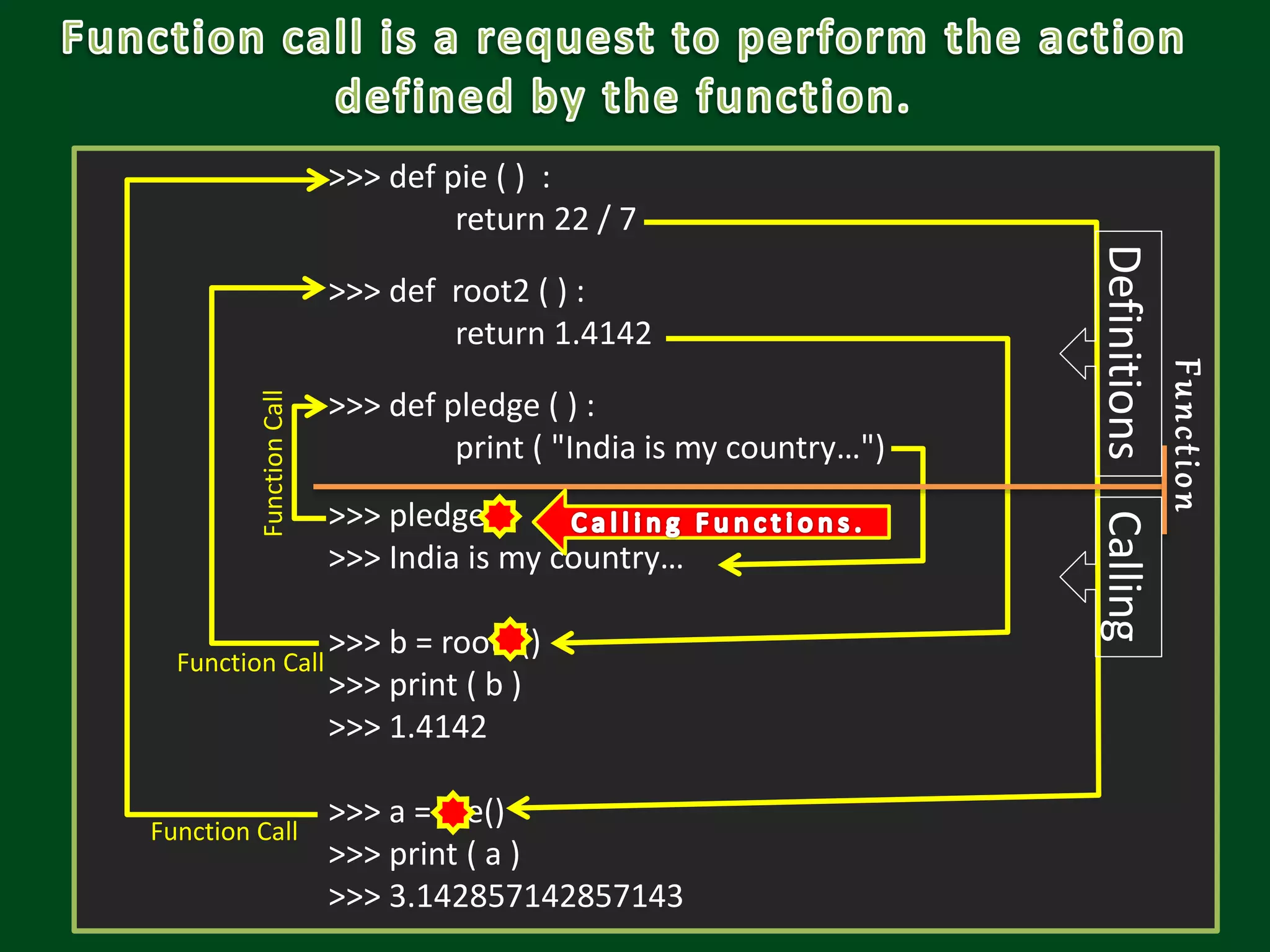
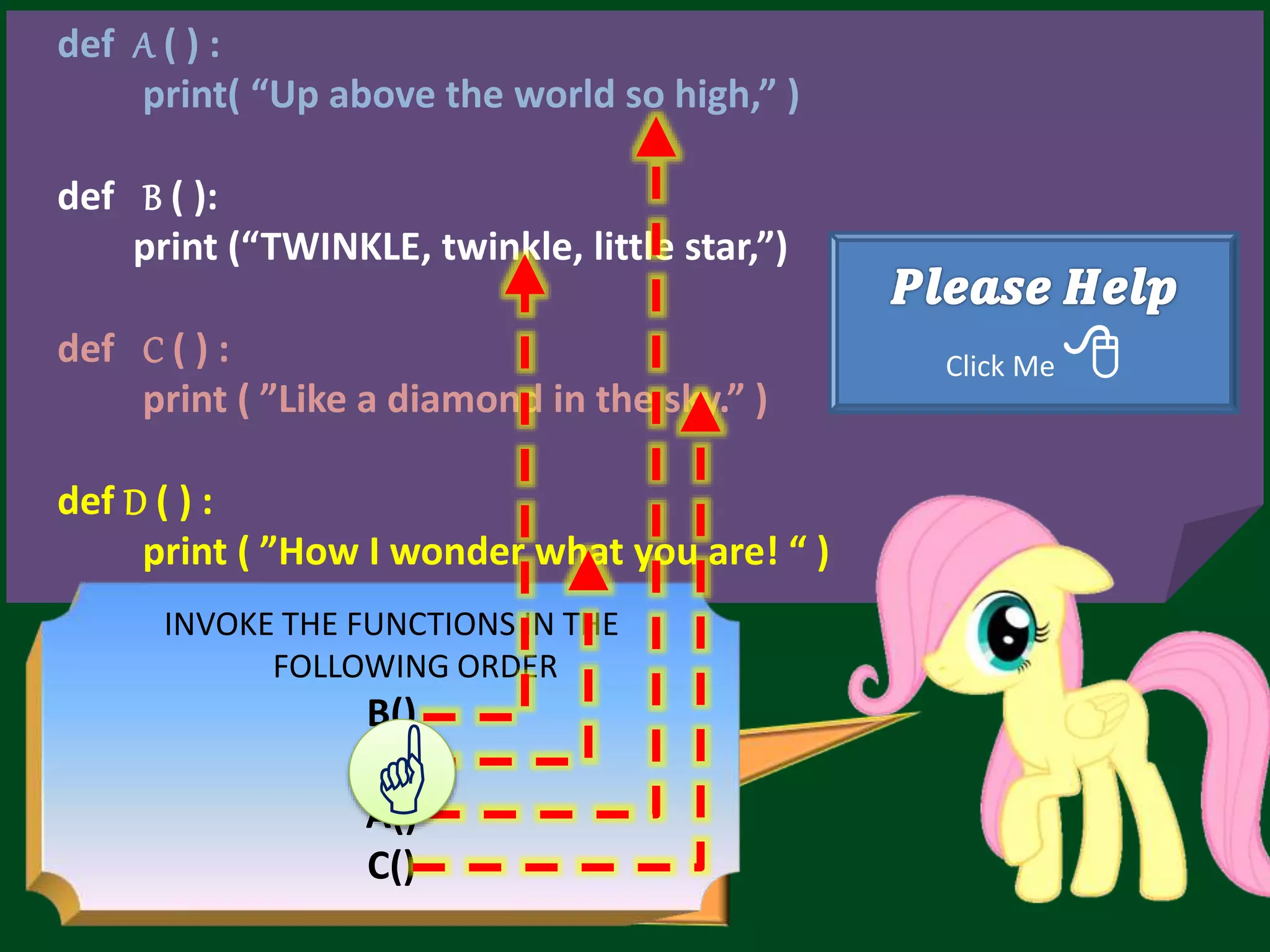
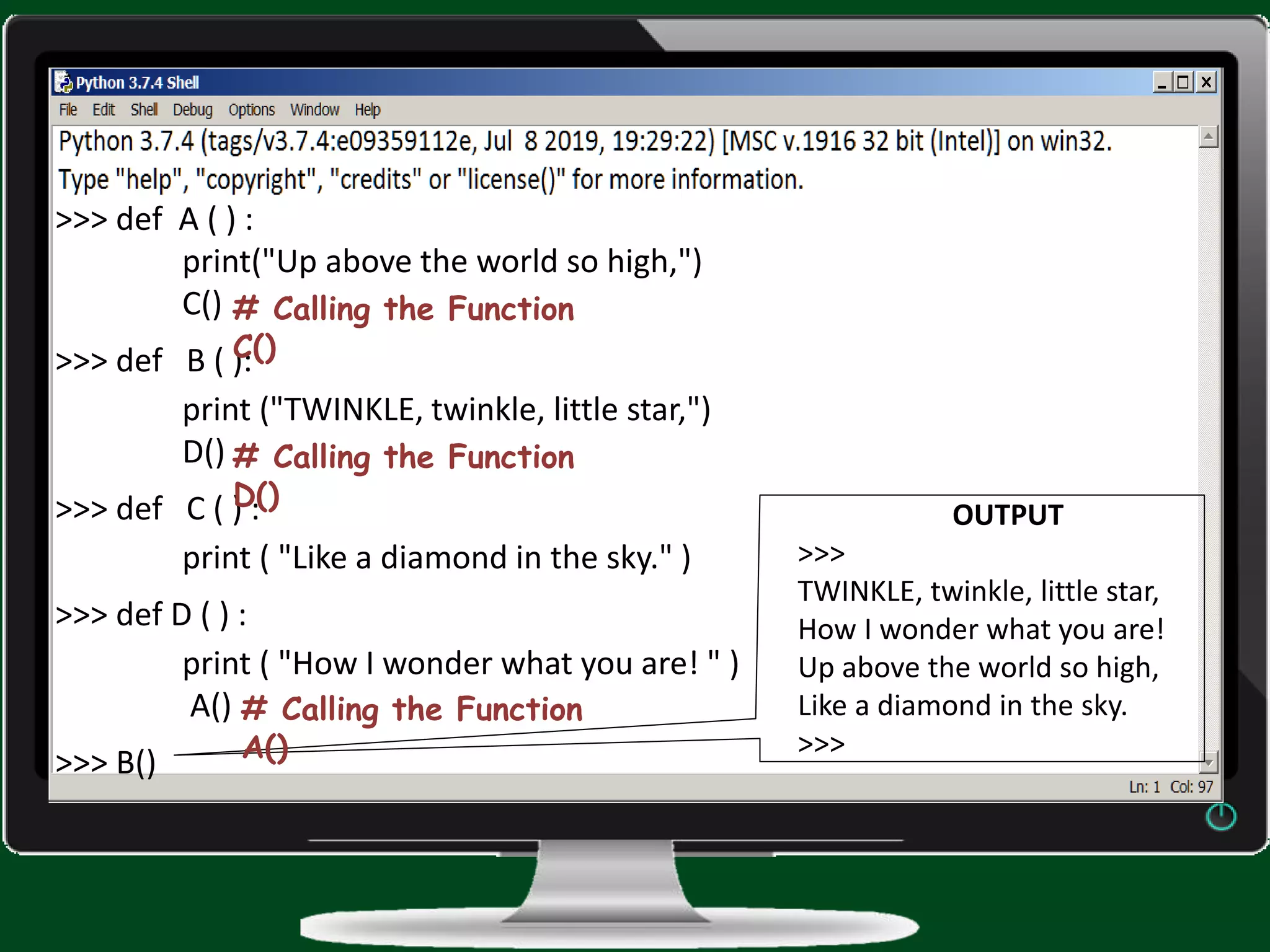

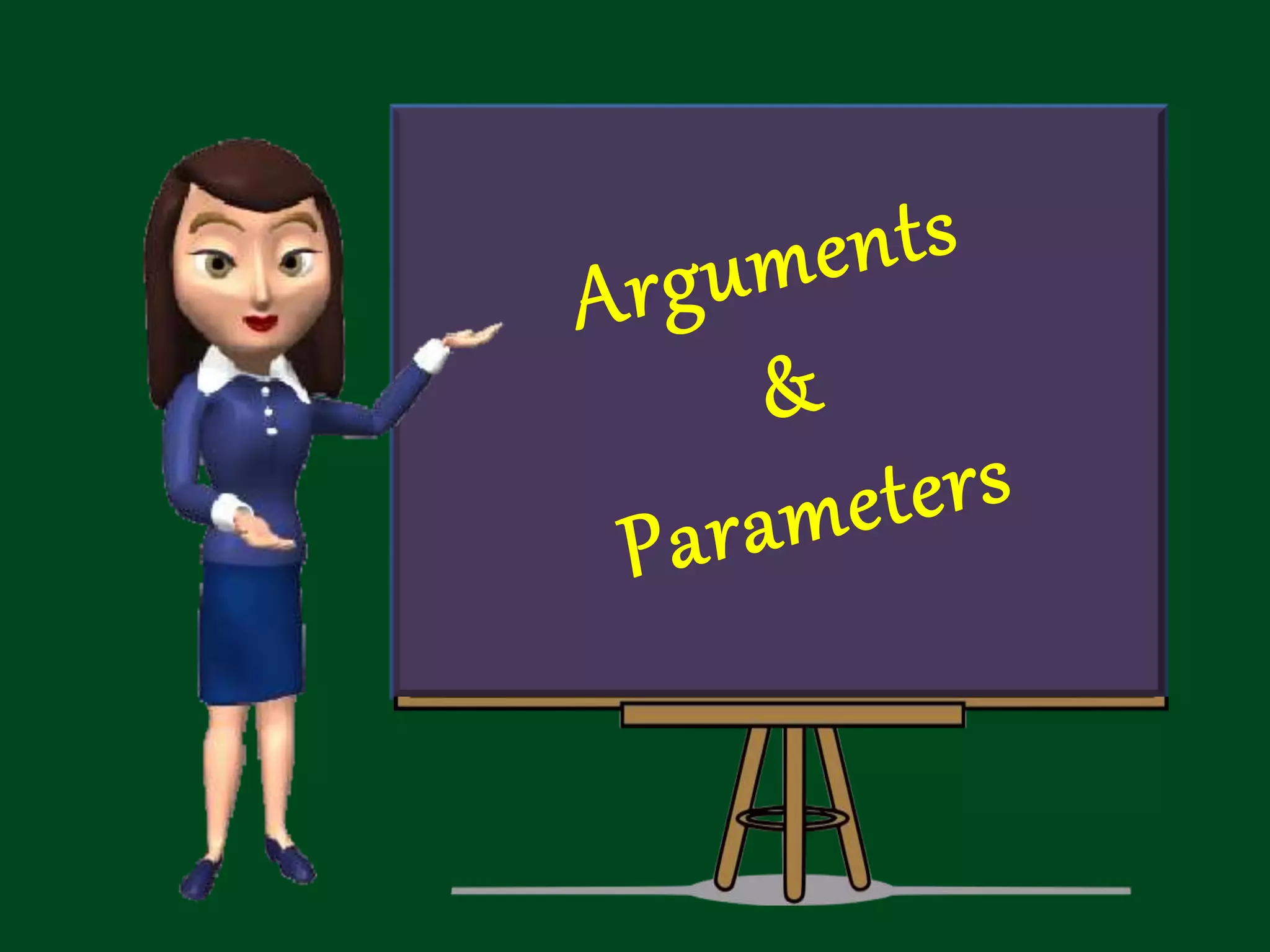

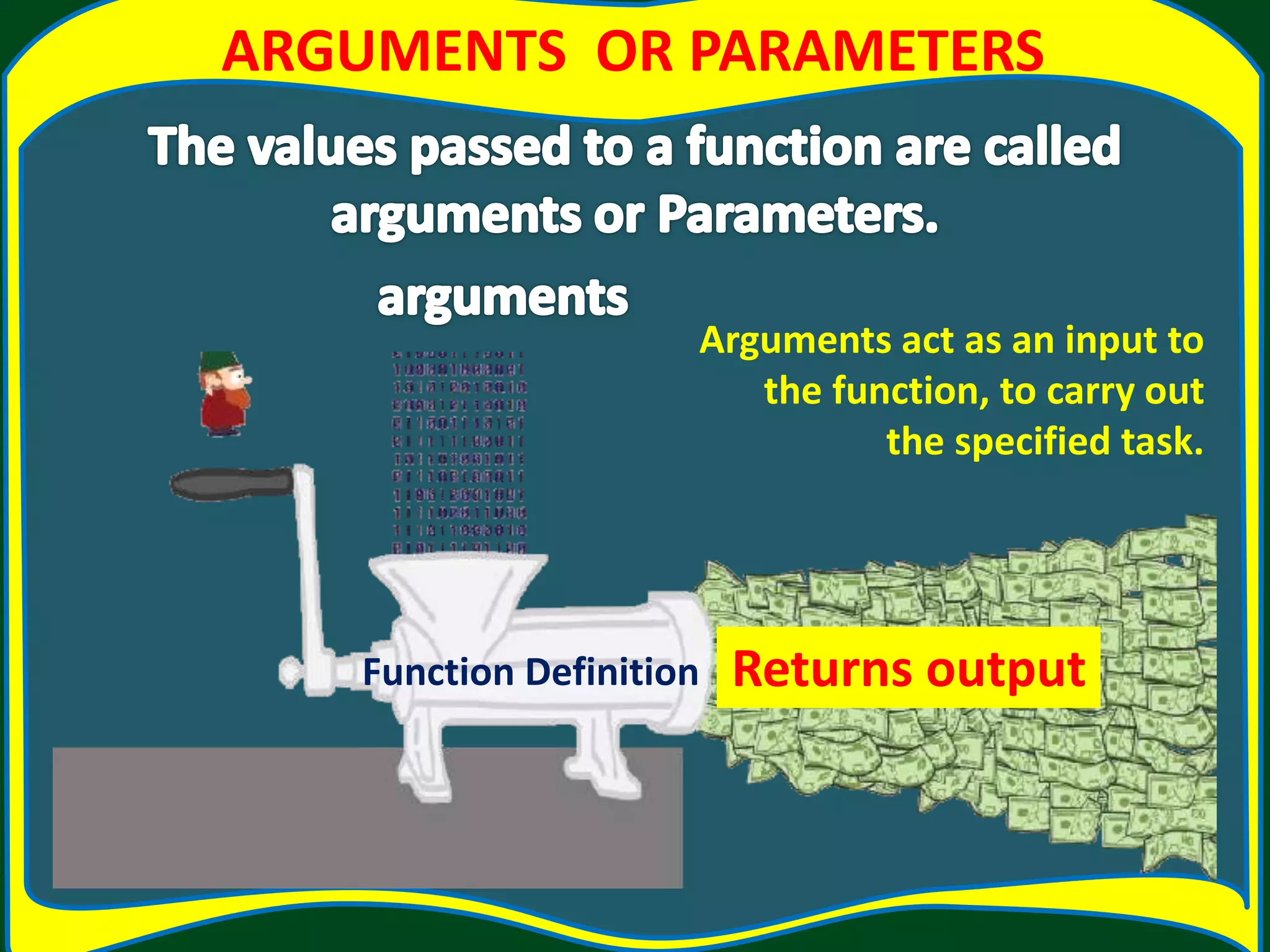
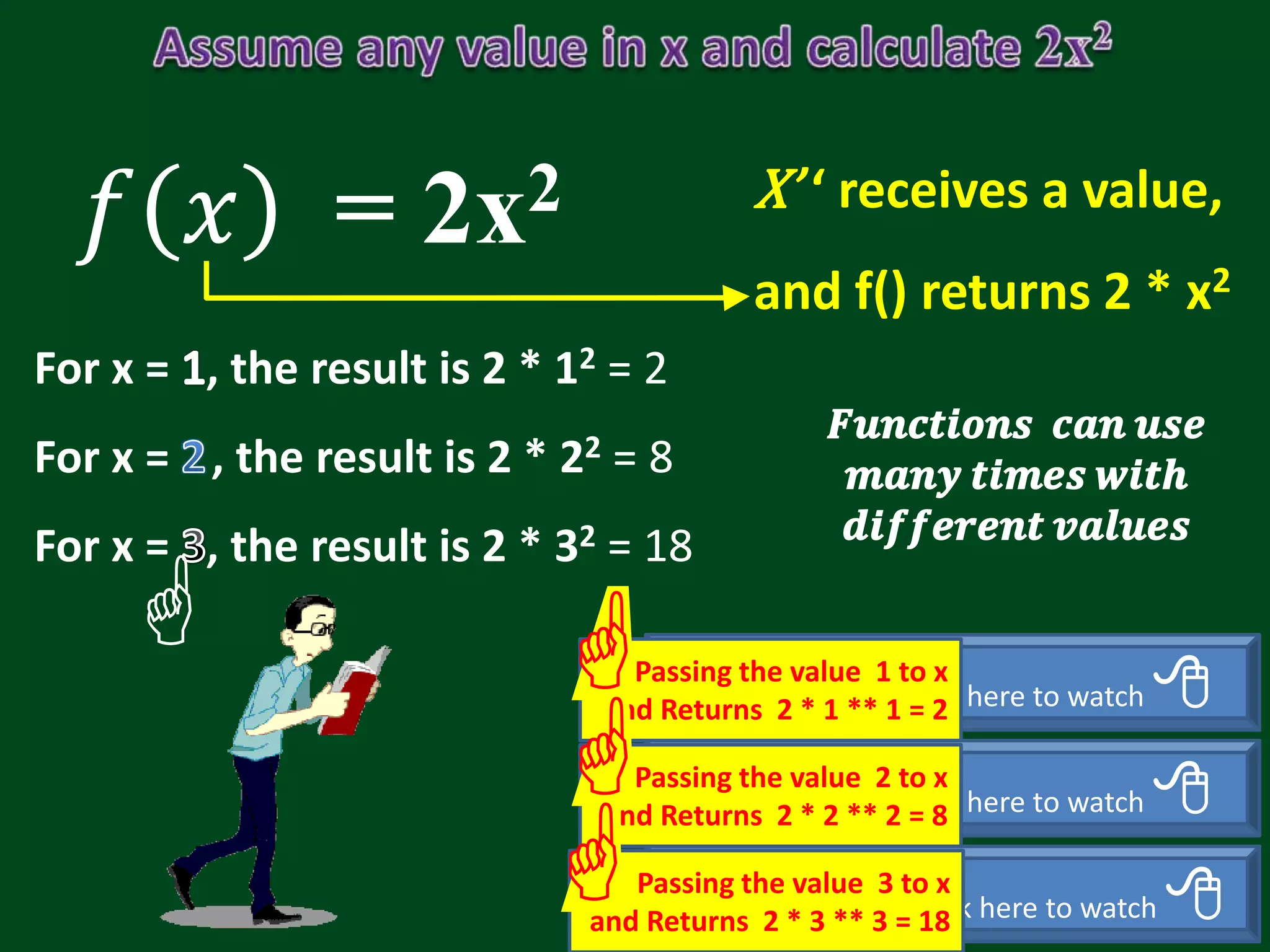
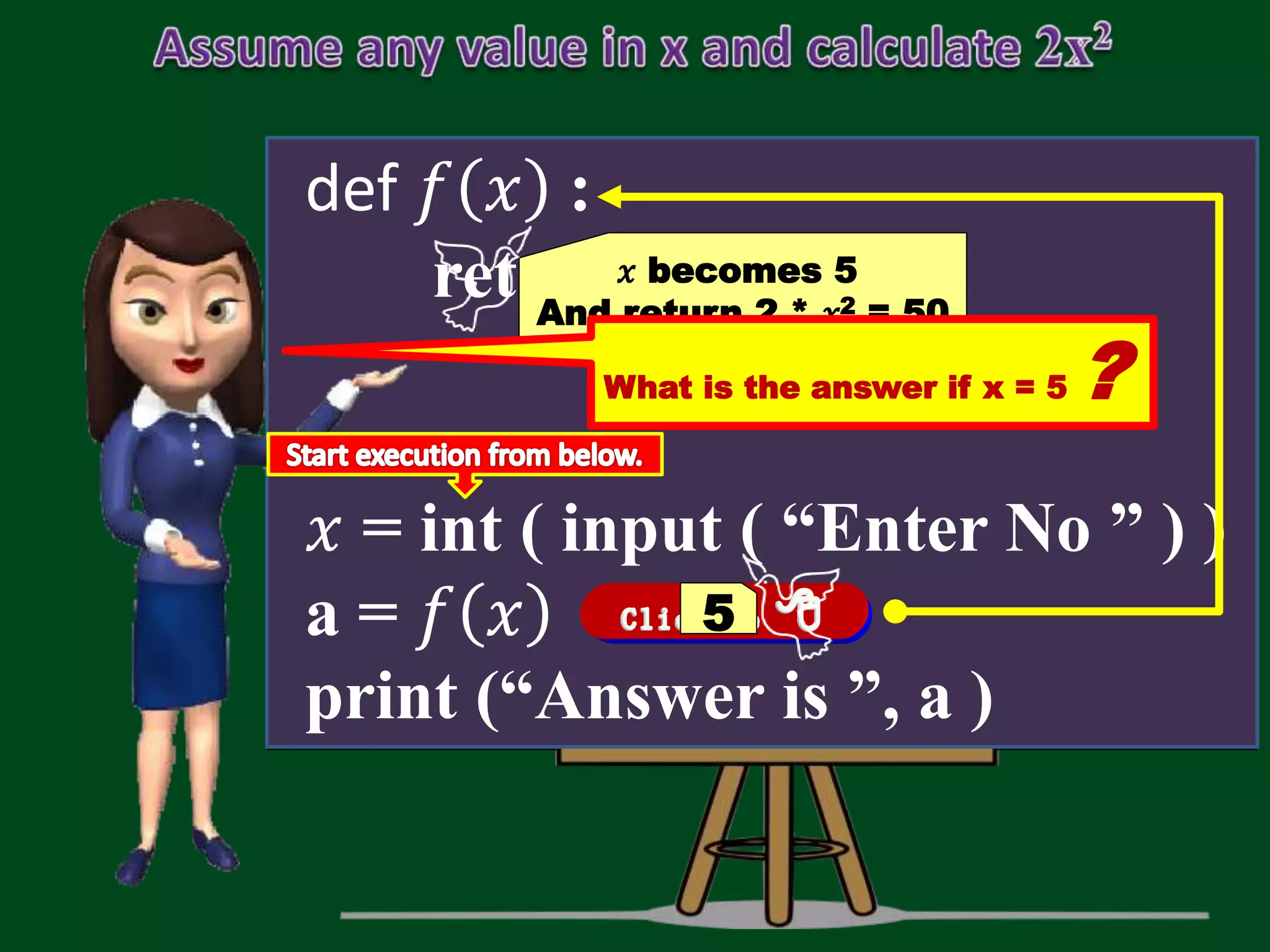
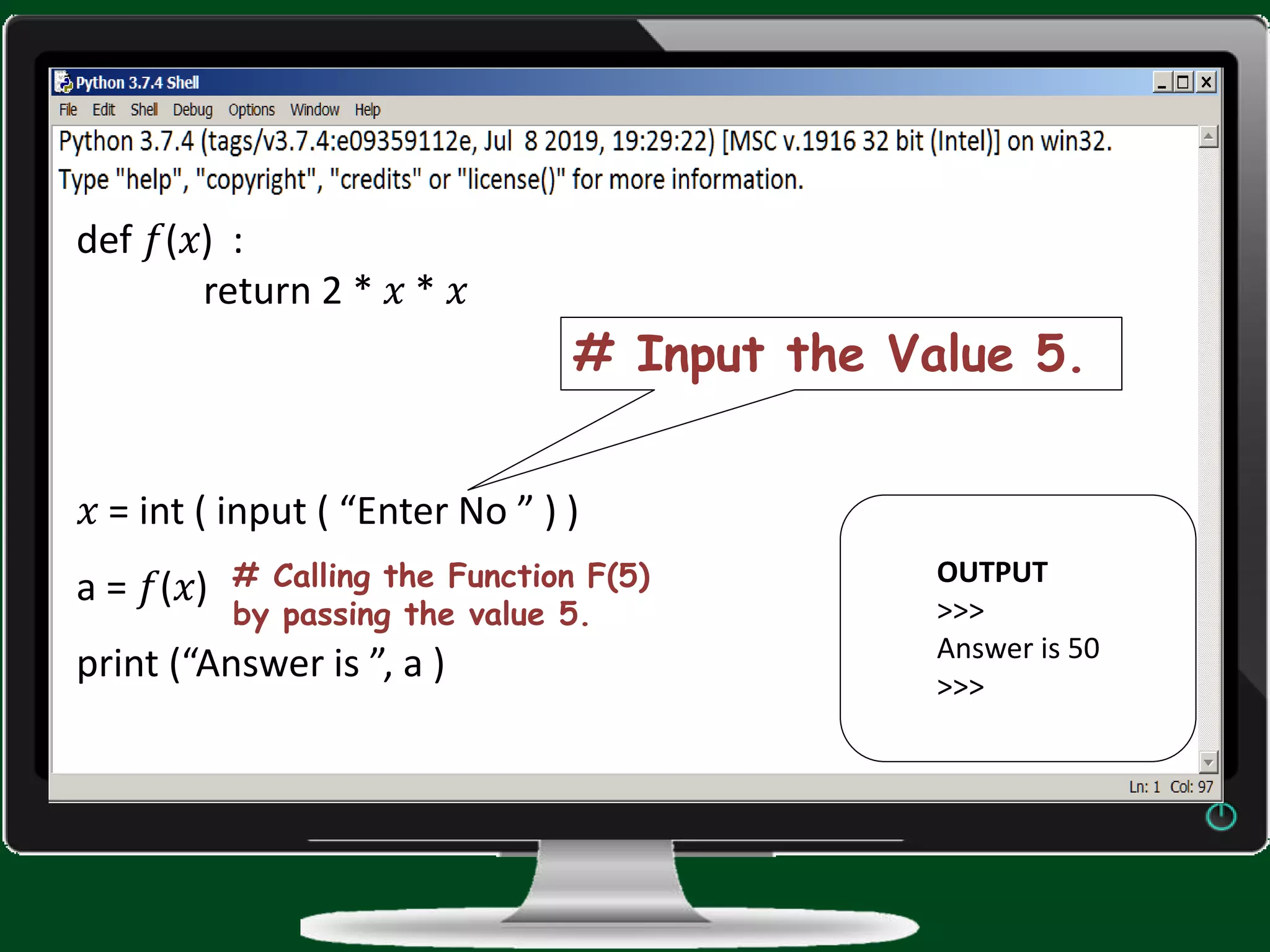
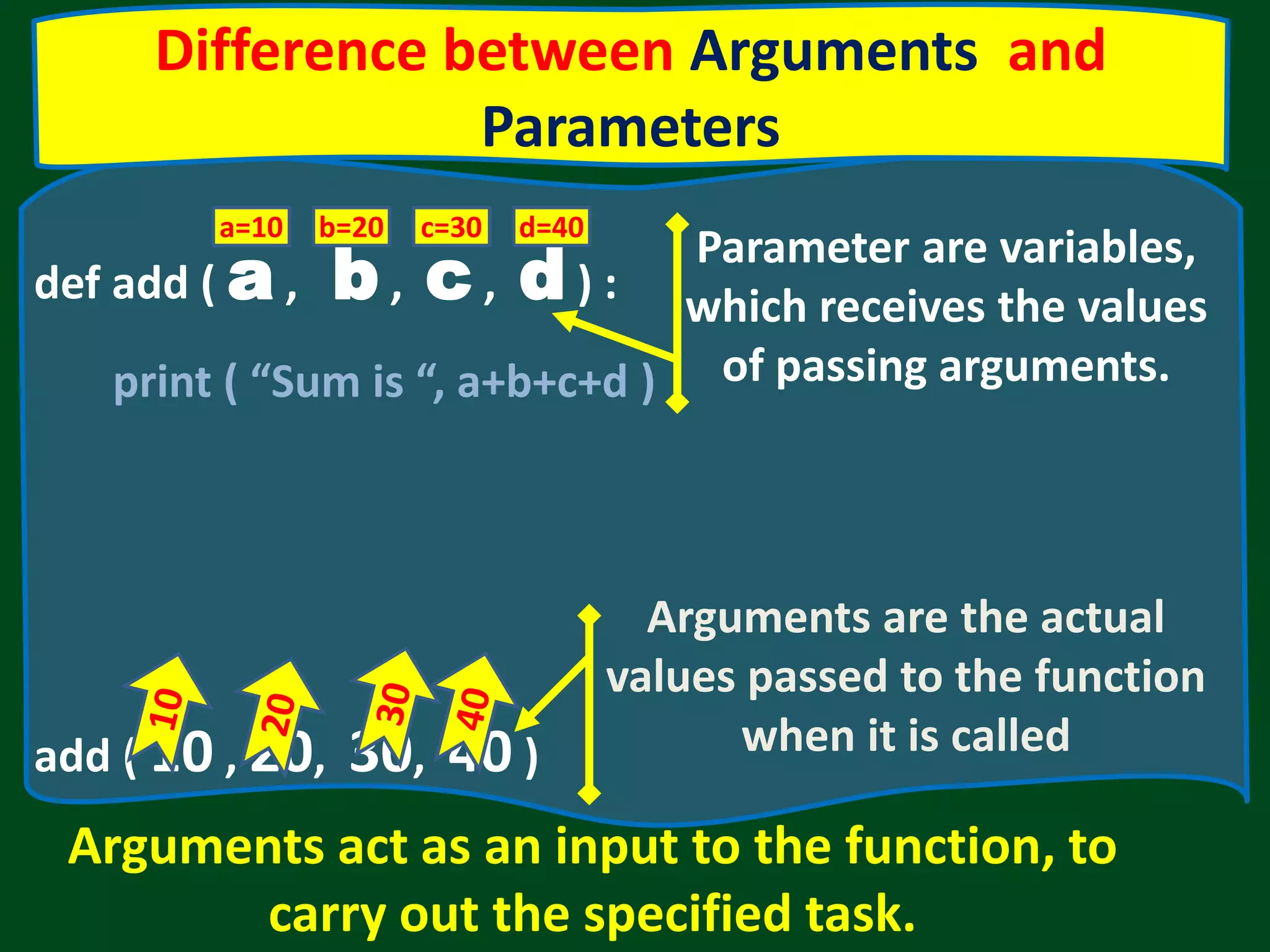
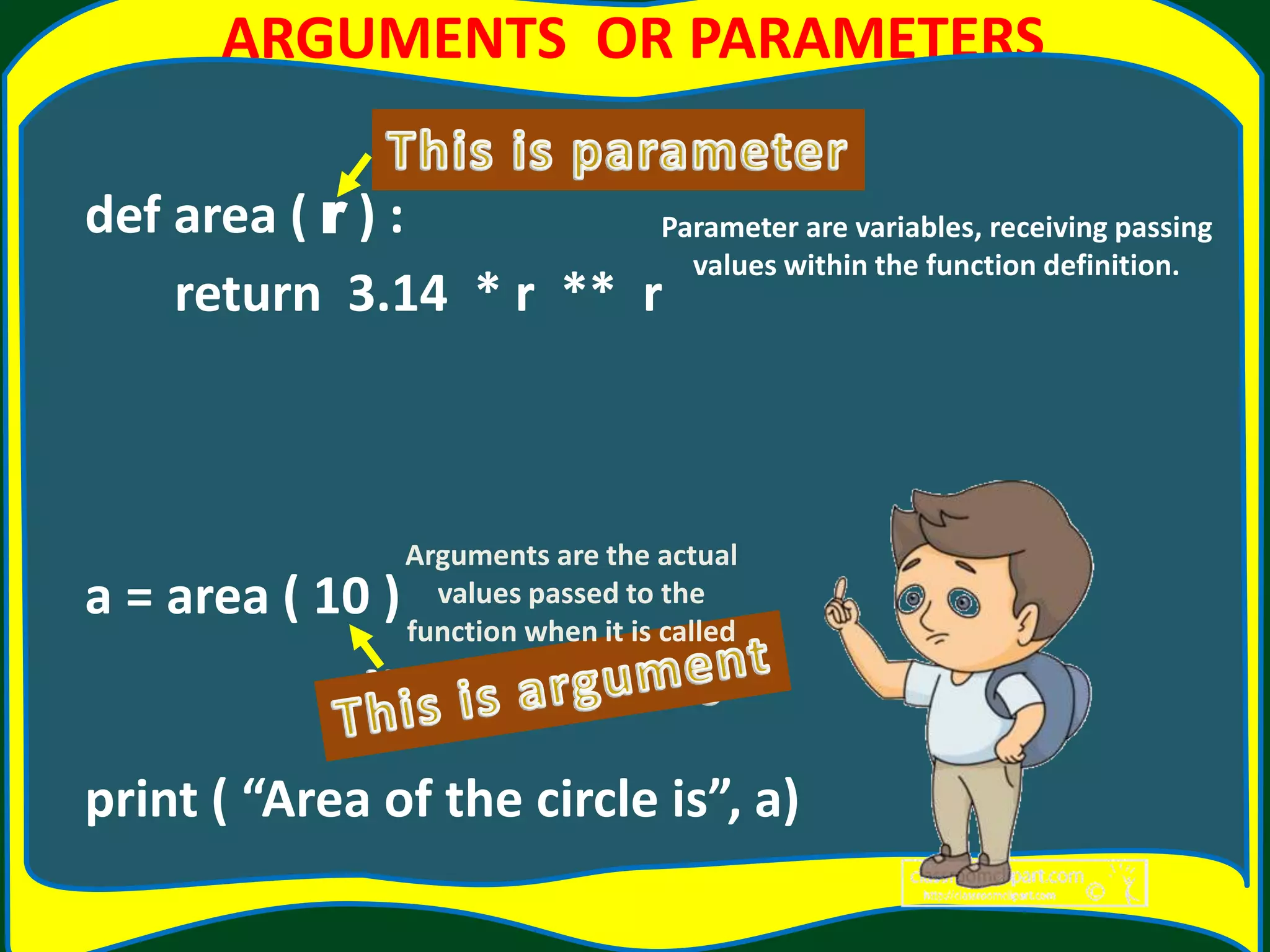
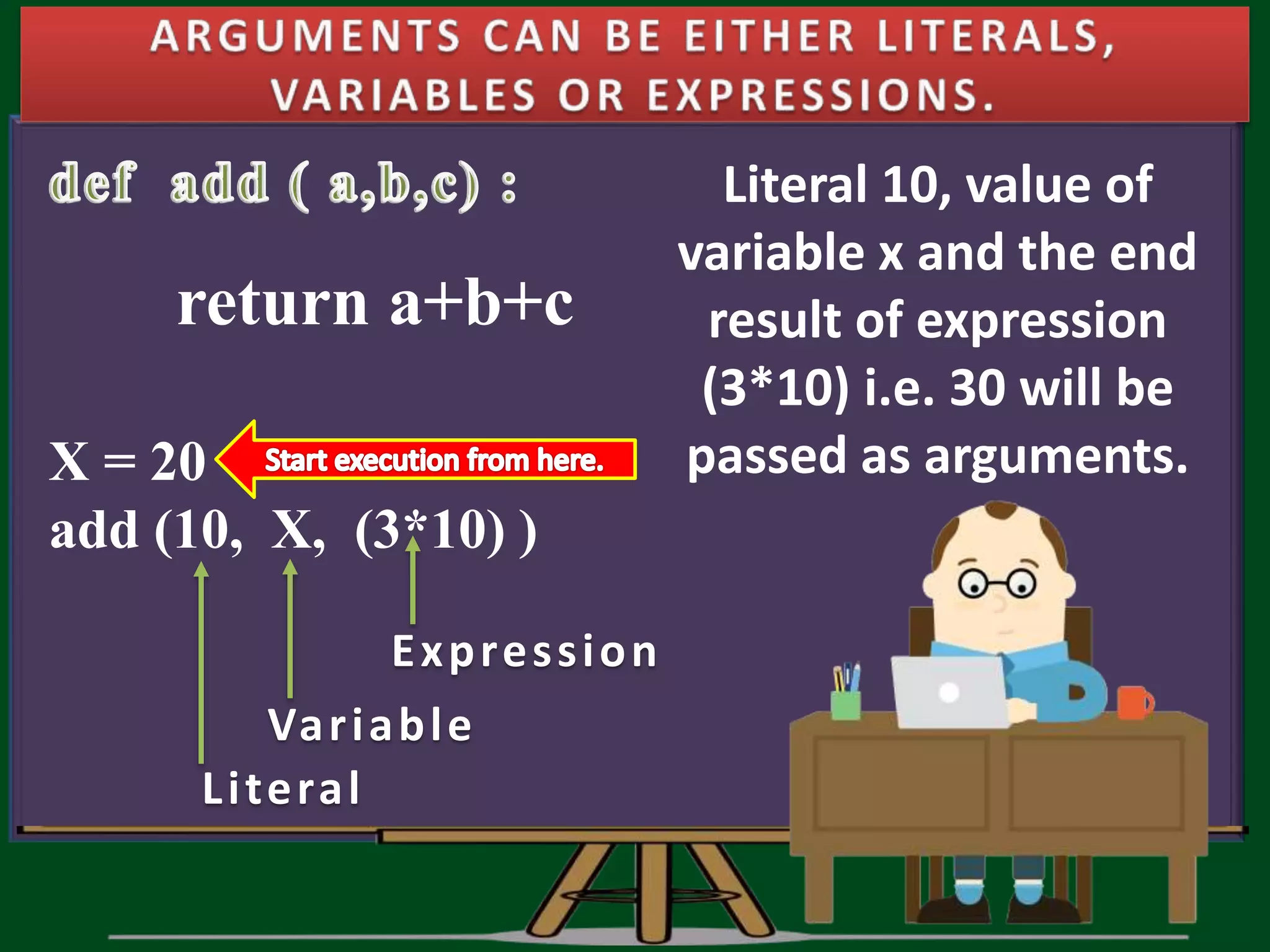

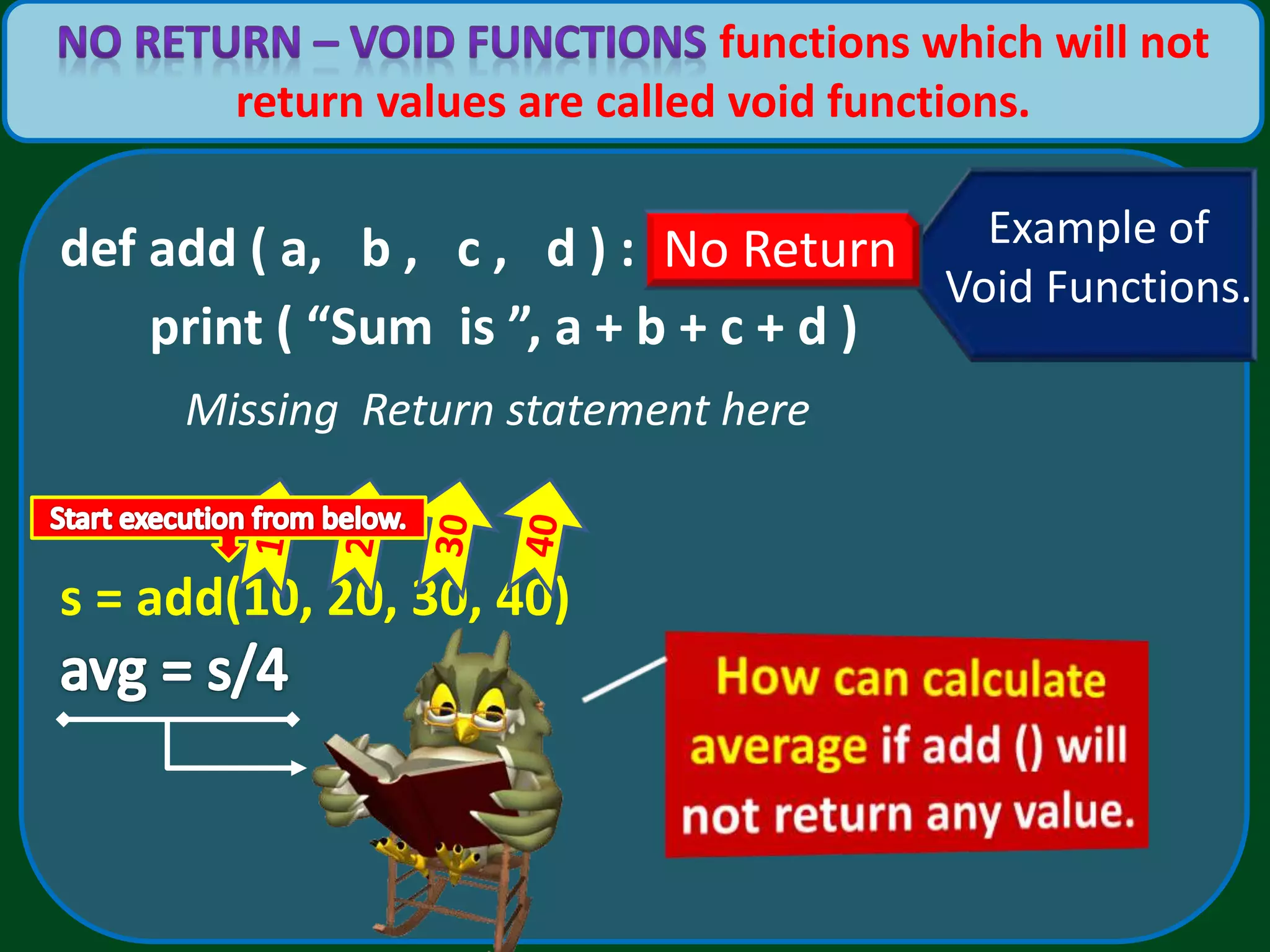
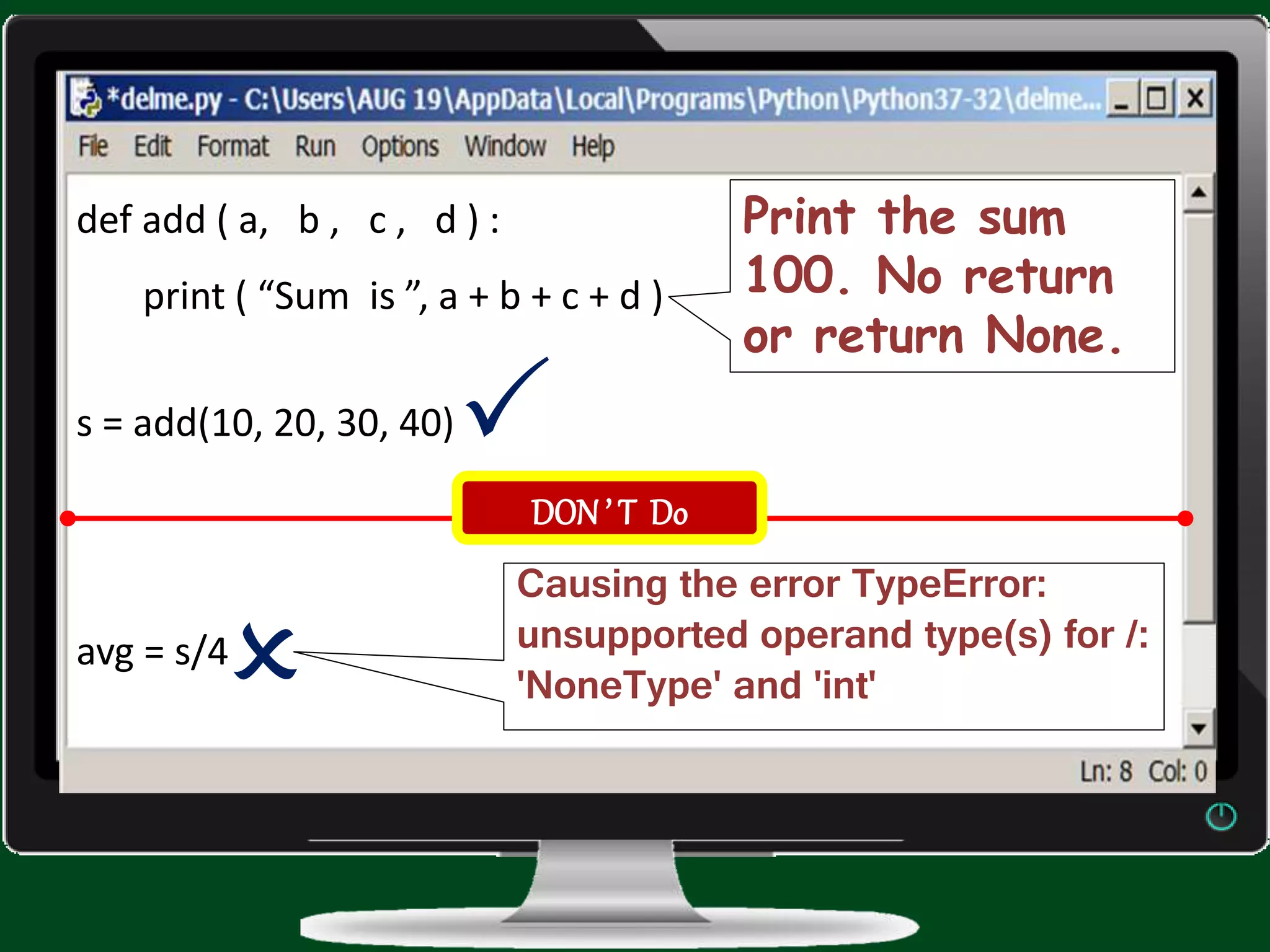
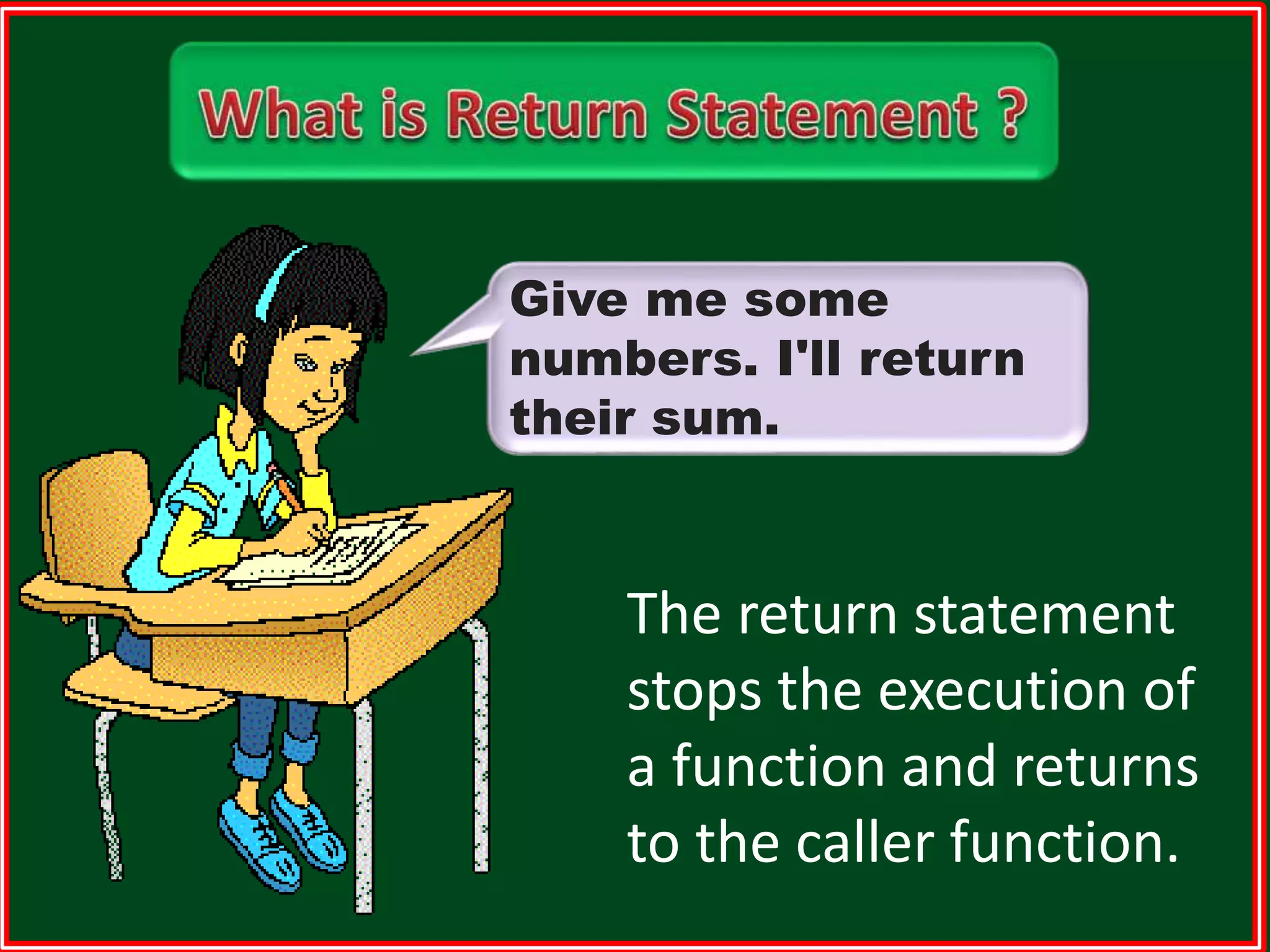
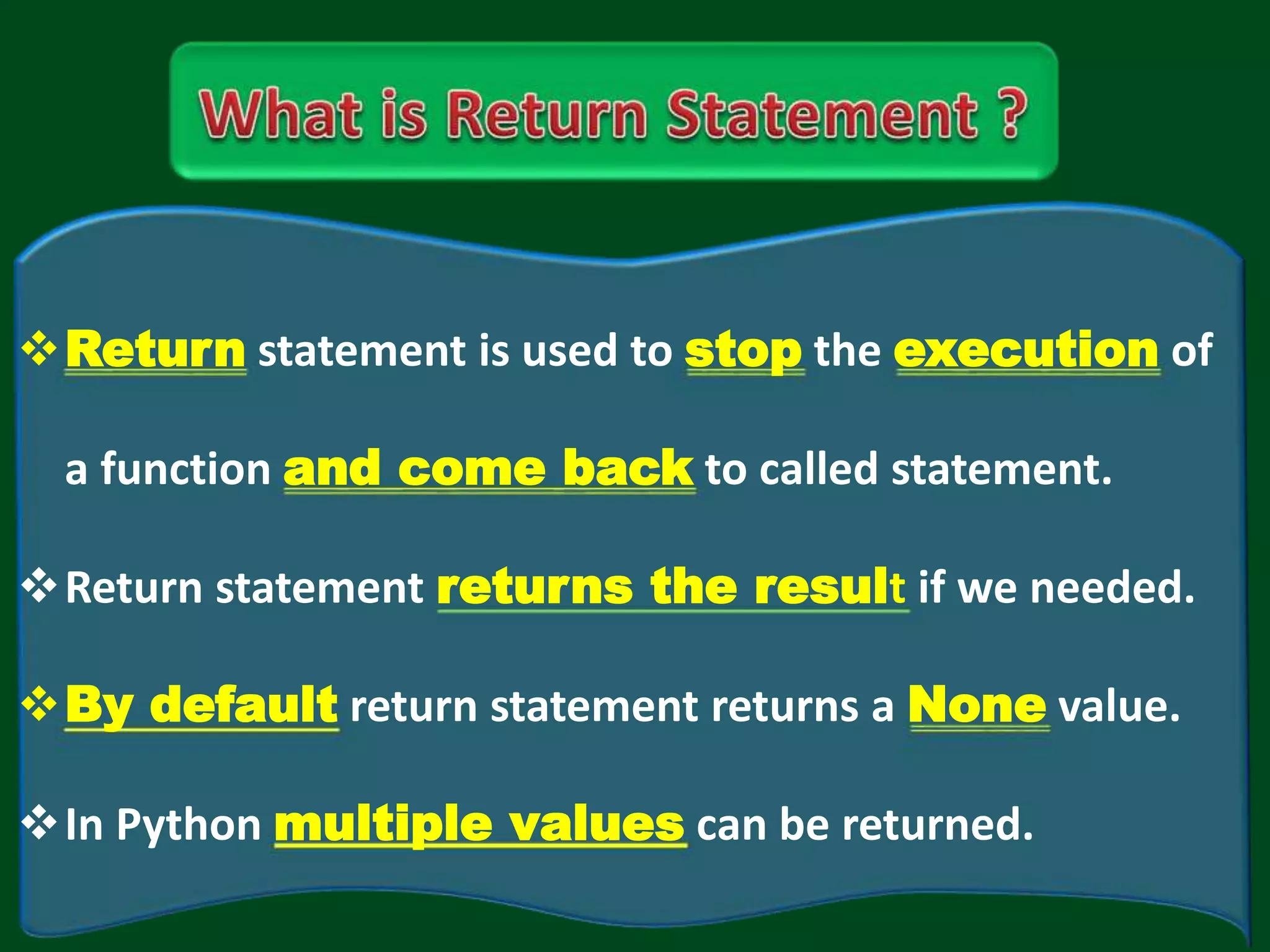
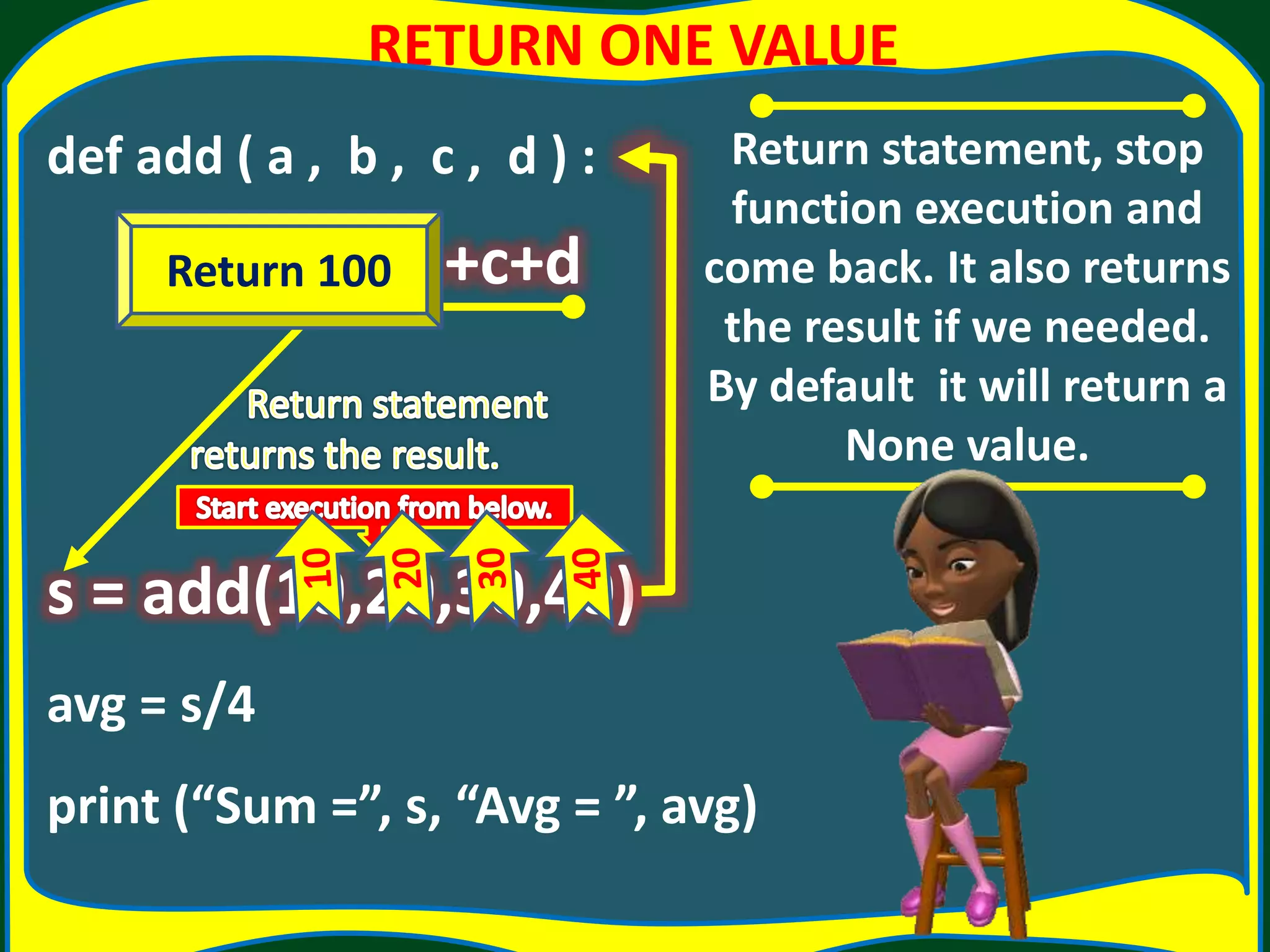
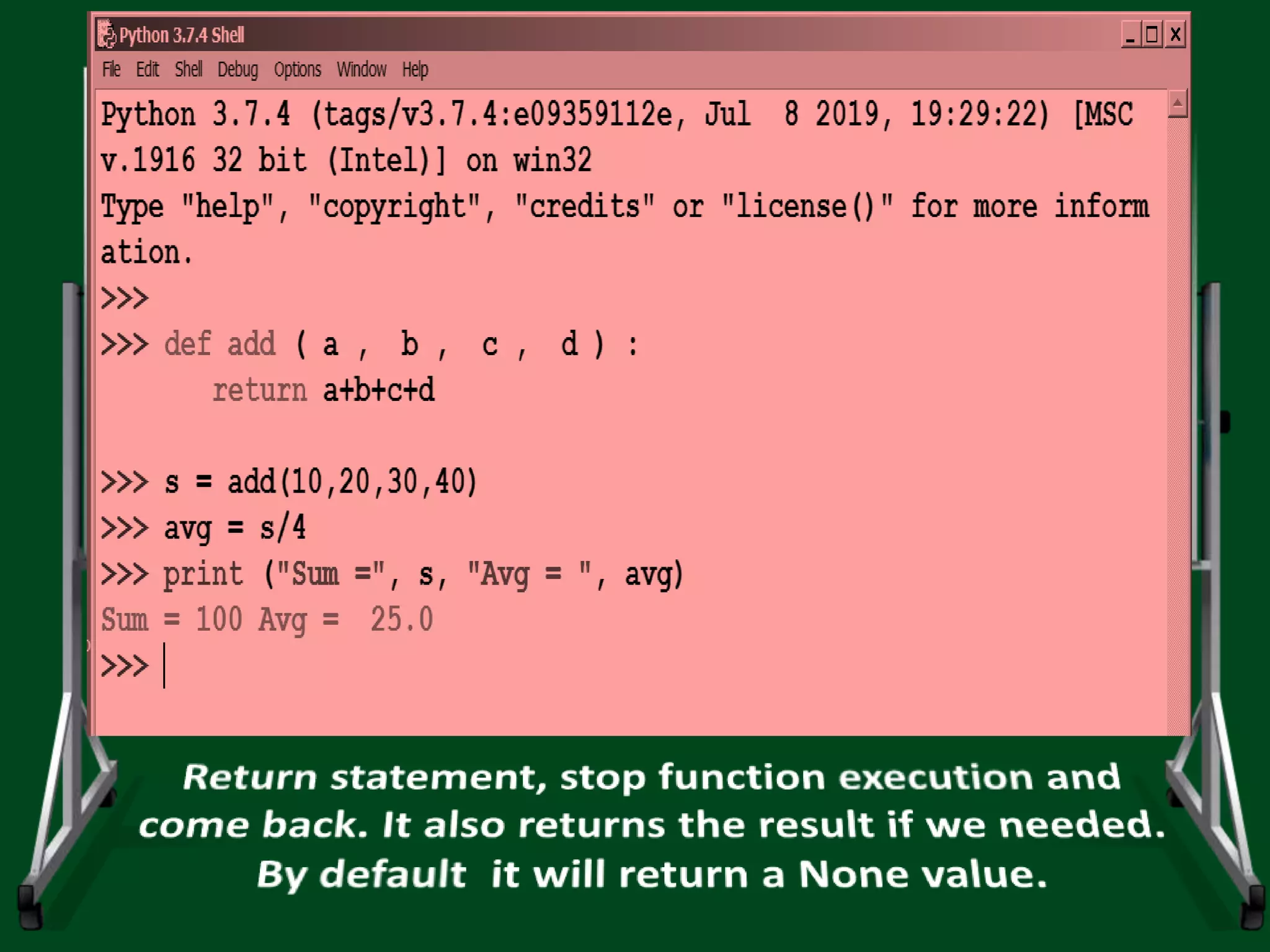
![def add ( a , b ) : return a + b s = add(10,20 ) s = add ( 1.5, 2.5 ) s = add(“anil”, “kumar” ) s = add( [10,20], [5,15] ) ALL IN ONE Python is a dynamically- typed language. It doesn't know about the type of the variable until the code runs. ALL IN ONE 10 + 20 = 30 1.5 + 2.5 = 4.0 anil + kumar = anilkumar [10,20,5,15]](https://image.slidesharecdn.com/july25-200710150850/75/FUNCTIONS-IN-PYTHON-CBSE-2-COMPUTER-SCIENCE-45-2048.jpg)
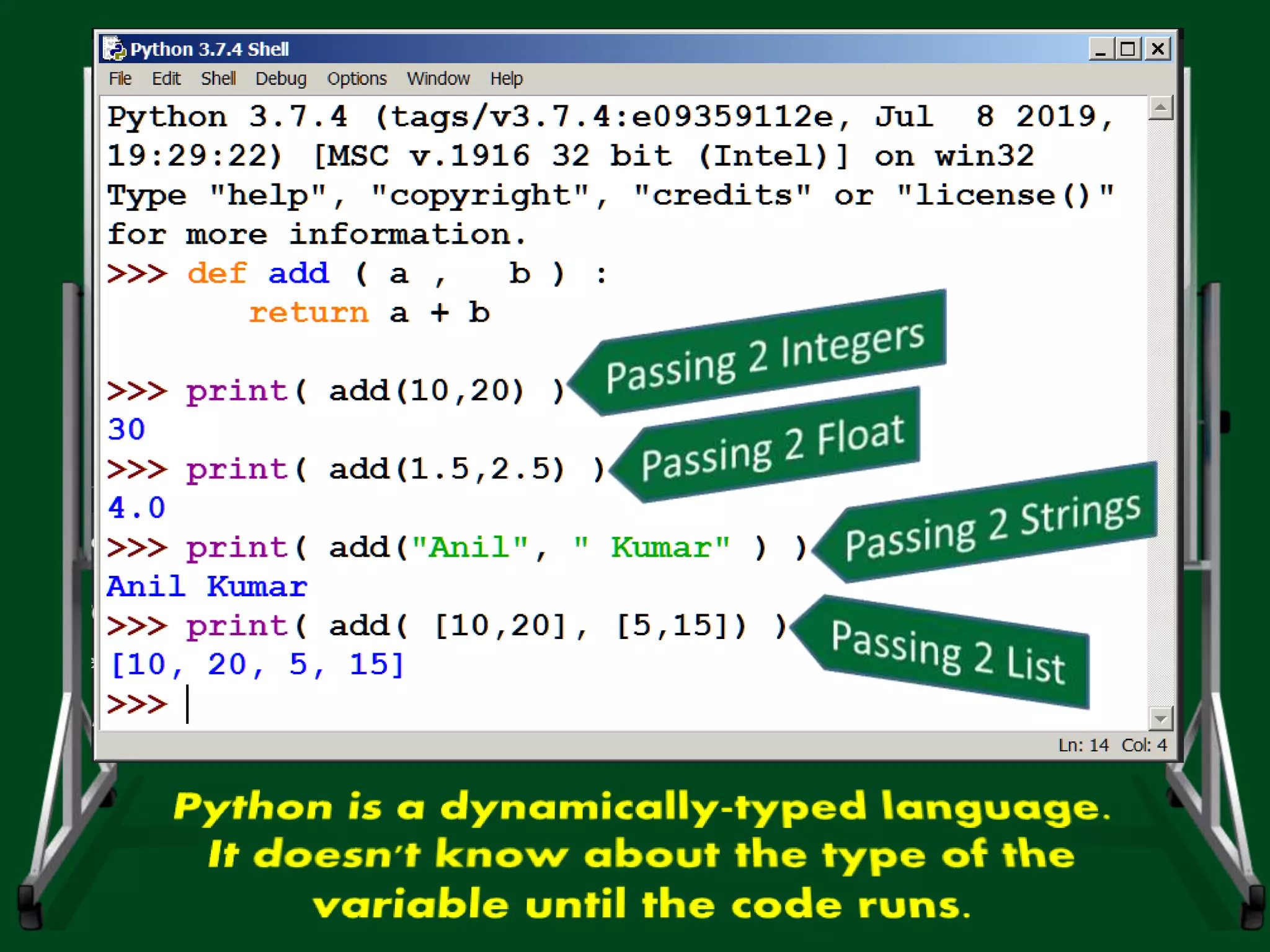
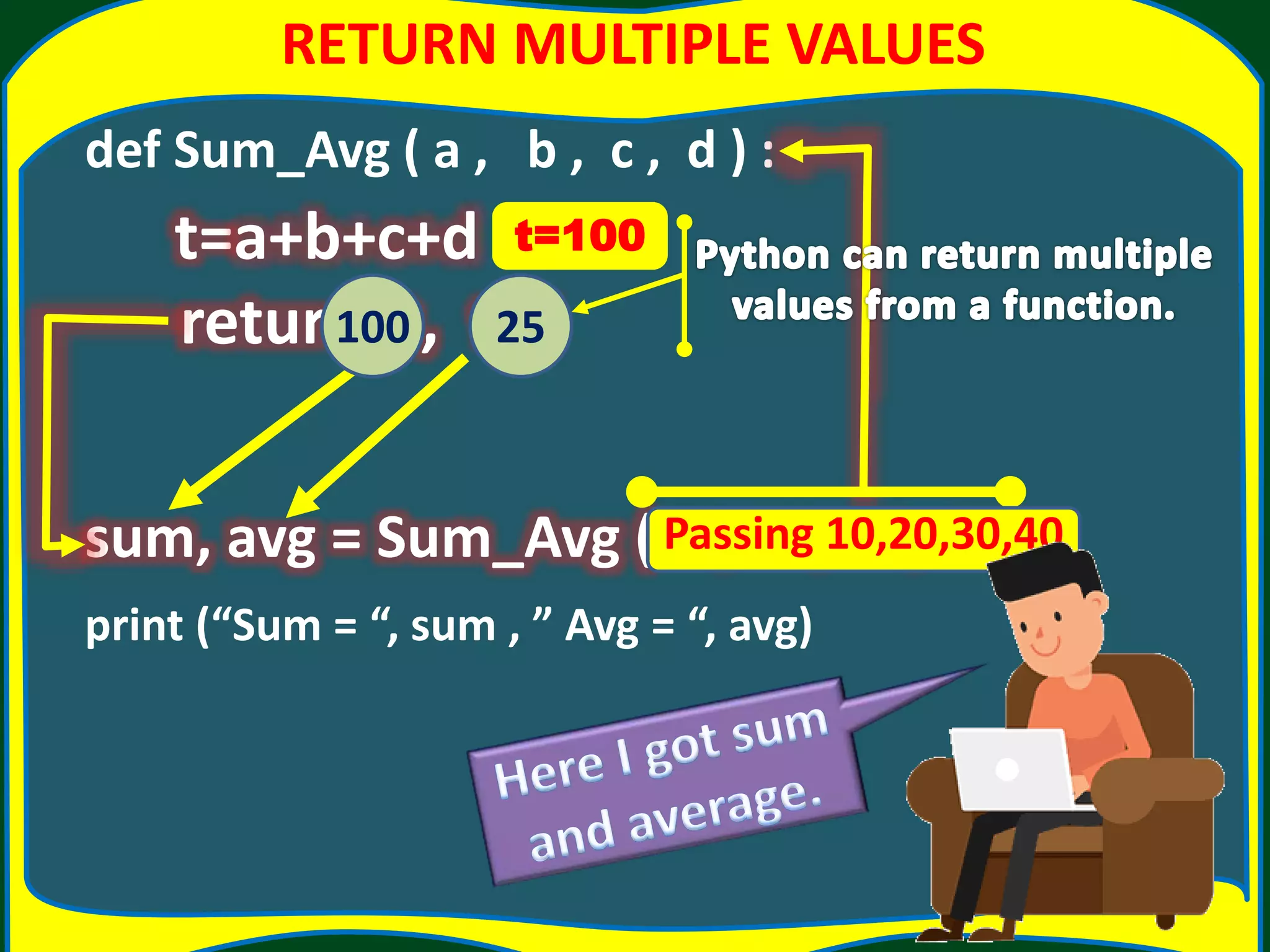
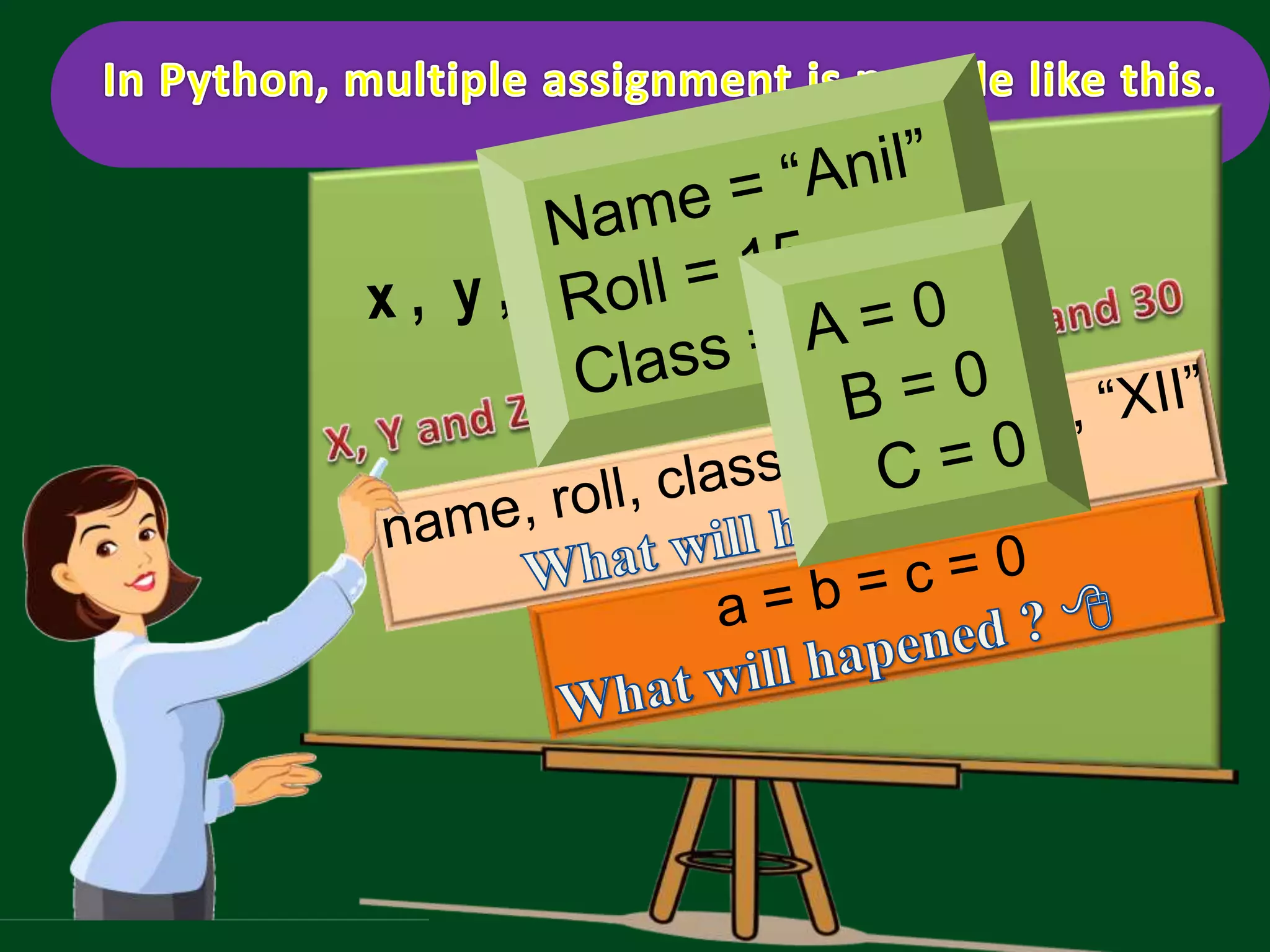
![Python 3.7.4 (tags/v3.7.4:e09359112e, Jul 8 2019, 19:29:22) [MSC v.1916 32 bit (Intel)] on win32 Type "help", "copyright", "credits" or "license()" for more information. >>> x , y , z = 10 , 20 , 30 >>> name, roll, Class = “Anil”, 15, “XII” >>> a = b = c = 0 >>> print (x, y, z ) >>> 10 20 30 >>> print (name, roll, Class) >>> Anil 15, XII >>> print(a,b,c) >>> 0 0 0](https://image.slidesharecdn.com/july25-200710150850/75/FUNCTIONS-IN-PYTHON-CBSE-2-COMPUTER-SCIENCE-49-2048.jpg)

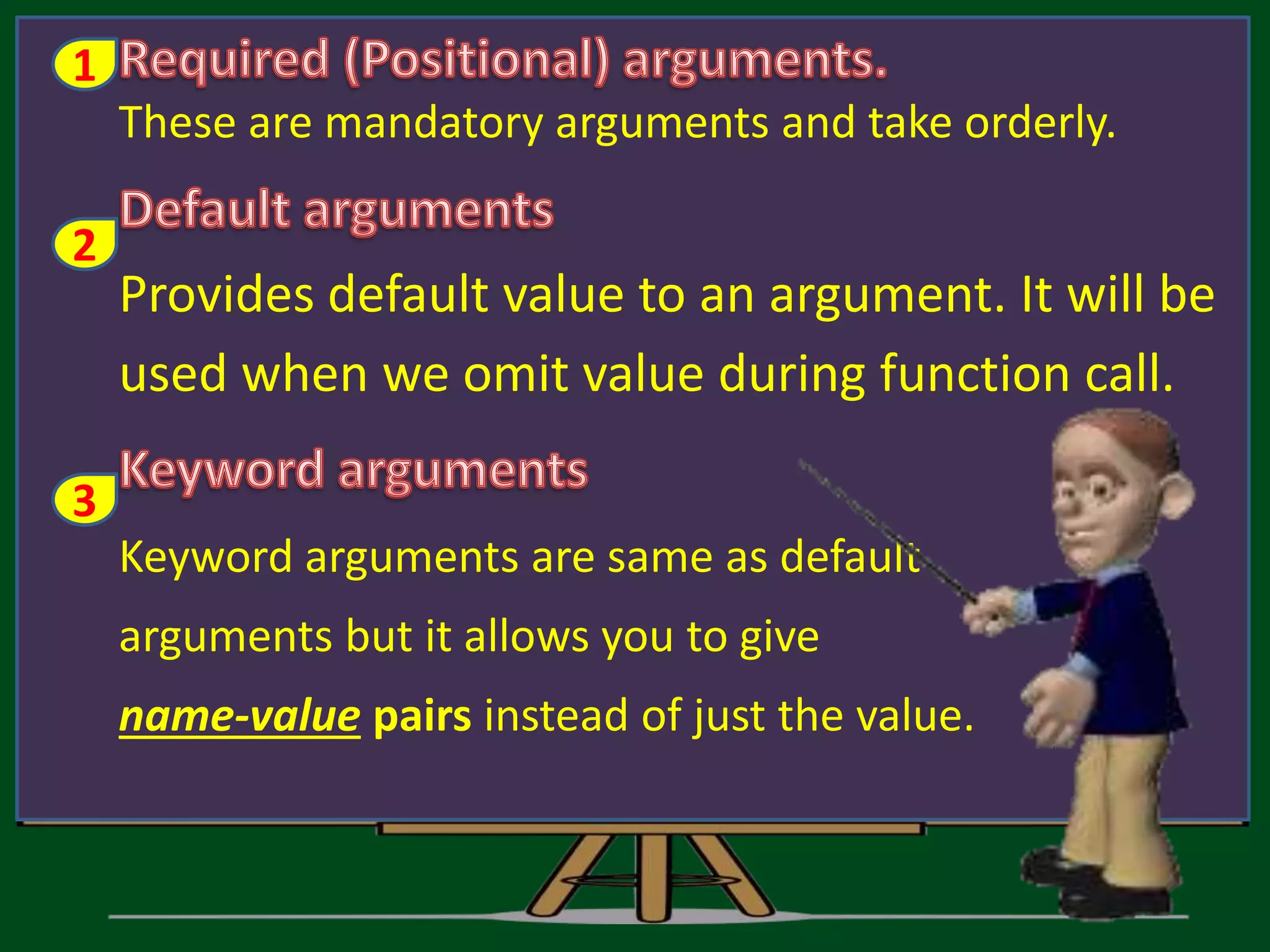
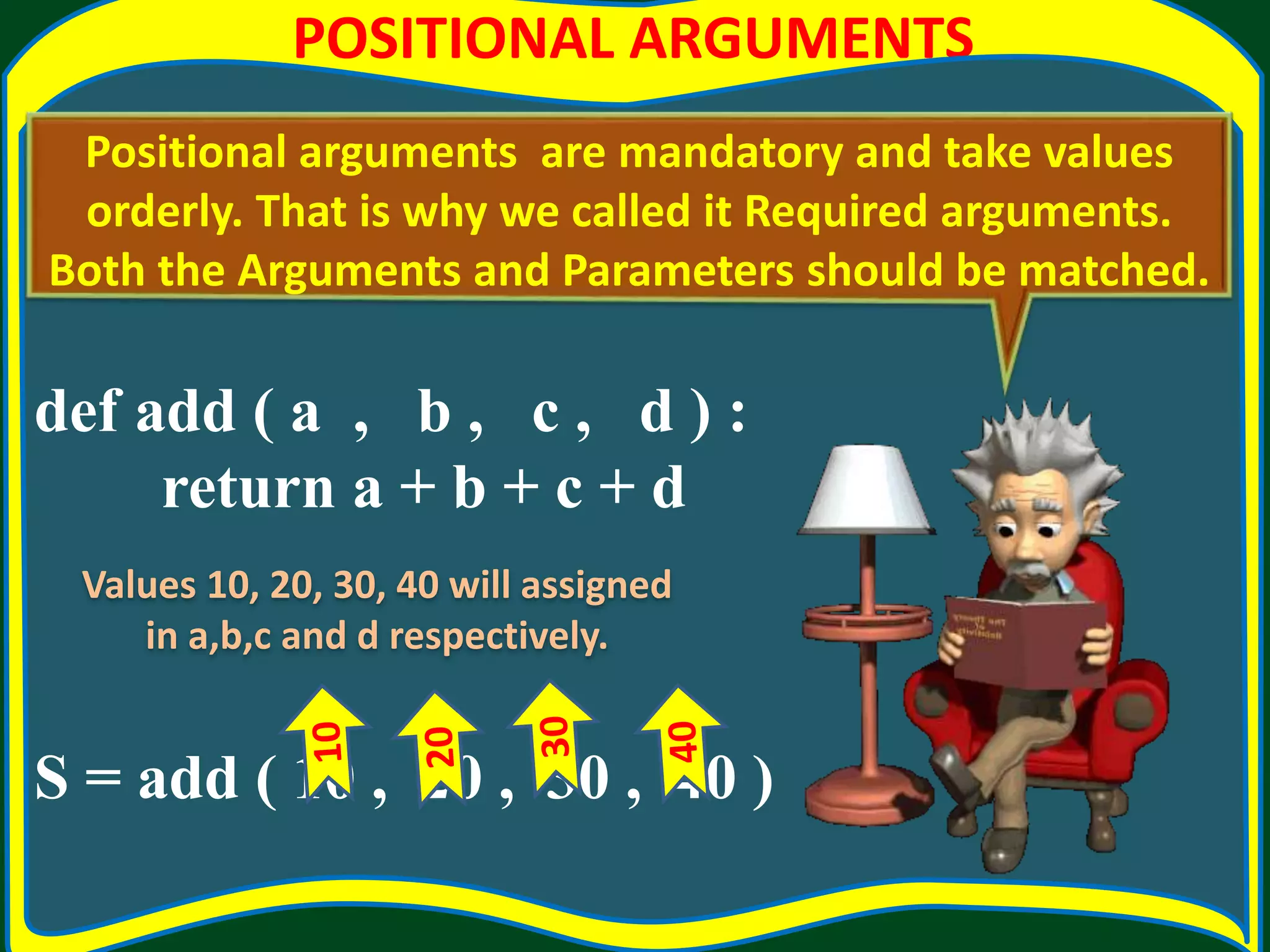
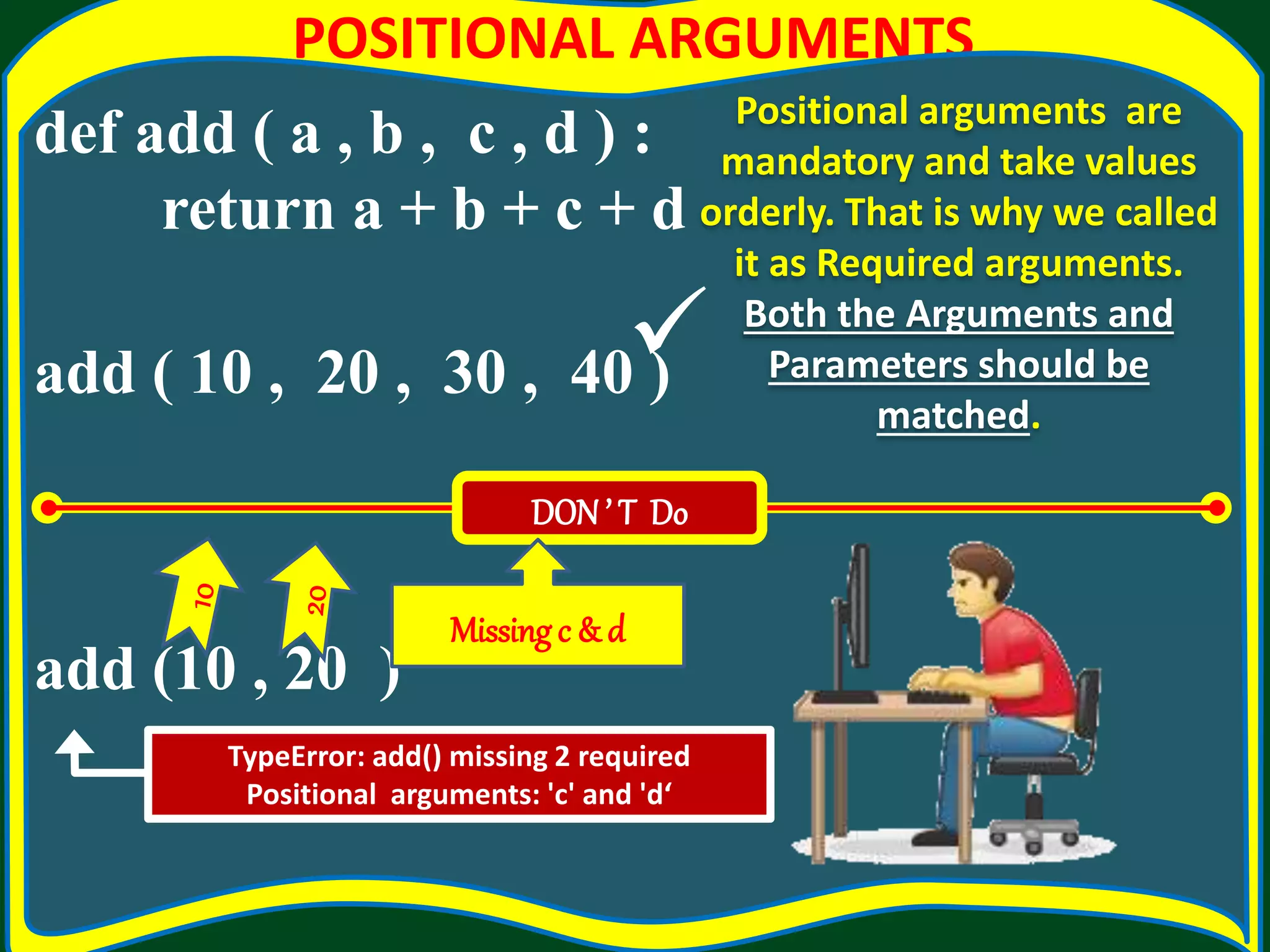
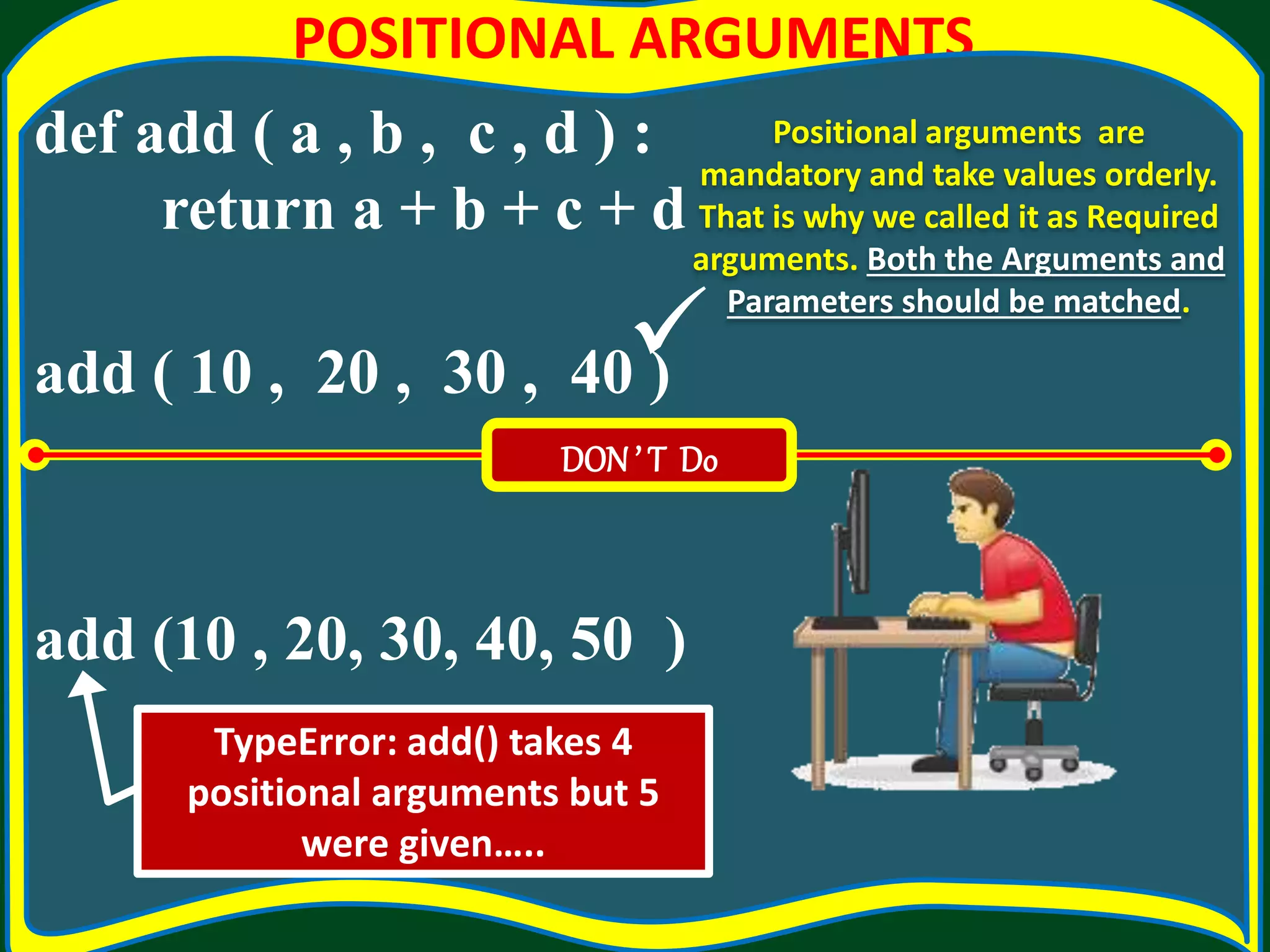
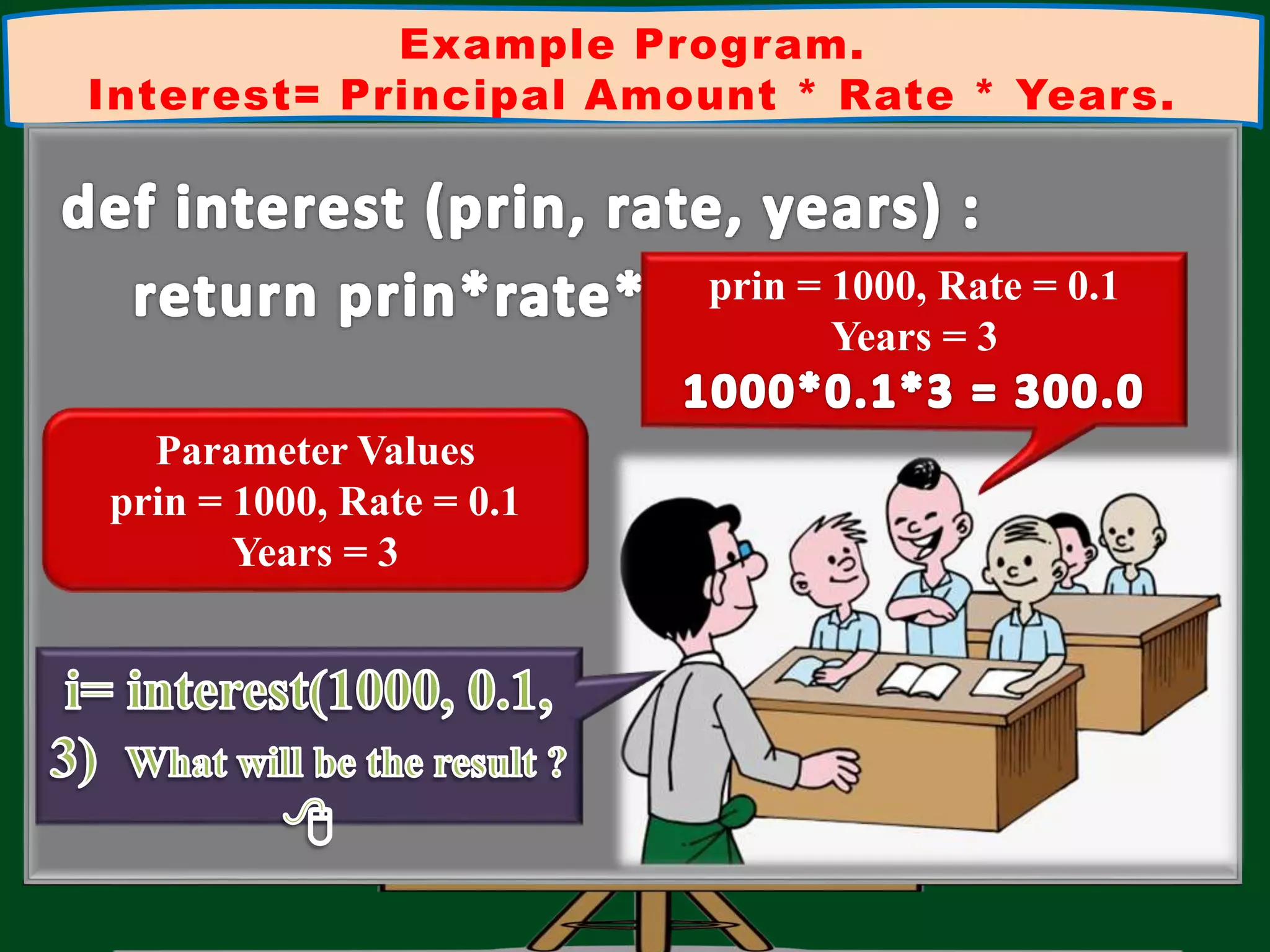
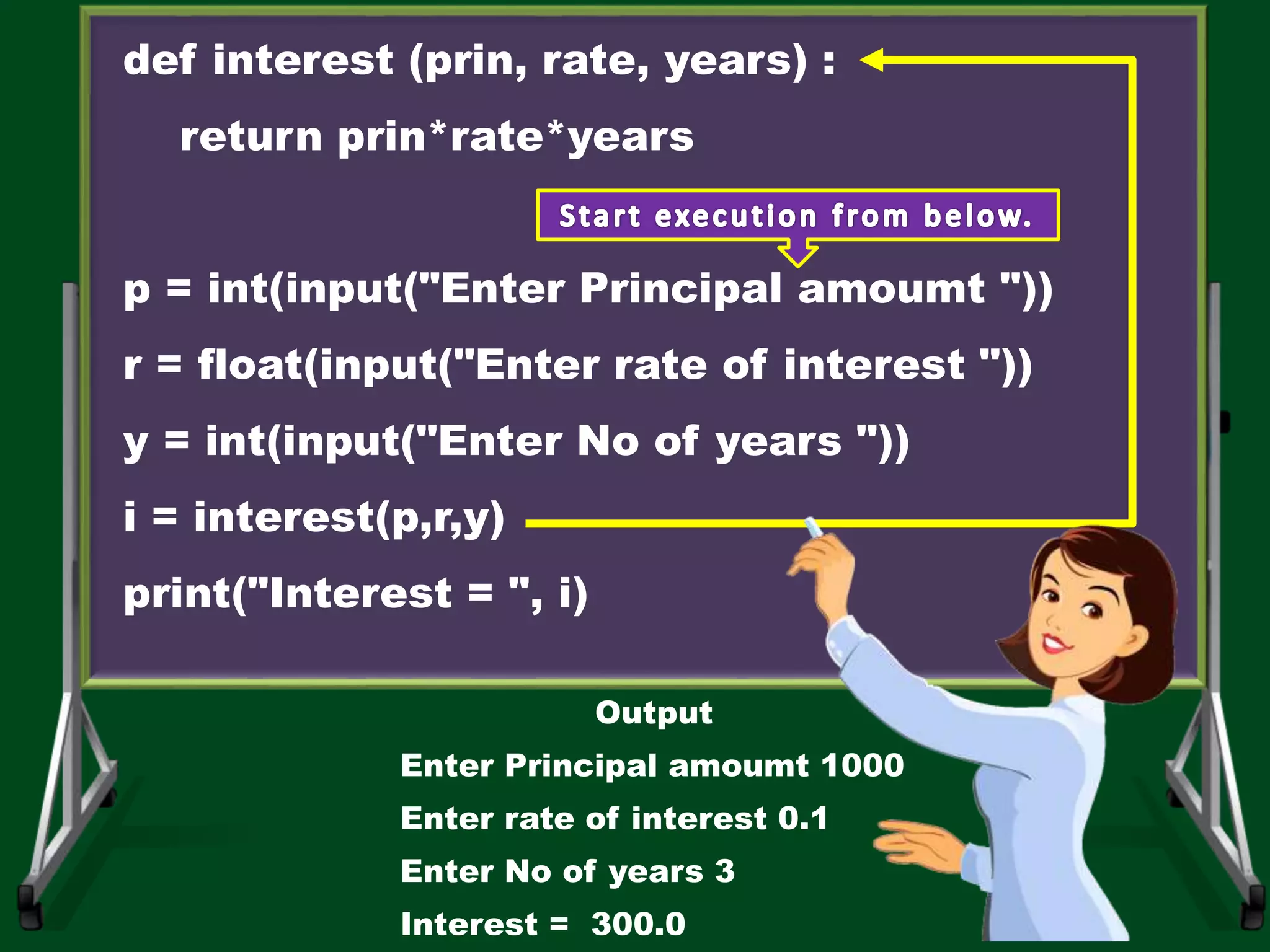
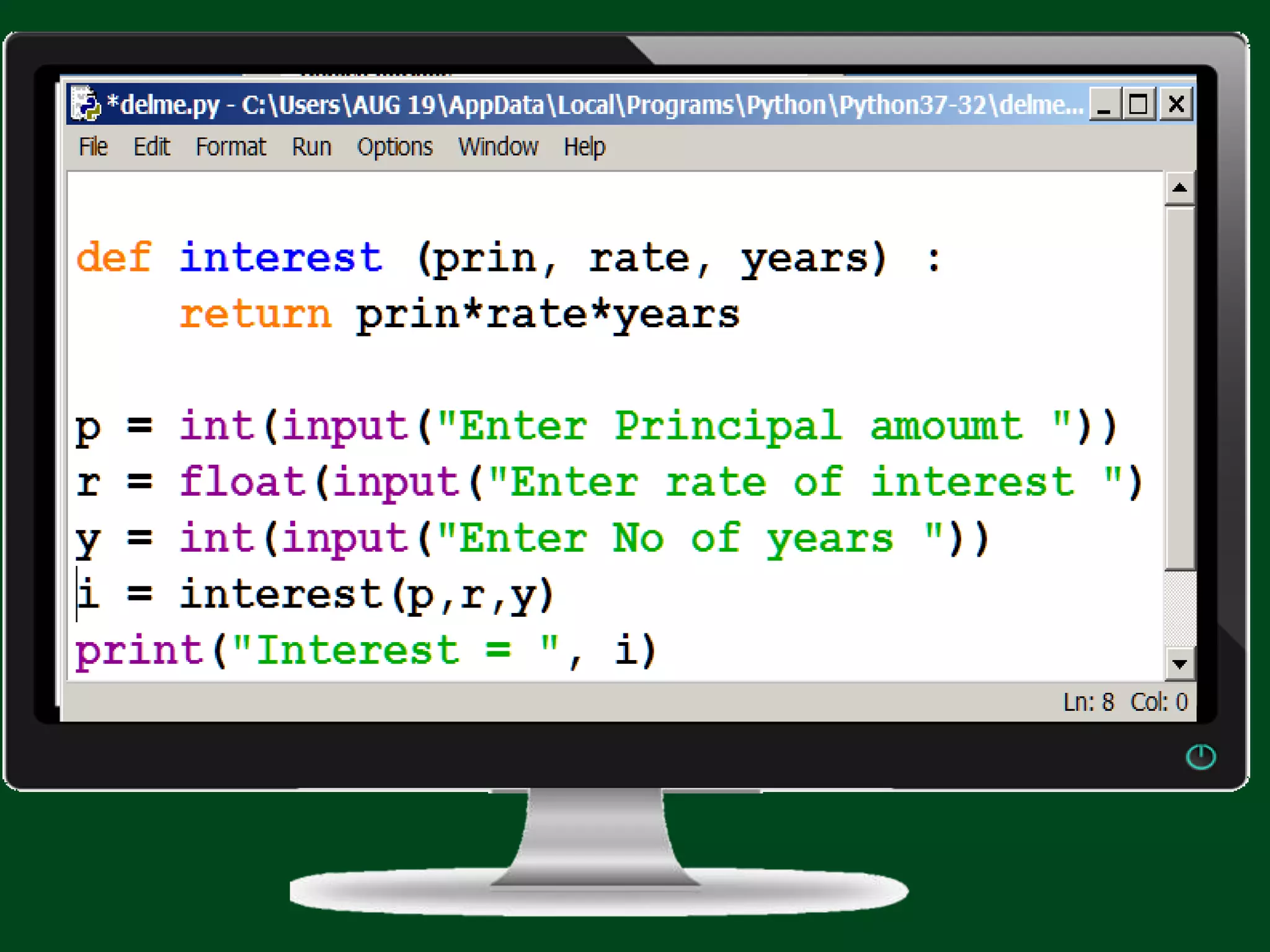
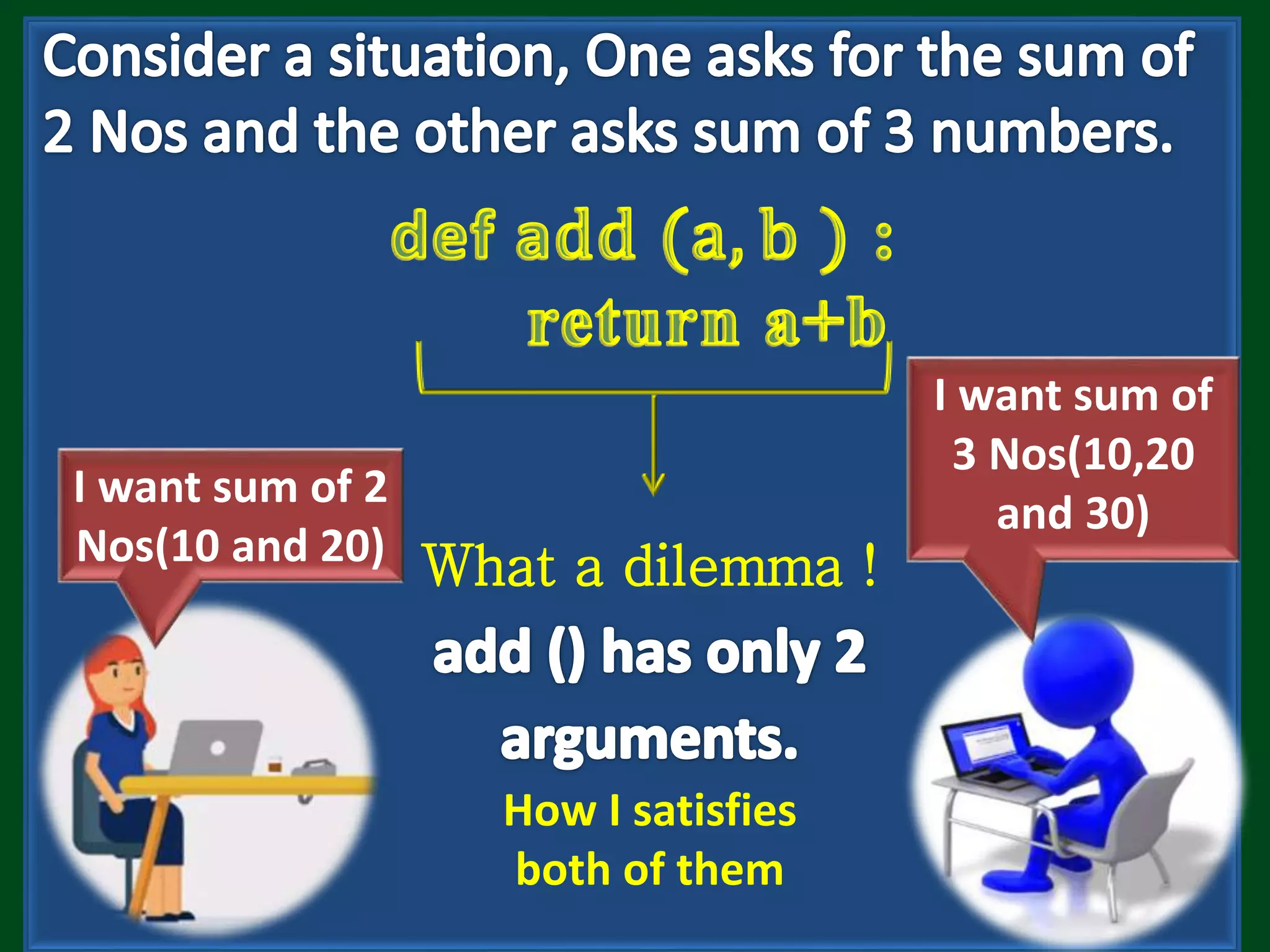
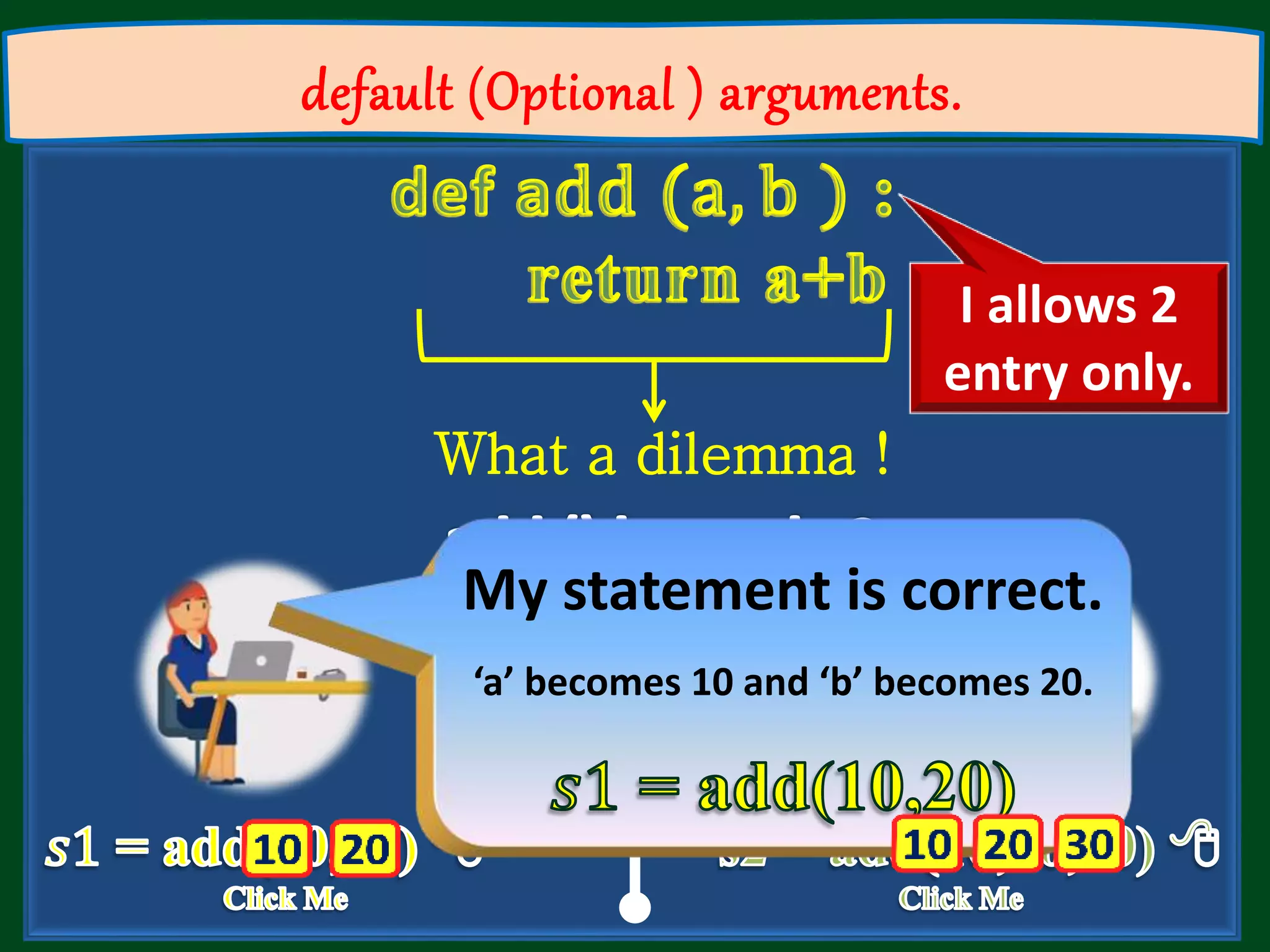
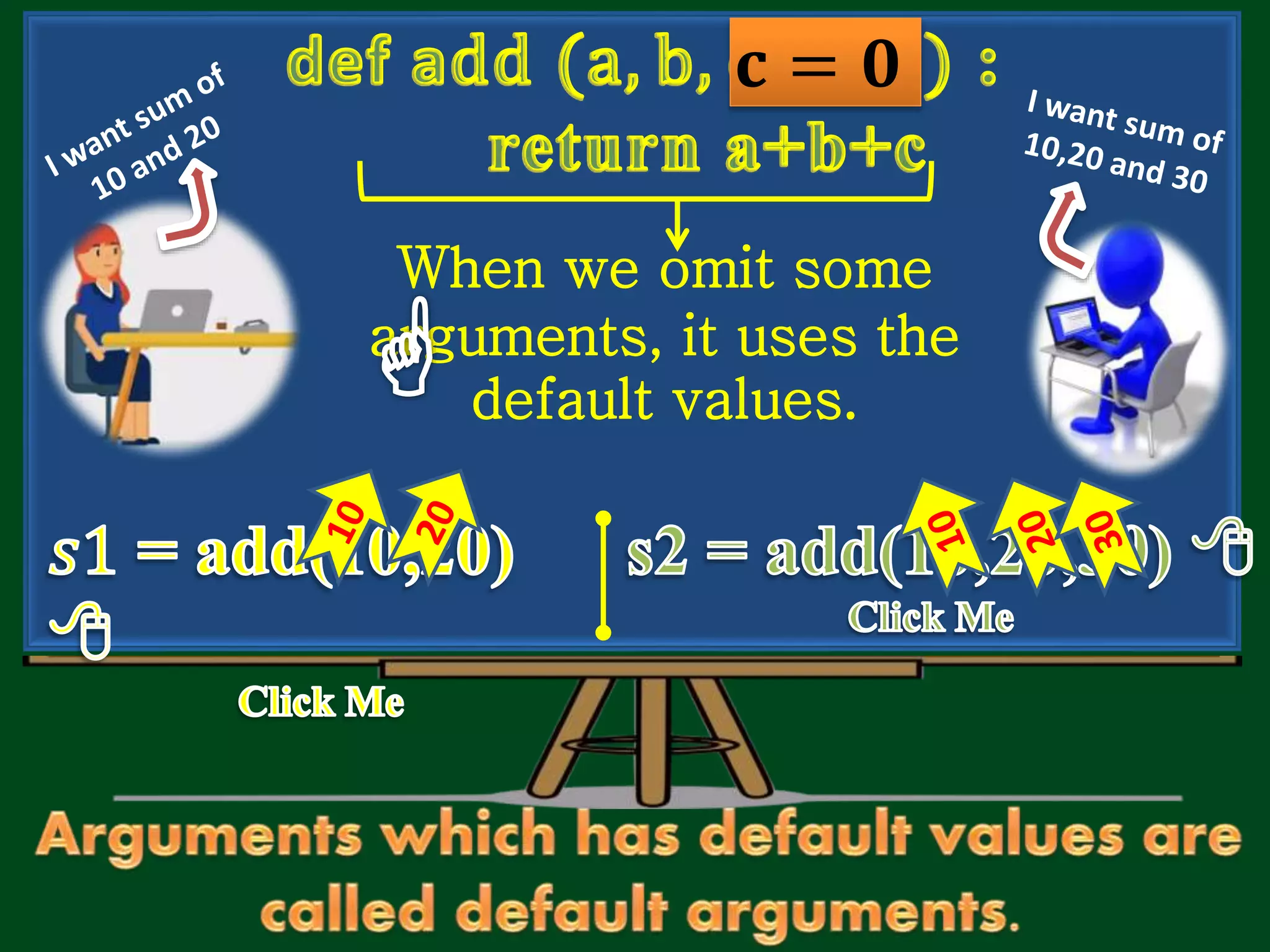
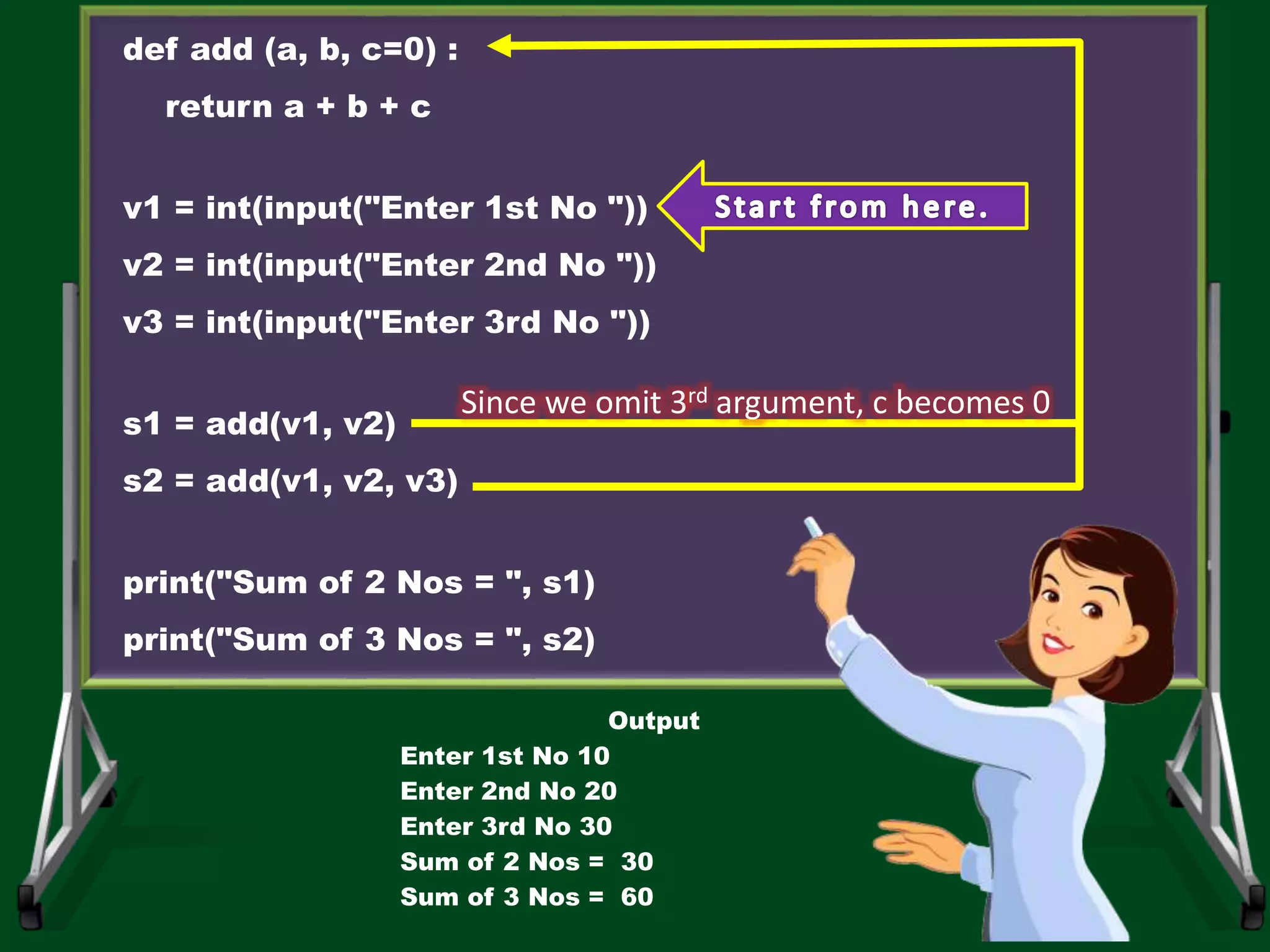
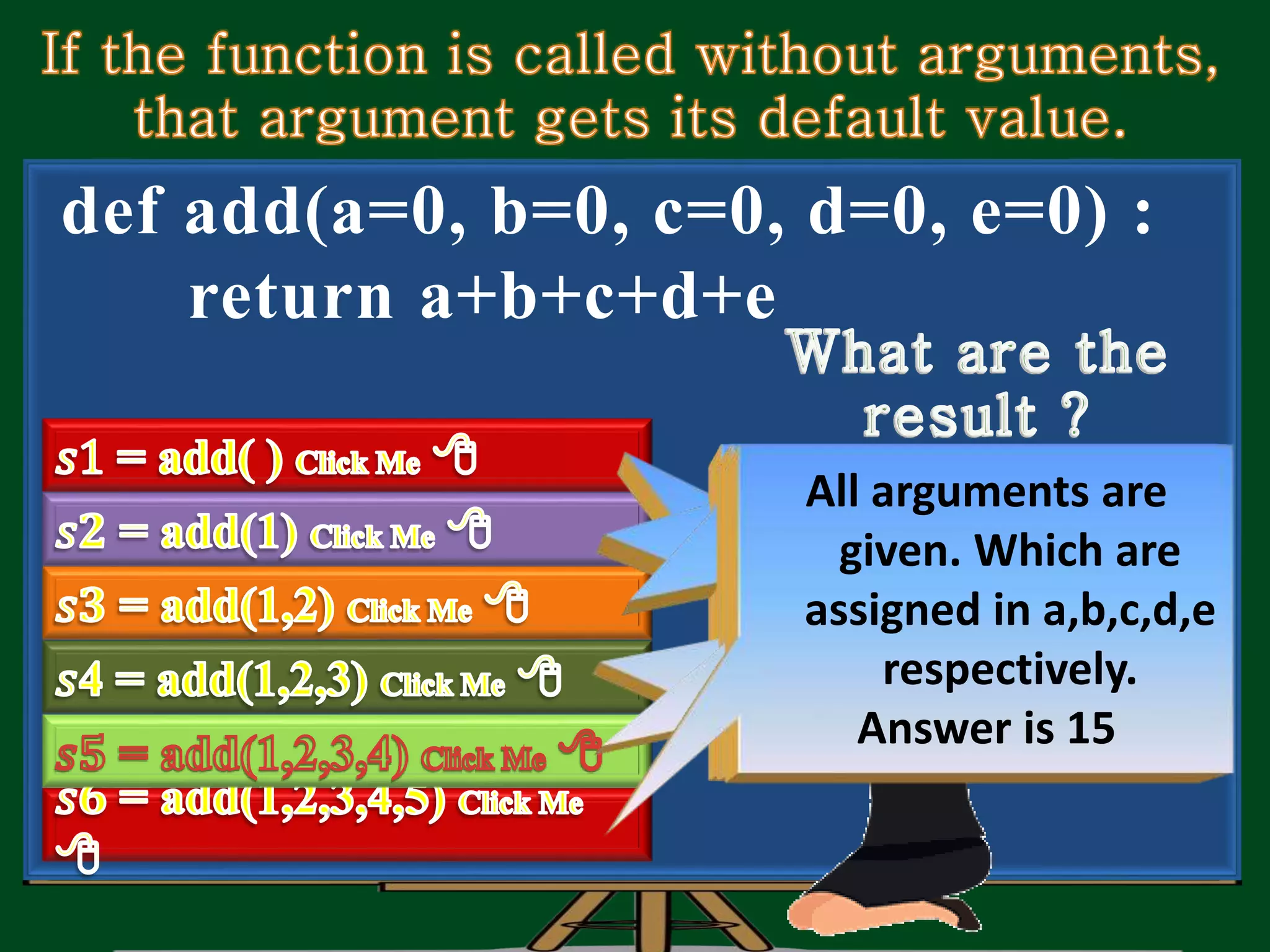
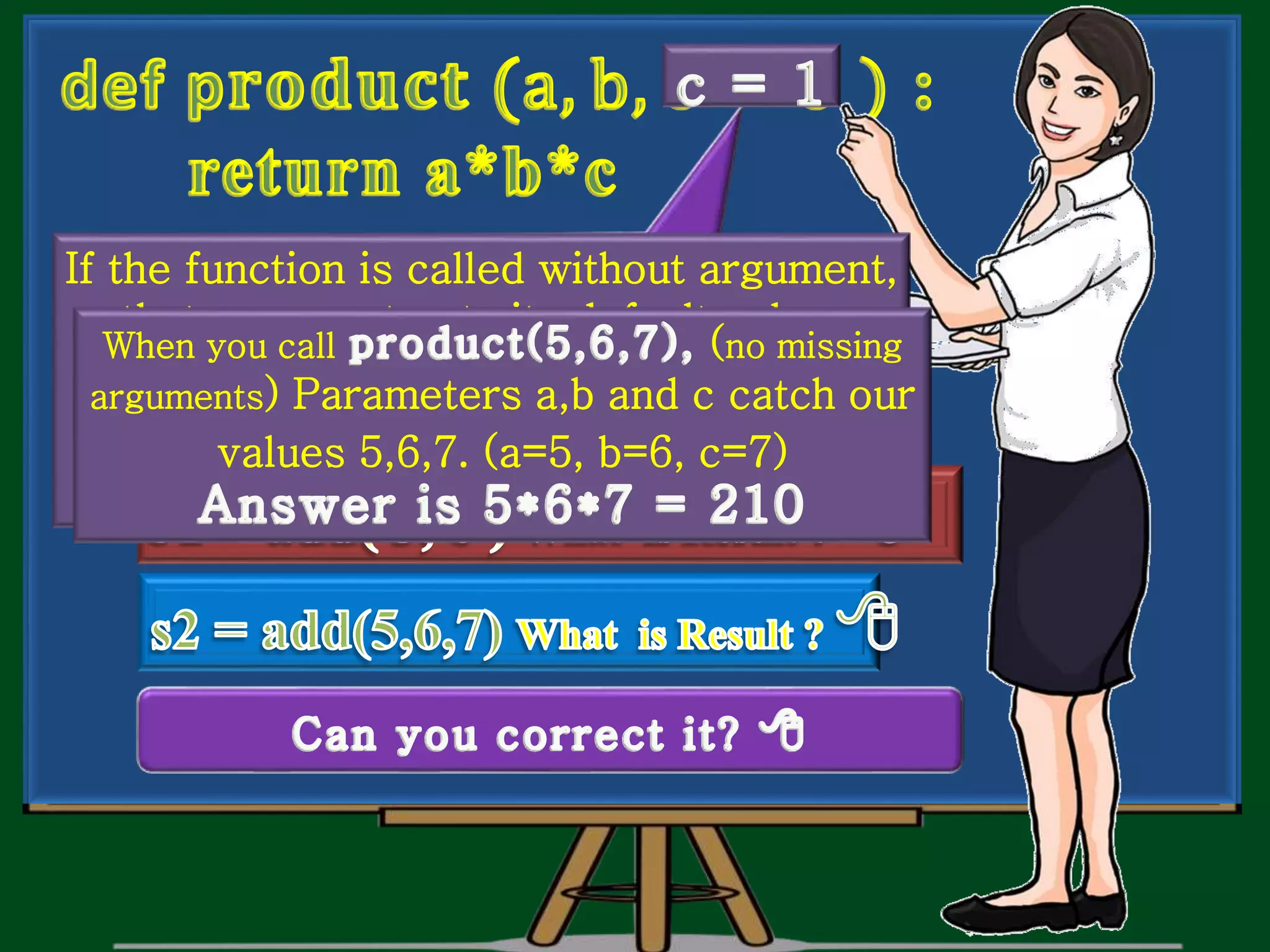
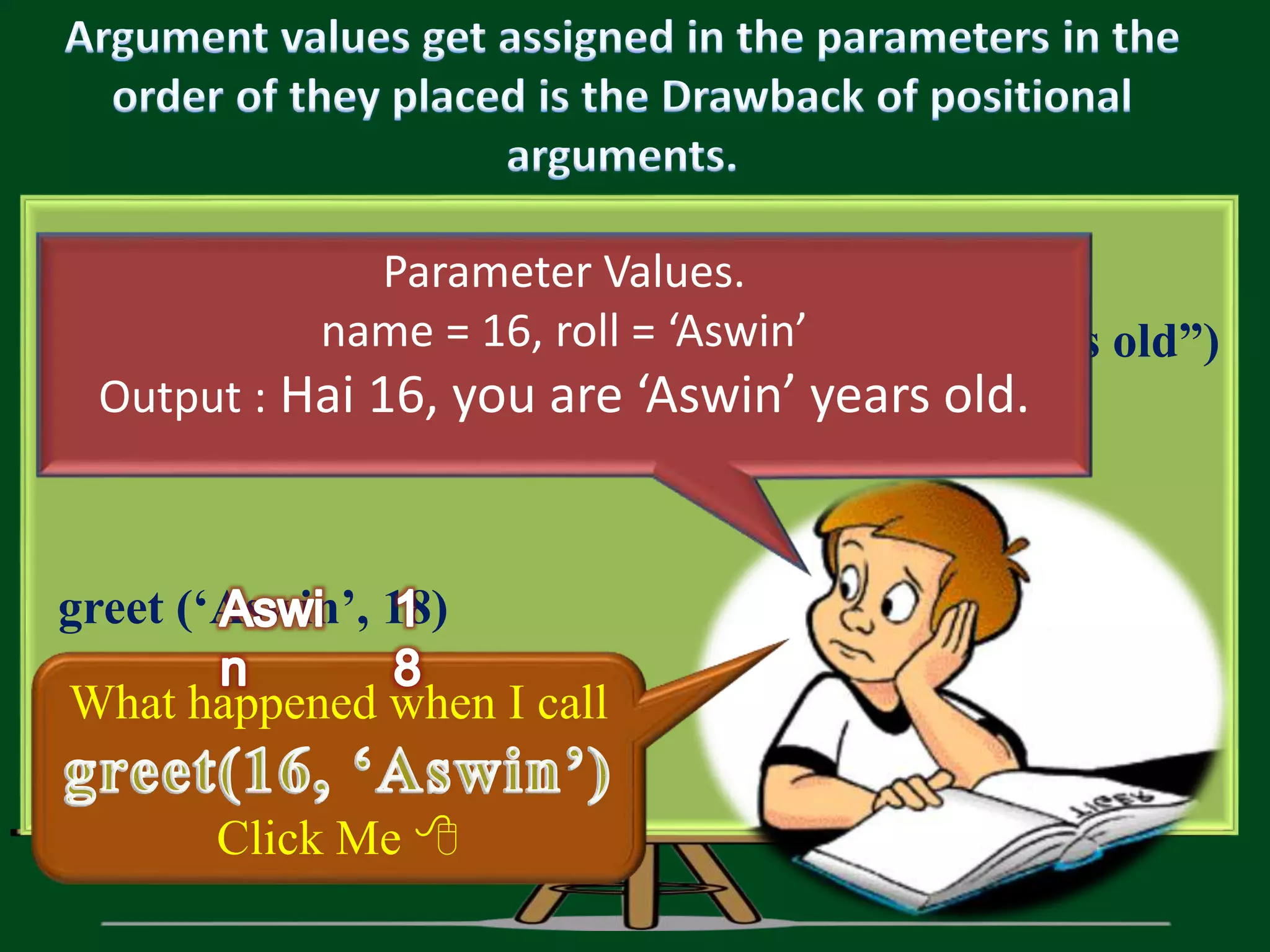



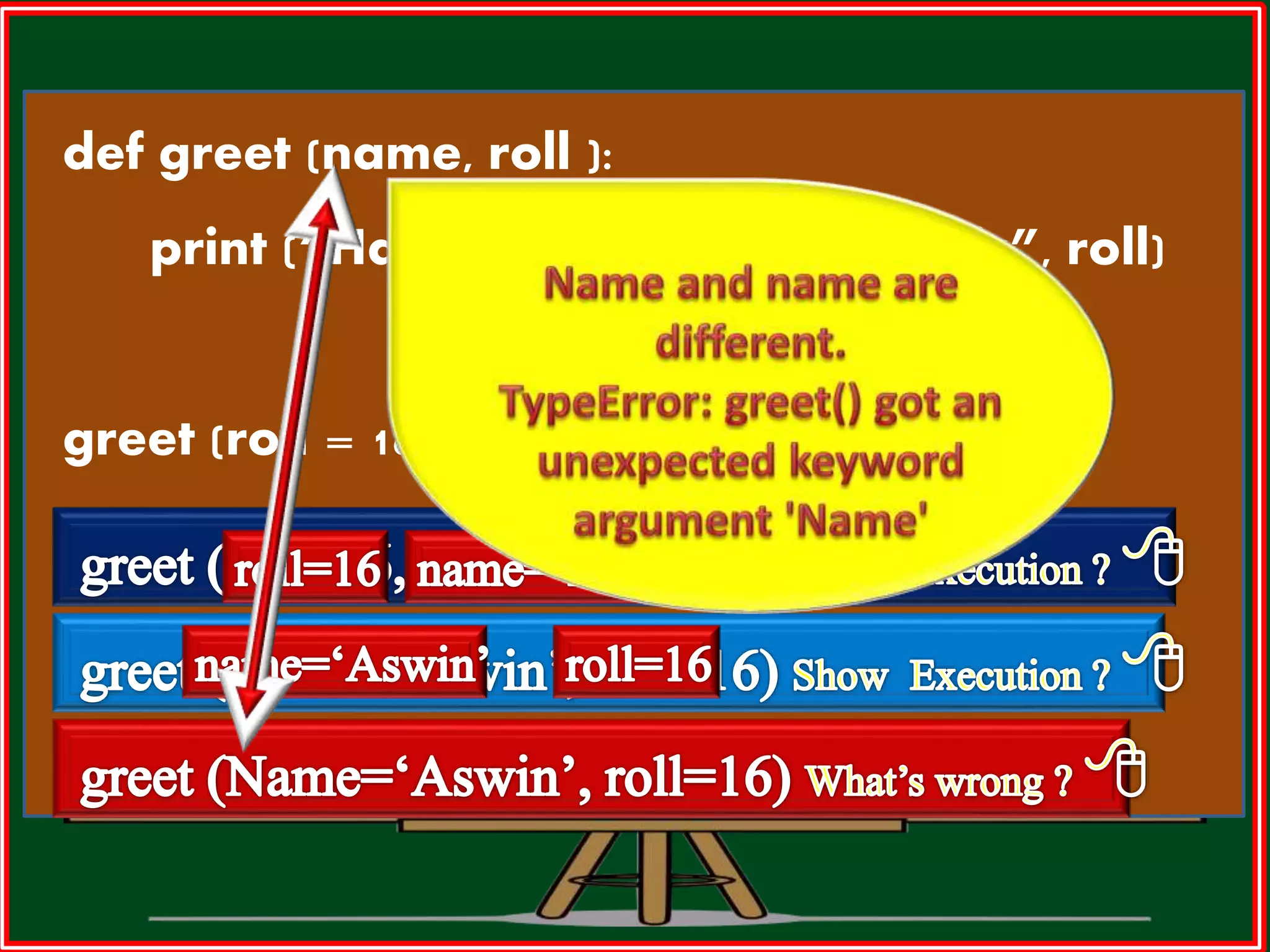
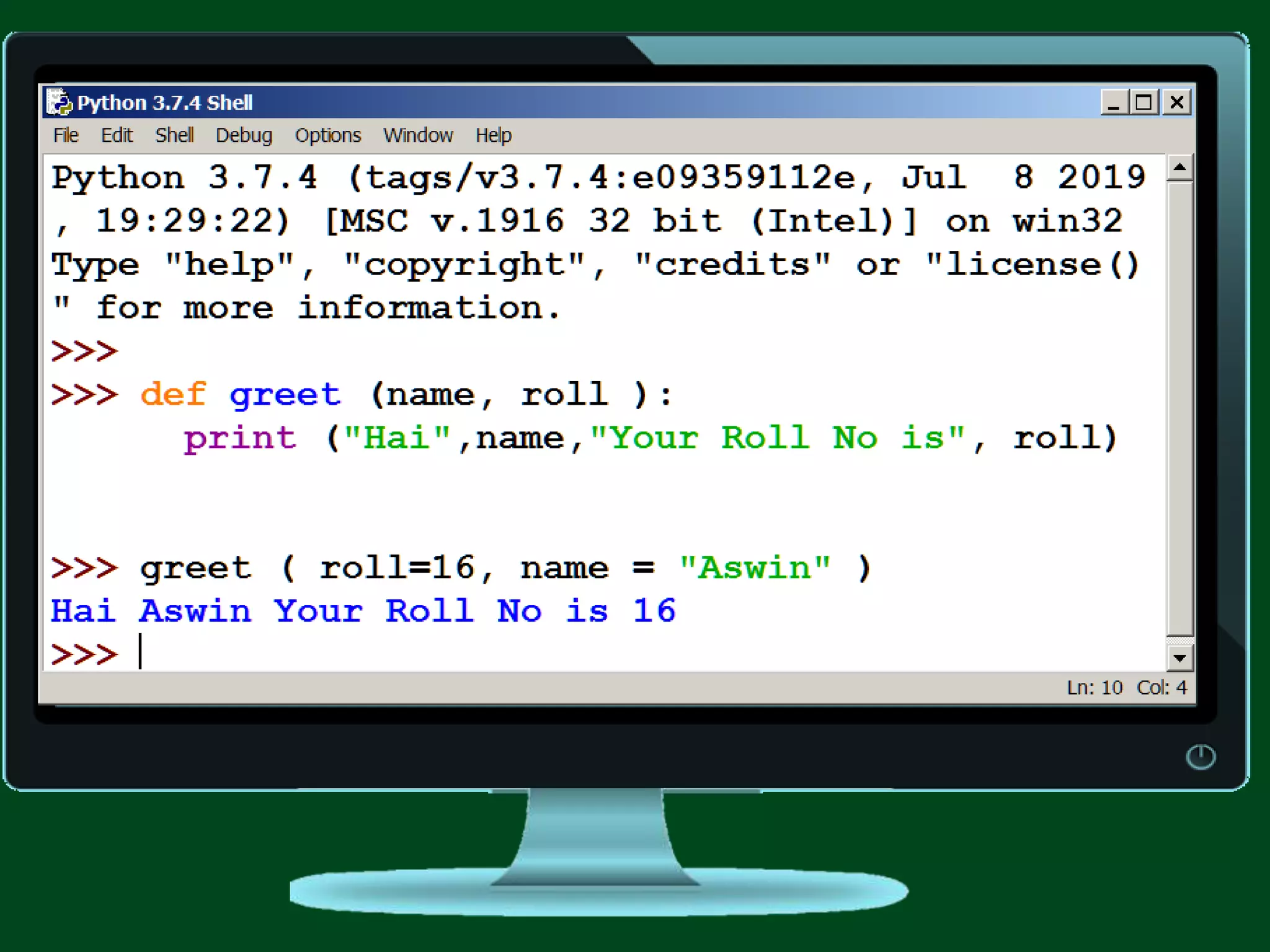

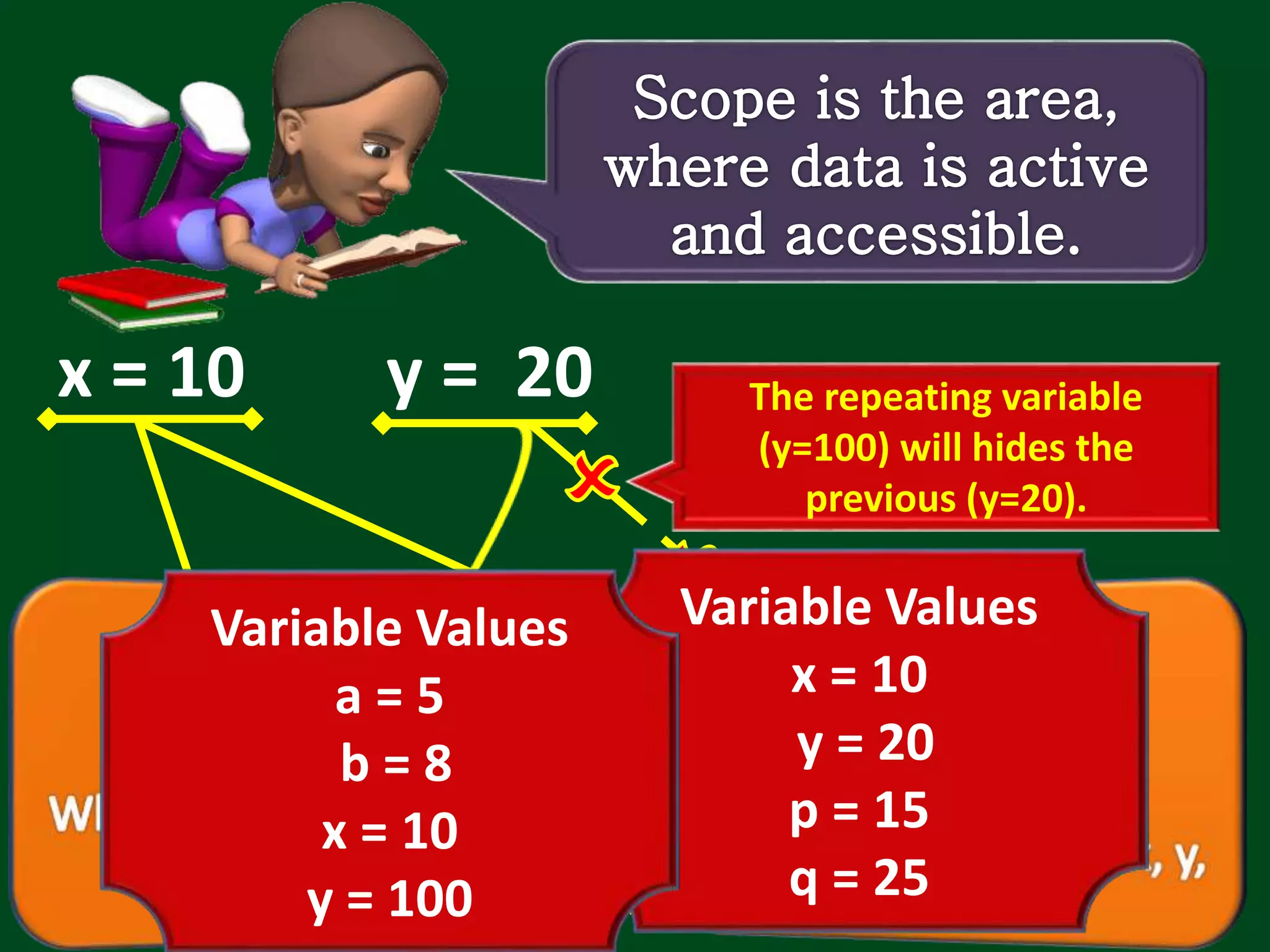




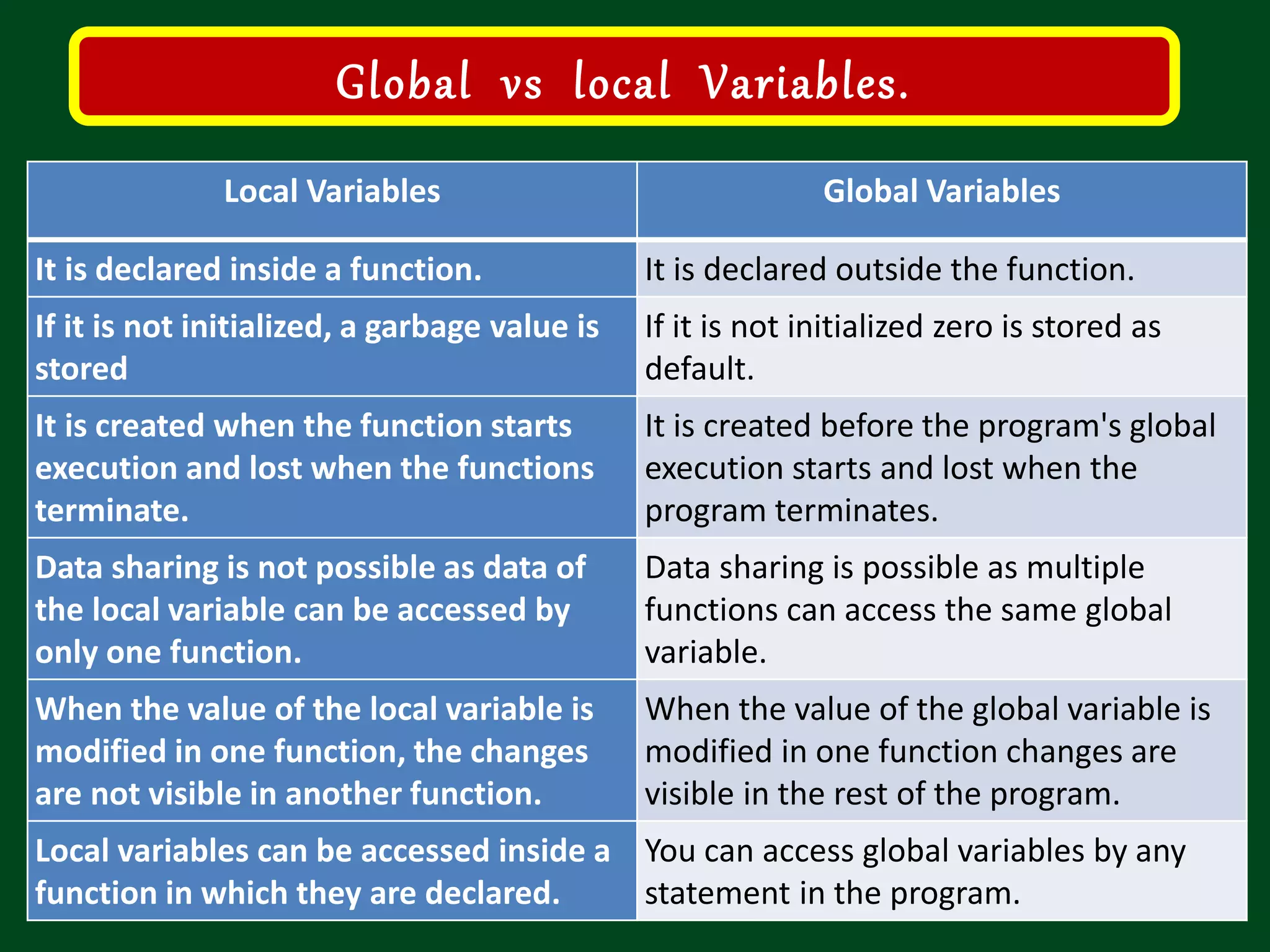
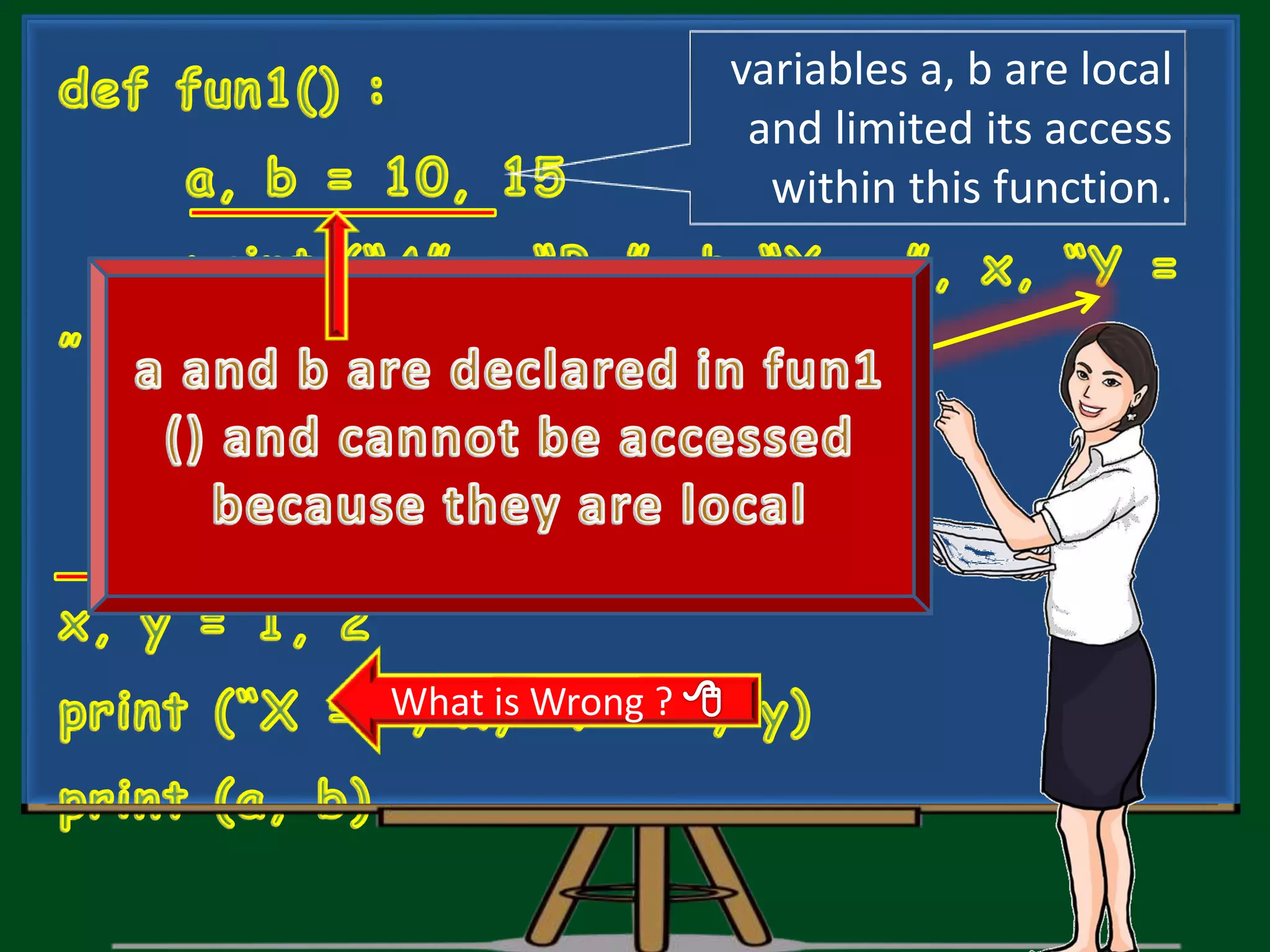

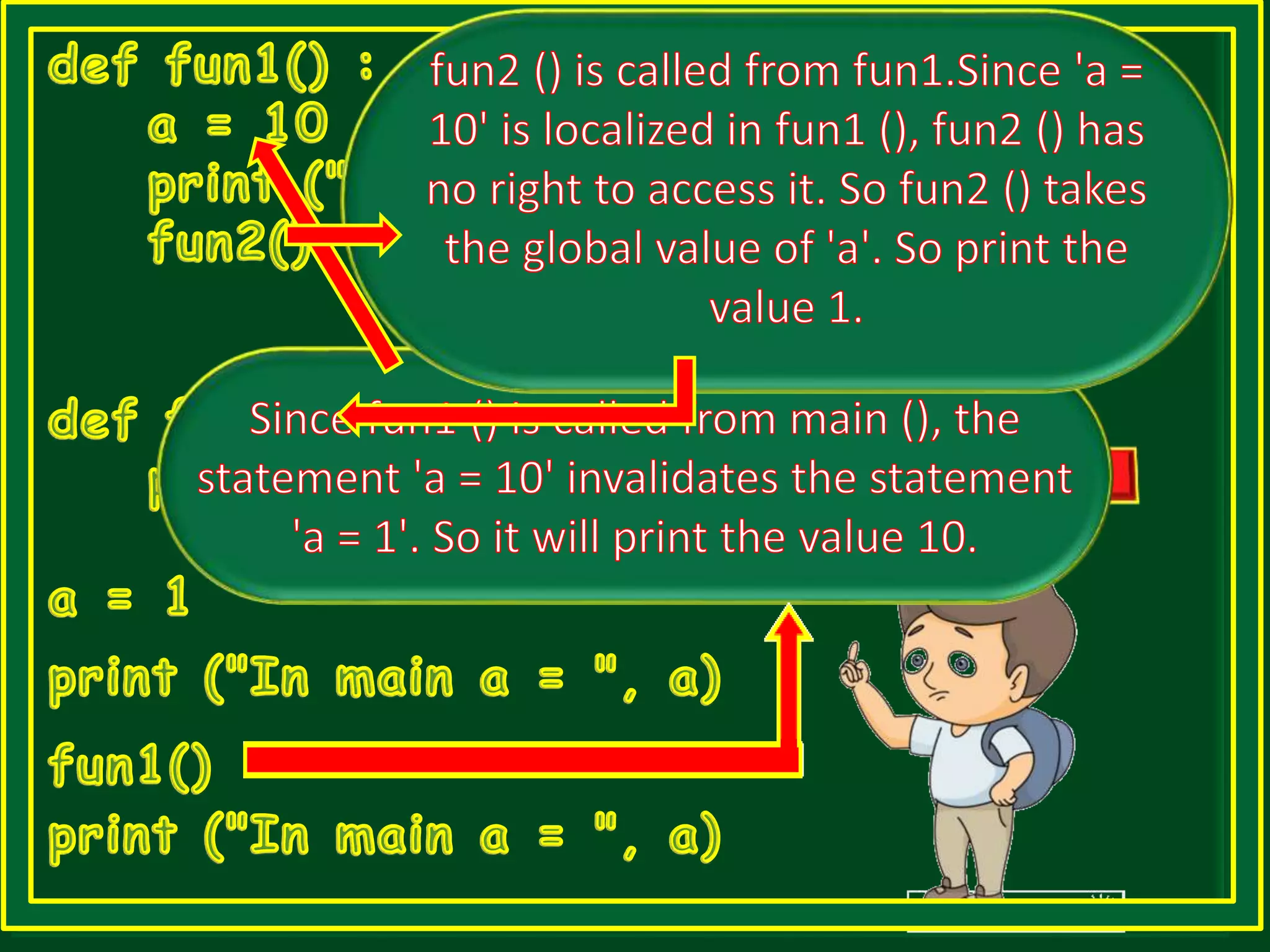
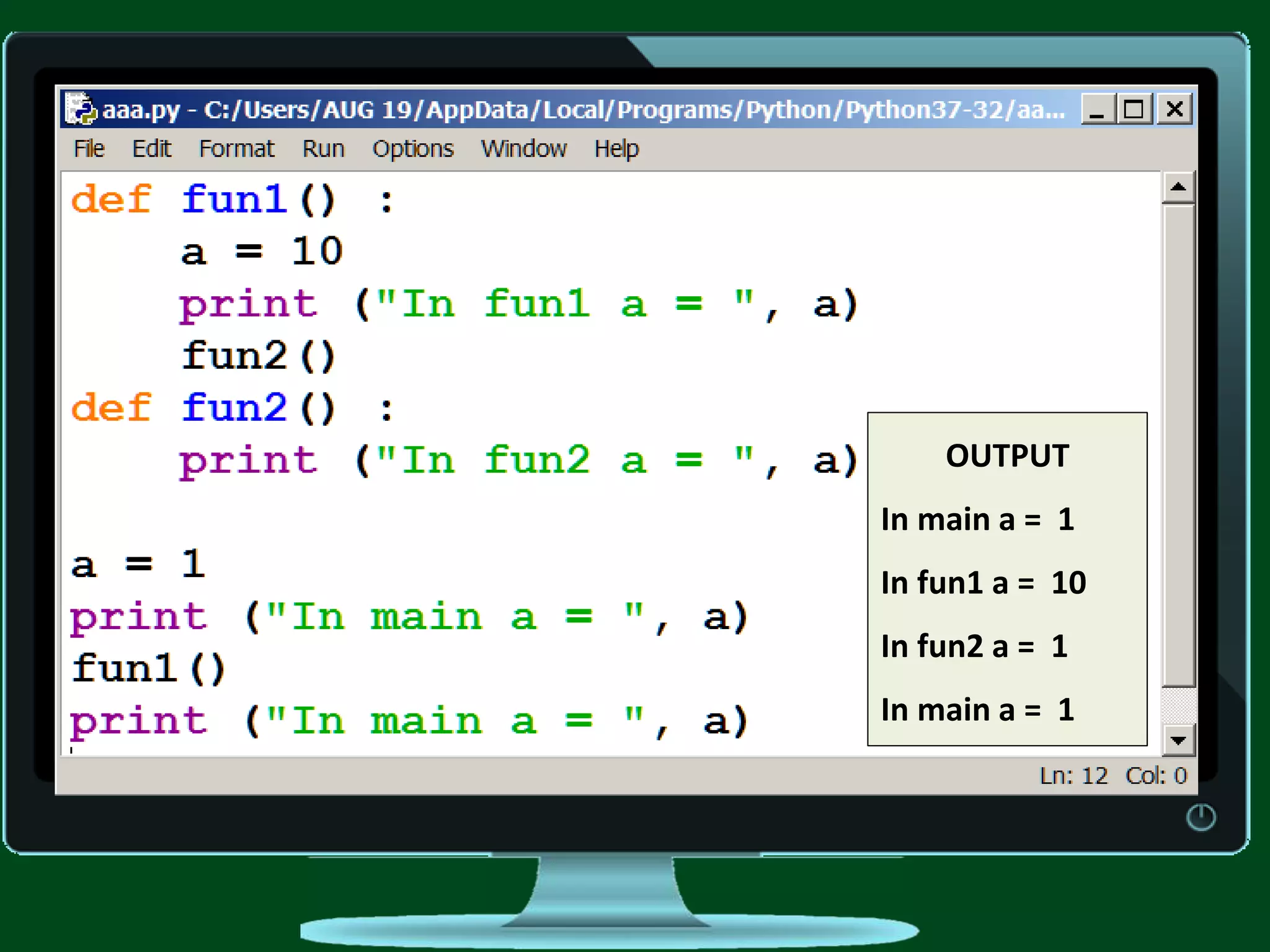

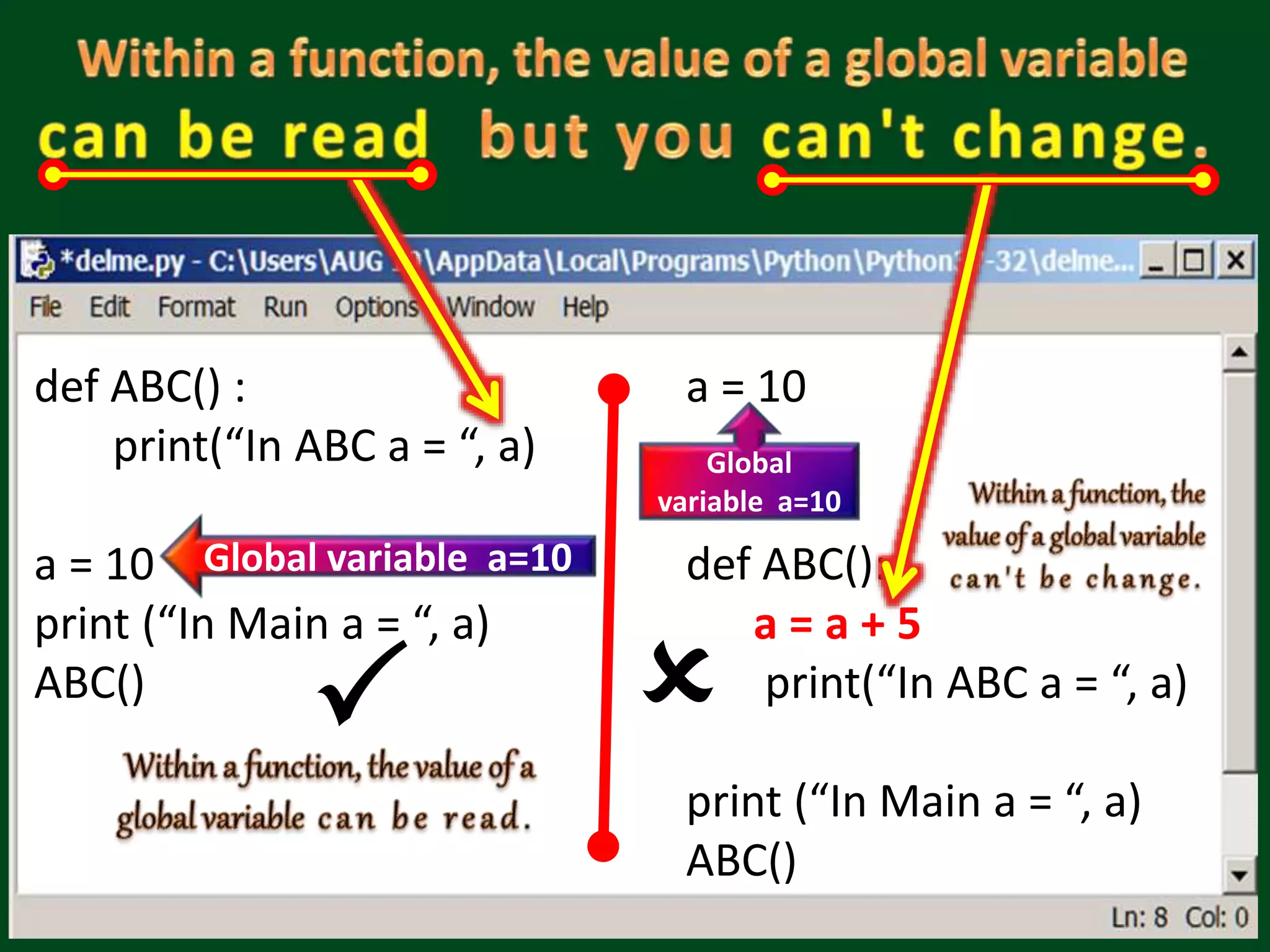
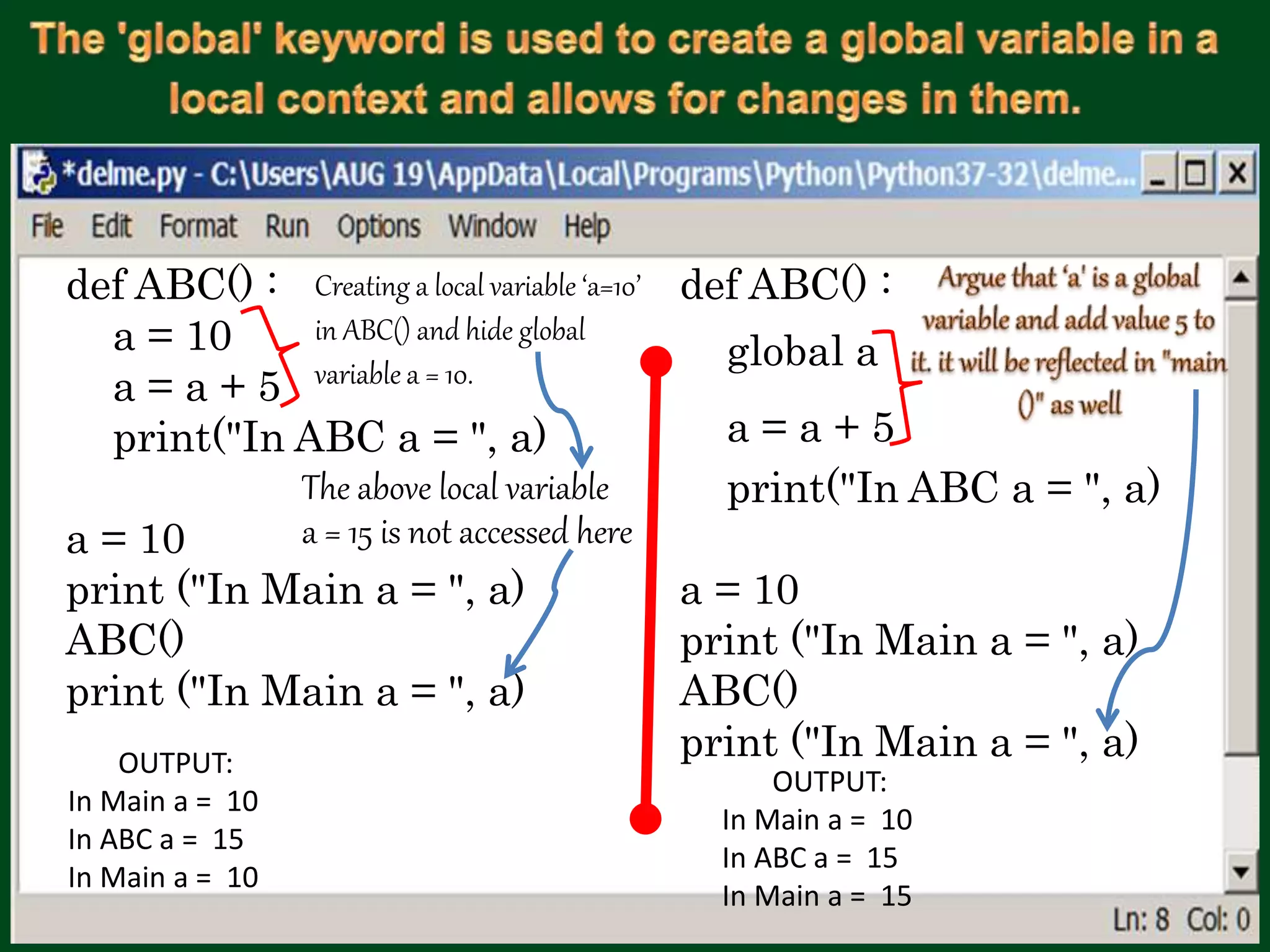
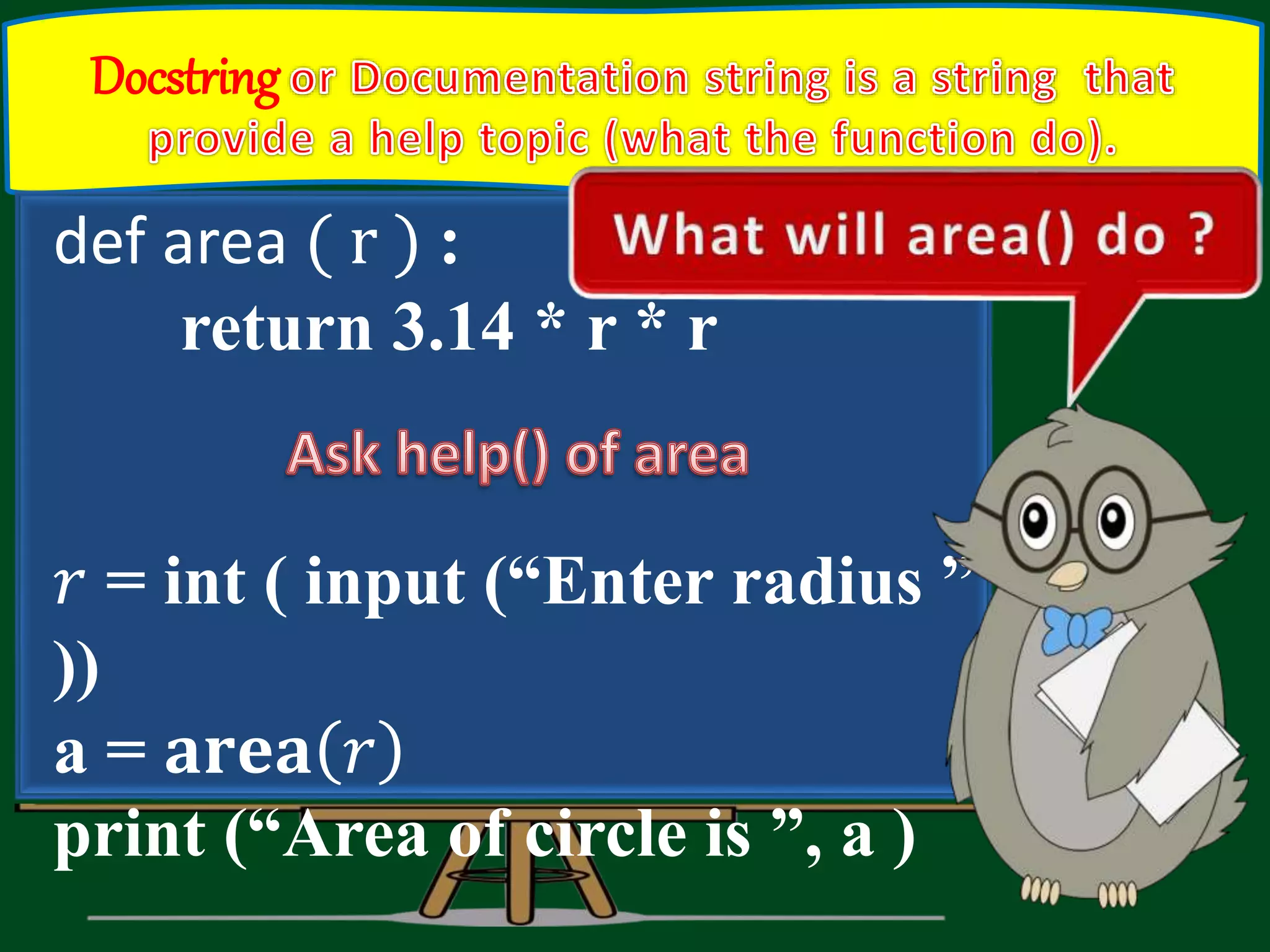
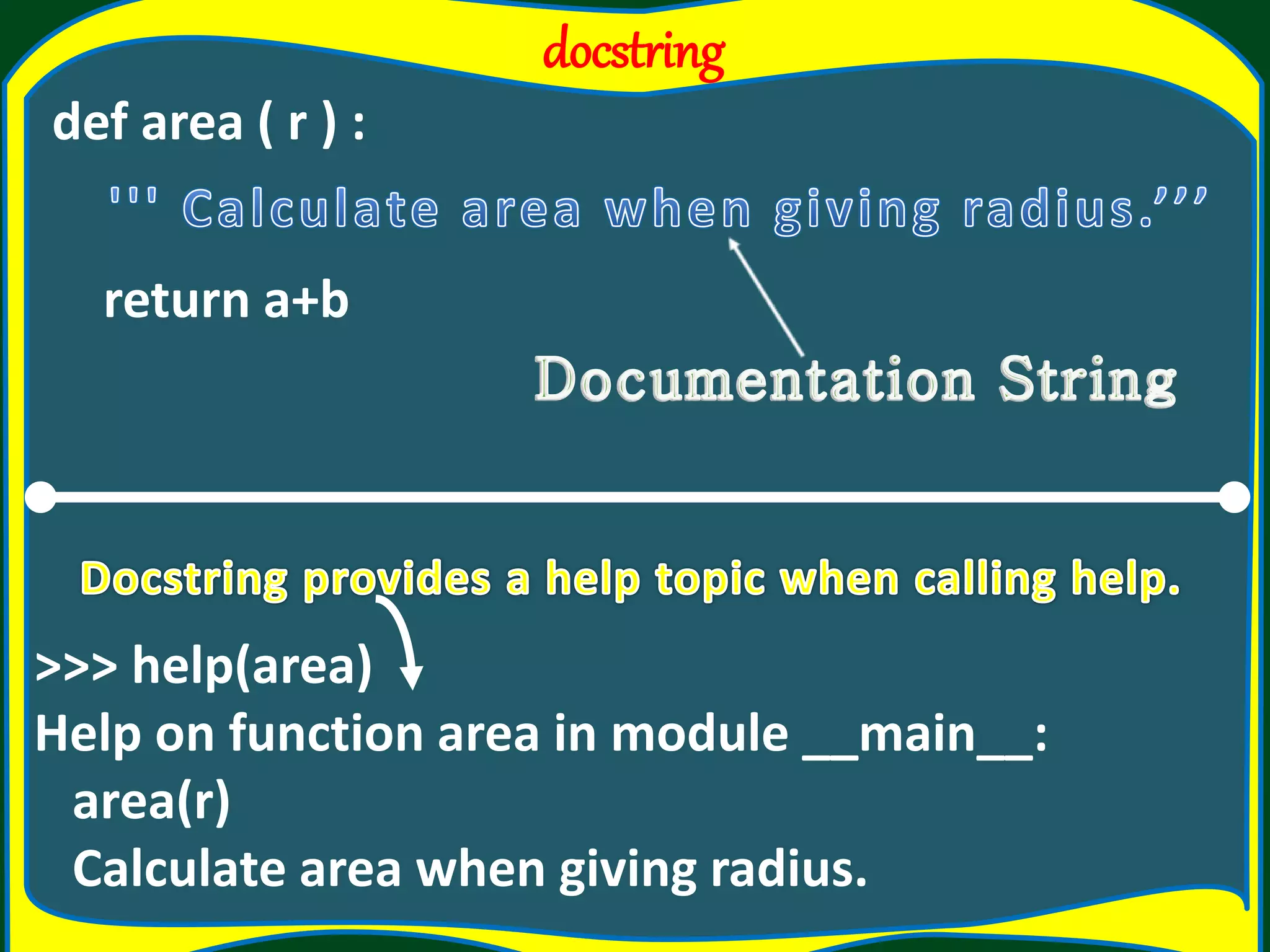
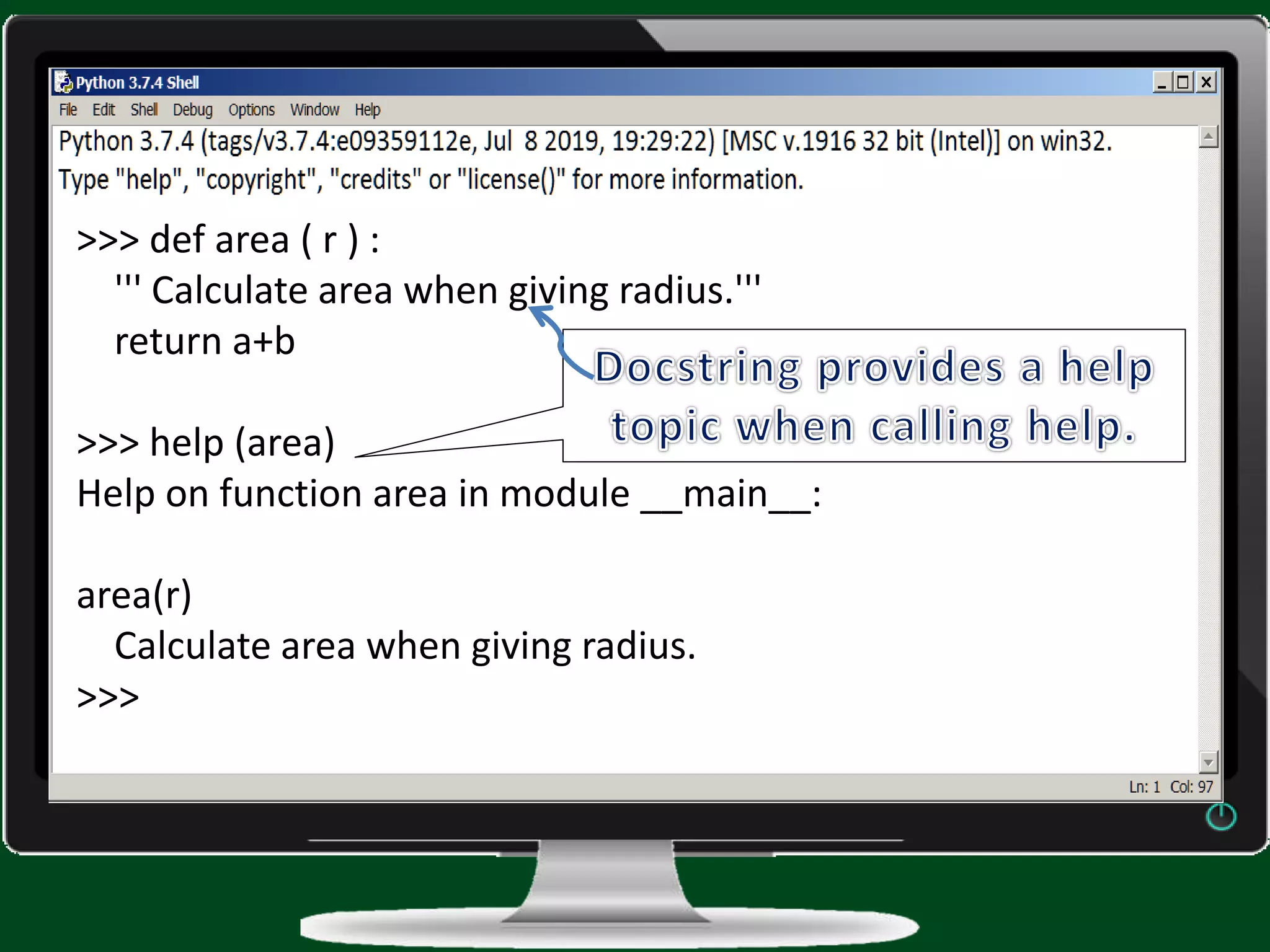
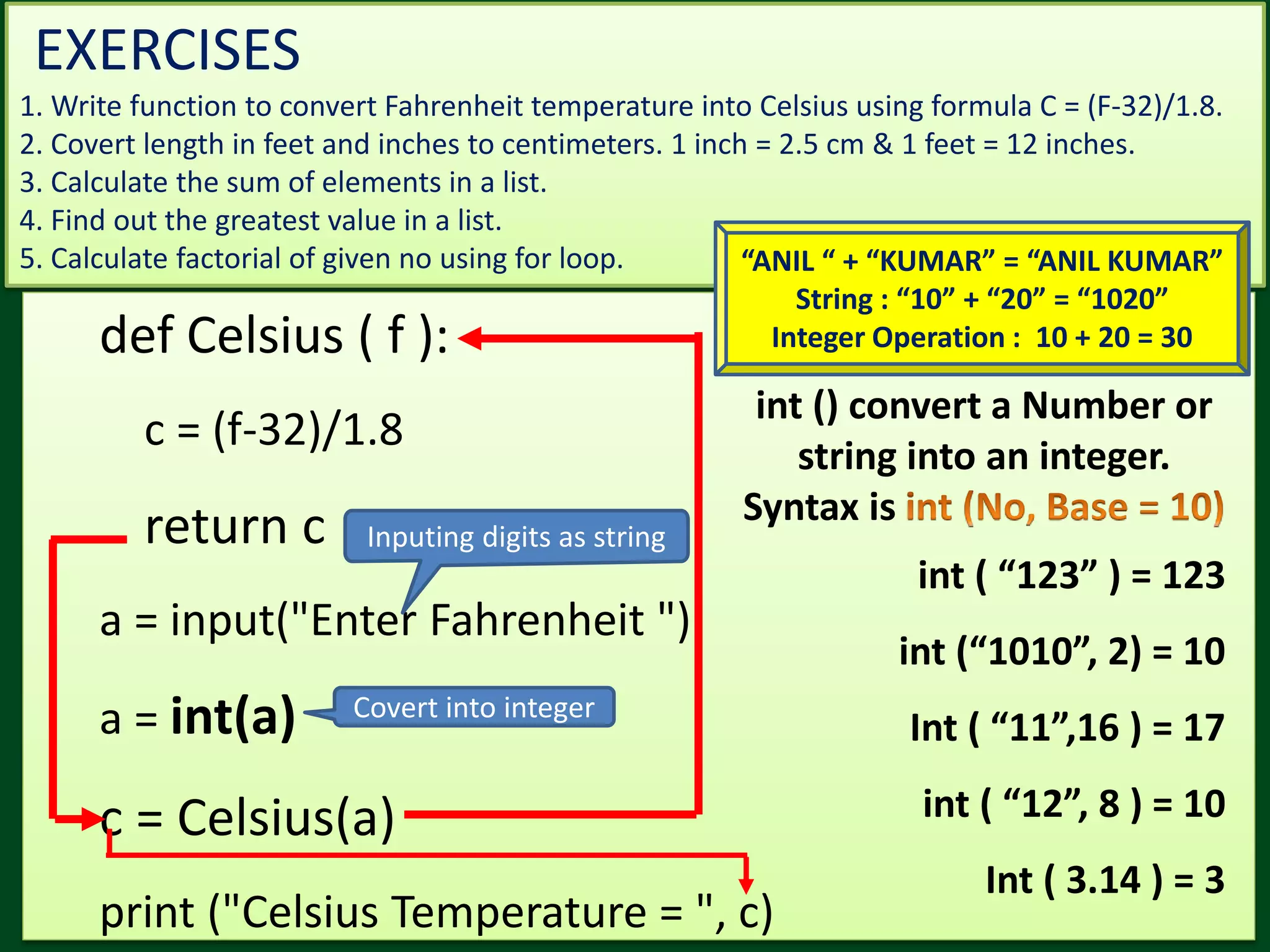
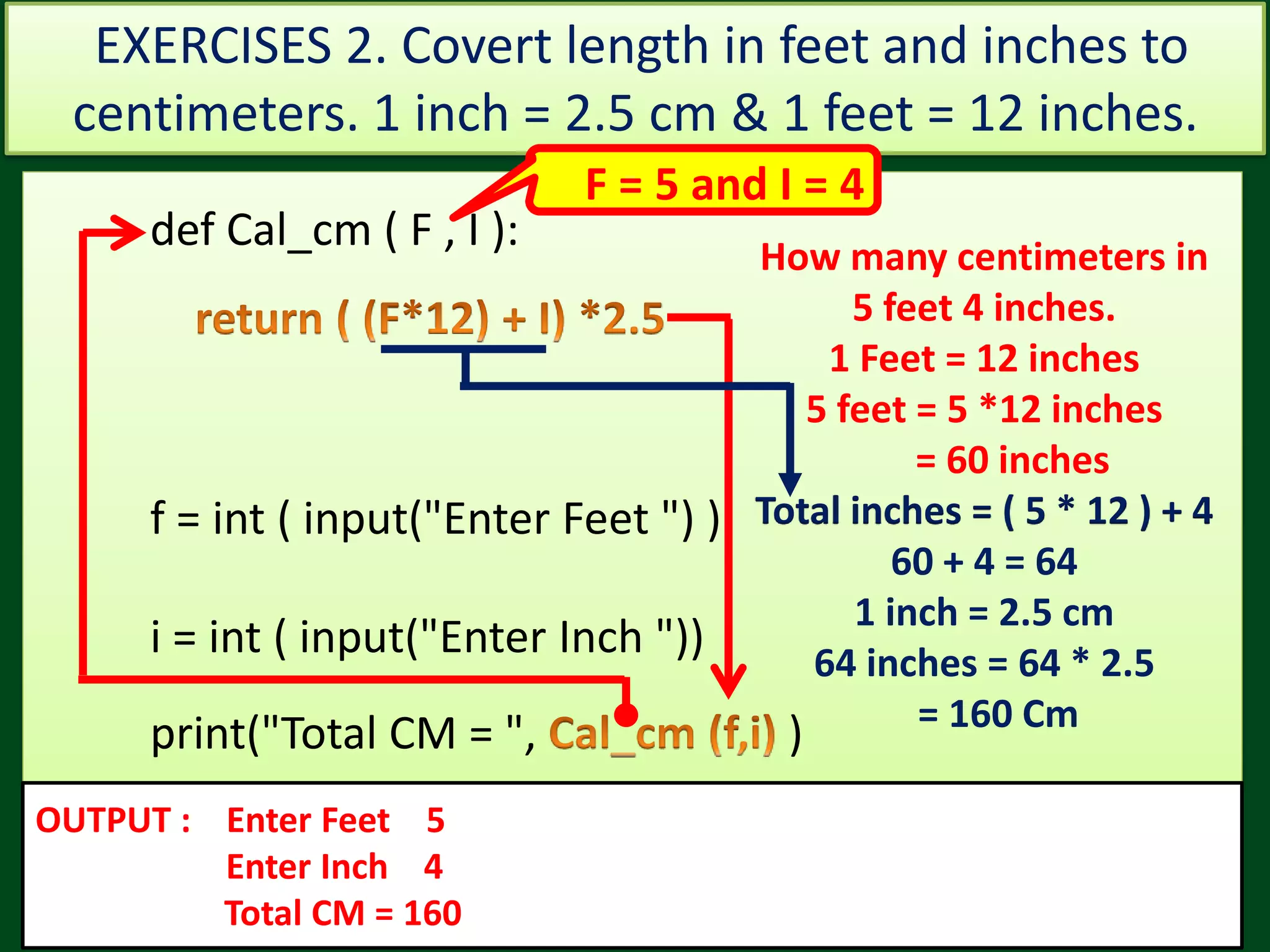
![Val = 73Val = 45 def sum(List) : sum = 0 for val in List: sum += val return sum a = (input("Enter a List ")) print("The Sum of List is ", sum ( a ) ) OUTPUT : Enter a List of Nos [5,10,15,20,25] The Sum of List is 75 “for” loop fetch each item in the list. List = [ 5, 10, 15, 20, 25 ] Step 1: val = 5 sum = 5 Step 2: val = 10 sum = 15 Step 3: val = 15 sum = 30 Step 4: val = 20 sum = 50 Step 5: val = 25 sum = 75 EXERCISES 3. Calculate the sum of elements in a list. Index 0 1 2 3 4 eval() evaluates the string as a Python expression. Input String [5,10,15,20,25], evaluated as a list](https://image.slidesharecdn.com/july25-200710150850/75/FUNCTIONS-IN-PYTHON-CBSE-2-COMPUTER-SCIENCE-89-2048.jpg)
![Val = 73Val = 45 max = List[0] for val in : if val > max : max = val return max print ("The Greatest Value is ", m) slice is an act to getting some elements from a collection of elements. Syntax is list [start : stop : steps] Default value of start is 0,stop is last index of list and step is 1 List[1: : ] = [-38, 56, -92, 73,45 ] List [0:3] = [65, -38, 56] List [1:4] = [-38, 56, -92] List[::] = [65, -38, 56, -92, 73, 45] List [::2] = [65, 56, 73] List [1: ] = [ -38,56,-92, 73,45 ] EXERCISES 4. Find out the greatest value in a list. List = [65, -38, 56, -92, 73,45 ] List = [65, -38, 56, -92, 73, 45 ] Index 0 1 2 3 4 5 Assume Passing[65,-38,56,-92,73,45]](https://image.slidesharecdn.com/july25-200710150850/75/FUNCTIONS-IN-PYTHON-CBSE-2-COMPUTER-SCIENCE-90-2048.jpg)
![Val = 73Val = 45 def greatest ( List ) : max = List[0] for val in List[1:] : if val > max : max = val return max a = eval(input("Enter a list of Nos ")) m = greatest(a) print ("The Greatest Value is ", m) slice is an act to getting some elements from a collection of elements. Syntax is list [start : stop : steps] Default value of start is 0,stop is last index of list and step is 1. List[1: ] = [-38, 56,-92, 73, 45] EXERCISES 4. Find out the greatest value in a list. Step 1: val = -38 max = 65 Step 2: val = 56 max = 65 Step 3: val = -92 sum = 60 Step 4: val = 73 sum = 73 Step 5: val = 45 sum = 73 List = [65, -38, 56, -92, 73,45 ] Index 0 1 2 3 4 5 Passing[65,-38,56,-92,73,45] “for” loop fetch each item in the List [1:]=[-38,56,-92,73, 45](https://image.slidesharecdn.com/july25-200710150850/75/FUNCTIONS-IN-PYTHON-CBSE-2-COMPUTER-SCIENCE-91-2048.jpg)
![Val = 73Val = 45 def greatest ( List ) : max = List[0] for val in List[1:] : if val > max : max = val return max a = eval(input("Enter a list of Nos ")) m = greatest(a) print ("The Greatest Value is ", m) slice is an act to getting some elements from a collection of elements. Syntax is list [start : stop : steps] Default value of start is 0,stop is last index of list and step is 1. List[1: : ] = [-38, 56, -92, 73,45 ] EXERCISES 4. Find out the greatest value in a list. Step 1: val = -38 max = 65 Step 2: val = 56 max = 65 Step 3: val = -92 sum = 60 Step 4: val = 73 sum = 73 Step 5: val = 45 sum = 73 List = [65, -38, 56, -92, 73,45 ] Index 0 1 2 3 4 5 OUTPUT : Enter a List of Nos [65, -38, 56, -92, 73,45] The Greatest Value is 73 [65,-38,56,-92,73,45]](https://image.slidesharecdn.com/july25-200710150850/75/FUNCTIONS-IN-PYTHON-CBSE-2-COMPUTER-SCIENCE-92-2048.jpg)
